







Q&A: Mitchell Owens
Gaglio Collection Is Gangbusters For Giampietro
Successful Auction Weekend At Sarasota Estate Auctions
Dressed To Win: Blankets & Masks Top Heritage Ethnographic Art Auction
Paper Town Show Offers Over 200 Years Of History
Glass Lamps & Fine Jewelry Steal The Spotlight At Morphy Auctions
Leland Little Has White Gloves Handy For Fine & Decorative Arts
At Milestone Auctions Studebaker Art Deco Sign, LV Car Trunk Take Bidders On A Road Trip
Nye Kicks Off Father’s Day Weekend With Gentleman Collector Auction
Walker Homestead Show: Primitives Pure & Simple
Picasso Lithograph & Fine Jewelry Lead DuMouchelles’ June Sale
Rugs Are All The Rage At Grogan
Vintage Car, Baseball Cards, Northwest Totem Lead Schultz Auction
Monhegan Museum Of Art & History— A Common Bond: Women Artists Of Monhegan Island

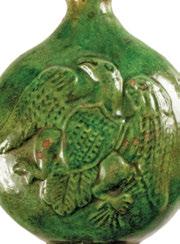
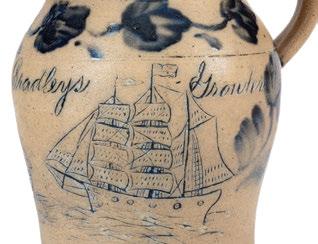

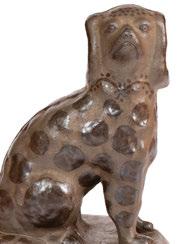
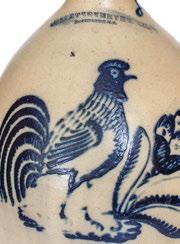



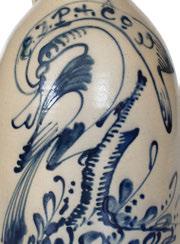



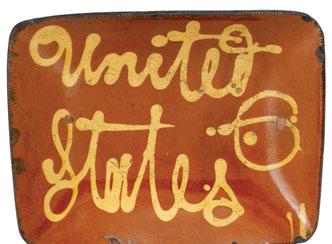

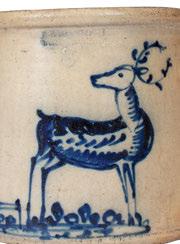

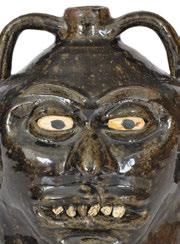


R A R E P O S T E R S AT A U C T I O N J U LY 1 1 V I E W I N G : D A I LY T H R U J U LY 1 0
FEATURED COLLECTIONS: Levi’s Jeans, Aviation, Bicycles, Automobiles, Travel, War & Propaganda, Buffalo Bill
PRINCIPAL ARTISTS: Broders, Cappiello, Chéret, Colin, Haring, Loupot, M c Mullan, Mucha, Steinlen, Toulouse-Lautrec BID ONLINE, BY PHONE, OR LIVE IN PERSON: To view lots or register to bid, please visit: www.posterauctions.com
Download our app at auctions.posterauctions.com. Now accepting consignments for our fall sale. Deadline: September 13.
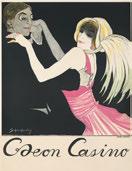


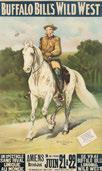
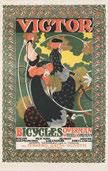

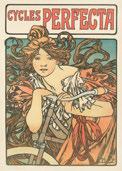









You won’t be on the 2nd & 3rd! Friends. Family. Fireworks. Forget ‘em. Old Kinderhook Auction Company patriotically presents our July auction event, one that will pale all that comes after. Day one comes to town with some dandy American art and fine frames, followed by a trove of ephemera so vast it may very well contain all of America’s Founding Documents, some in triplicate. Day 2 will celebrate the riches that make this country grand, including gold, electric lighting, outdoor furniture to frolic upon, and some outsider art to keep it weird. Hot Dog, Hot Dog, Hot Diggity Dog.


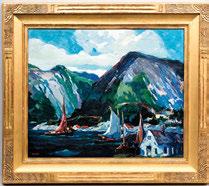
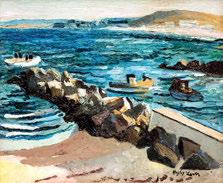

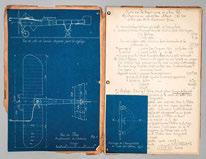

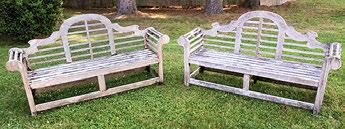
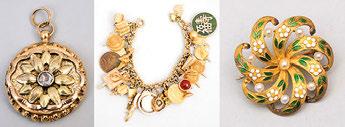










The Magazine ANTIQUES recently welcomed as its new editor Mitchell Owens, a passionate, eloquent observer of decorative arts and design. Over a worldly career that has spanned several decades and a host of best-selling publications, the selfdescribed magpie of history has traveled widely in search of colorful, compelling stories to share with readers. He aims to bring the same sense of wonder and excitement to the pages and platforms of Antiques.
What should antiquarians know about you?
Other than an honorary degree from the New York School of Interior Design, I’m a complete autodidact. In some ways I’m an amateur, in the best, original sense of the word. I do deep dives into subjects and come up able to converse with the real experts. I like to seek out the obscure maker, the understudied object, the overlooked connoisseur, largely because I want to learn something new.
Your editorial predecessors at Antiques range from the gregarious Homer Eaton Keyes (1875-1938) and Wendell Garrett (1929-2012) to the more circumspect Alice Winchester (1907-1996). What kind of editor will you be?
I hope to be a bit of all. I'm very much interested in the details of how the magazine looks and sounds, how the paper feels, the quality of the images. I want the publication to be exceptional and distinctive in every detail. But I also like getting out and hope to be very much visible and accessible.
What is your vision for the publication, or should I say brand?
Everything to me is stories. Antiques is an important vehicle for telling new stories — revealing new research and introducing readers to new characters and collectors, meaning collectors of the past as well as the present. I want to appeal to people who love antiques, love history, love deep, rich narratives. I want to open a wide door onto a world some mistakenly think of as narrow and stuffy. Collections are fascinating, the people who

assemble them even more so, especially collectors who are deeply articulate about what they collect and why. The idiosyncrasies of collecting fascinate me most of all.
You excel at bringing objects and interiors to life in your own writing. How will you bring that vitality to Antiques?
Objects may be inert but they're seductive. I’m the sort of person who’s constantly touching things if
left unsupervised. I love the way things feel, what they are made of, the quality of the materials, even the lack of quality. When I’m in an archive reading about a furnituremaker, I’m looking for the telling quote, the overlooked bill, how can I build a story around a detail. I want our writers to be passionate, too, and our writing to remain detailed and scholarly but colorful. Antiques are anything but staid.
You spoil your 39,500 Instagram followers @mrmitchowens with daily doses of beauty, adventure, curiosity and windows onto gracious living. Will you bring those qualities to Antiques?
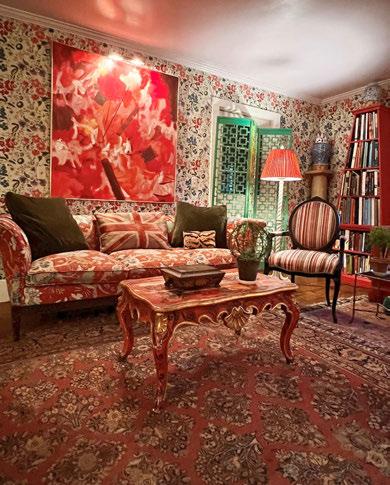
My Instagram feed shows what's going on in my head. I tend to be interested in new research that makes us look at an object in a completely different way than we did the day before. I’m fascinated by provenance. The dealer Louis Bofferding is one of my oldest friends in New York. He and I can spend an entire dinner talking about who owned a chair. Getting into the nitty gritty of things is a huge personal pleasure and I’m eager to produce stories that will stand as the last word, at least for a while. For Antiques, I envision a website that is nimble, newsy and daily in its posts. I’d love us to have another podcast or two. The staff and I have an extremely elastic envelope and can pack anything we want into it. You should feel you haven’t really feasted on Antiques unless you’ve made yourself a regular visitor to the website, our Instagram feed and newsletters. I want people to be obsessed.
Might you tell us about your family?
My husband, Matthew Zwissler, is an antiques dealer and designer of furniture. He
( continued on page 8
R. Scudder Smith, Founder (1963) Helen W. Smith
Sherri Smith Baggett Co-Publishers
PUBLISHED EVERY WEEK BY The Bee Publishing Company Newtown, Connecticut 06470
Periodicals Postage Paid at Newtown, Connecticut 06470
Madelia Hickman Ring, Editor W. A. Demers, Senior Editor Laura Beach, Editor At Large Carly Timpson, Assistant Editor Rick Russack, Contributing Editor Cindie Gannon, Advertising Manager 203-426-8036 (antiques advertising only) or 203-426-3141 (subscription and other information) or Fax. 203-426-1394 email (advertising) - ads@thebee.com email (subscriptions) - subscriptions@thebee.com email (editorial) - antiques@thebee.com
ADVERTISING RATES
Display: $19 per column inch Auction: $25.20 per column inch
(Early) Auction: $22.50 per column inch for ads received prior to 10 am Thursday, for the next
Payment must accompany ad unless credit has been established DEADLINES: All display advertising and editorial material must be received by Friday at 10 am; Auctions by Monday at 10 am (except Early Auctions - see above) for the issue dated the following Friday.
PAGE LOCATION MAY BE REQUESTED AND WILL BE FOLLOWED IF POSSIBLE
ADVERTISING POLICY
Antiques and The Arts Weekly reserves the right to refuse any advertisement submitted for publication. Further, it cannot guarantee the quality of services advertised in its pages, nor the unquestionable authenticity of objects advertised and it cannot accept any responsibility for misunderstandings that may arise from the sale or purchase of services or objects advertised in its pages. Advertising position is not guaranteed - will be honored, if possible.
POSTMASTER: Send address changes to THE BEE PUBLISHING CO, 5 Church Hill Road, Newtown, CT 06470-5503
SUBSCRIPTION INFORMATION 1










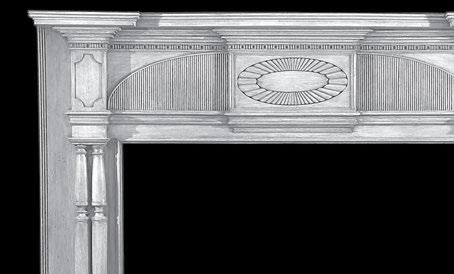






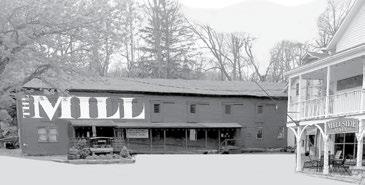



SOUTH GLASTONBURY, CONN. — June of 1876 is famous for several reasons. The Battle of the Little Big Horn was fought that month; the Centennial Exhibition was underway; and Julia Smith’s Bible, the first translated by a woman from the Hebrew and Greek into English, was published. Oh, and that same year in that same month Julia and Abby Smith won their lawsuit against the Town of Glastonbury's tax collector, George C. Andrews for illegally seizing 15 acres of their land for back taxes.
A first edition copy of Julia Smith’s recounting of that battle is a Connecticut River Book Auction offering in its July 12 sale at the South Congregational Church.
The story of this little known struggle for women’s rights began in 1873 when this tax collector reassessed their property and that of other women in town but not that of male landowners. The sisters, already well-known for their pro-suffrage views, refused to pay this levy. As Abby stated outside town hall: “Now all we ask of the town is to put us on an equality with these men, not to rule over them as they rule over us, but to be put on an equality with them. Is this an unreasonable request?”
The initial action of Glastonbury's tax collector was to seize Abby’s seven cows, which were then auctioned for payment of back property taxes in the amount of $101.39. Family friends purchased the cows, and Abby had her livestock returned.
This battle of wills continued, culminating in 1874 with the decision by the tax collector to sell off prime meadow land valued at thousands of dollars for less than $80. The auction to
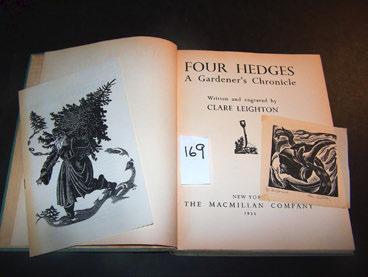
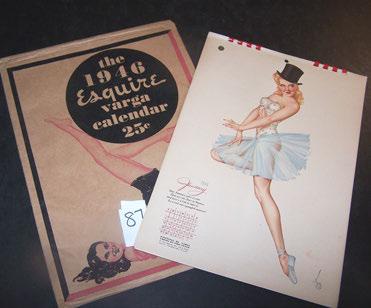
sell that property that should have happened never did. Rather, the tax collector sold the land in a private transaction. That act is what led to the lawsuit that eventually led to the Smith sisters’ legal victory.
Given Julia’s intellectual prowess, it should not be surprising that she would wage a battle of the wits with (what
can only be considered in retrospect ) a dim witted Glastonbury official. Proving that the pen is truly mightier than masculinity, her letters drew national attention to their cause. Gathering these letters and other communications, she published in 1877 Abby Smith and Her Cows. This softcover 94-page volume in faded peach-
PRINCETON, N.J. — Morven Museum & Garden will host its annual Fourth of July Jubilee on Thursday, July 4, from noon to 3 pm.
This year's focus is Civic Season, a national program of activities connecting Juneteenth and July 4 to better understand the past and shape the future. This free community event includes family-friendly interactive activities and crafts inspired by history, civics and service themes. Attendees are invited to enjoy tours of Morven’s gardens; live music with Vintage Vibe Tribe; Oink & Moo BBQ, The Empanada Guy and Kona Ice food trucks; face painting with Maya B. the Facepaint Fairy, and a unique opportunity to “sign” the Declaration of Independence.
In 1783, Morven hosted Congressional delegates, marking Independence Day. Now, more than 241 years later, the museum continues this tradition, utilizing its role as the home of a signer of the Declaration of Independence (and New Jer-
sey’s first Governor’s mansion) to engage the public in activities that explore history and what it means to be an engaged citizen.
Community partner organizations include the Historical Society of Princeton, Paul Robeson House of Princeton, People & Stories/Gente y Cuentos, Princeton Academy of Art, Princeton Public Library, Stoutsburg Sourland African American Museum, YWCA Princeton, Witherspoon-Jackson Historical and Cultural Society.
Half-price tickets will be available for the museum. The current exhibition, “Morven Revealed: Untold Stories from New Jersey’s Most Historic Home,” explores the lesserknown stories of Morven and its residents. The museum’s second-floor galleries take a thematic look at subjects recognizable to many American families: childhood, hosting guests, pets, fashion and more.
The 2024 Fourth of July Festival is sponsored by Baxter Con-
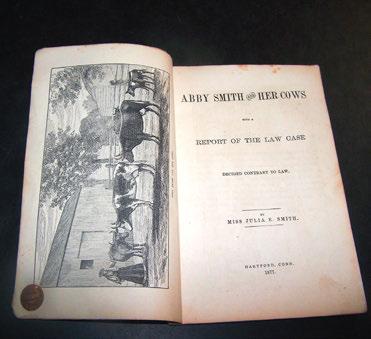
colored wrappers is a joy to read and given its small printing is a sought-after work of early suffragette writing.
The first edition copy that Connecticut River Book Auction is offering at its July 12 sale has moderate wear to the covers. The frontispiece drawn by Abby of herself with five of her cows is present. This copy has the signature of Dr Charles Douglas of Hebron (a neighboring town) on the front cover. It is likely this copy was owned by his wife, Ida Porter Douglas, who was, herself, a suffragette.
The South Congregational Church is at 949 Main Street. For information, www.ctriverbookauction.com or 860-9088067.

struction, Blue Sky Green Earth and Fulton Bank.
This is a good weather event only. If rain is forecast, visit www.morven.org for event updates.
Morven Museum & Garden is at 55 Stockton Street. For more information, 609-924-8144.

•ALL BETTER ART, especially CONTEMPORARY ART: incl. any BASQUIAT, WARHOL, HURST, etc.
•ALL BETTER WATCHES incl. any ROLEX PATEK, VACHERON,






MONHEGAN ISLAND, MAINE — The Monhegan Museum of Art & History has announced its summer exhibition, “A Common Bond: Women Artists of Monhegan Island,” featuring the remarkable legacy of the Women Artists of Monhegan Island (WAMI). The exhibition runs through September 30, showcasing the artistic contributions of this influential group over nearly three decades.
Founded in 1990 by Elena Jahn and Frances Kornbluth, WAMI emerged with the noble goal of enhancing opportunities for women to exhibit their art both on and off Monhegan Island. Comprising a vital part of the Monhegan art community for almost 30 years, the group built upon a rich tradition of over a century of women
artists on the island. Beyond providing exhibition opportunities, WAMI served as a platform for members to convene, discuss their art and share their experiences as women and artists on Monhegan.
The exhibition features 16 long-term members of WAMI, offering a glimpse into the diverse artistic expressions that flourished within the group. The accompanying catalog includes reproductions of artworks by all former members, providing a comprehensive overview of WAMI's impact on the artistic landscape. Notable initial participants include Sylvia Alberts, Nancy Thompson Brown, Ruth Boynton, Jahn and Kornbluth.
The Women Artists of Monhegan Island have left an indelible mark on the island's



artistic heritage, fostering a community that celebrates stylistic diversity and embraces the common bond forged through their shared experiences. Former WAMI artists who continue to contribute to the art world include Dyan Berk, Kate Chappell, Joan Harlow and Sylvia Murdock.
The museum’s director, Jennifer Pye, expressing enthusiasm for the exhibition, said, “The Women Artists of Monhegan Island have played a pivotal role in shaping the artistic narrative of our community. 'A Common Bond' not only showcases their remarkable talent but also pays tribute to the enduring connections that have sustained this collective for decades."
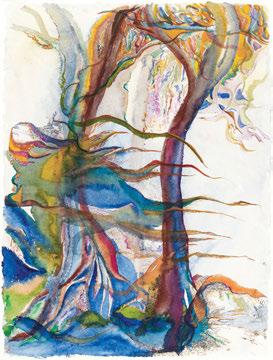

The 100-page publication A Common Bond: Women Artists of Monhegan Island presents an exciting compilation of 67 paintings and historic photographs from the Women Artists of Monhegan. The book includes a foreword by Pye, and contributions by Emily Grey, curator of the Monhegan Museum of Art & History; Susan Danly, independent curator; Kate Cheney Chappell, WAMI artist; and Lisa Jahn-Clough, daughter of WAMI artist Elena Jahn. The catalog will be available for purchase at the museum this summer or online.
The Monhegan Museum of Art & History is at 1 Lighthouse Hill. For information, www.monheganmuseum.org or 207596-7003.
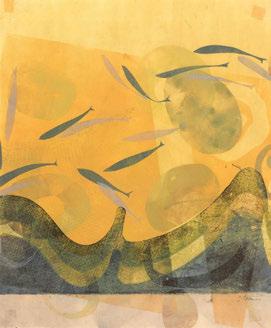



Nauset Antiques, which specializes in Americana and primitives/country, will be showing this tea box.
SANDWICH, MASS. — The Cape Cod Antique Dealers Association is hosting an antiques show in July, the Third Annual Summer Antiques Show. The event will be conducted outdoors Thursday, July 11, 10 am to 3 pm under the pavilion and on the lawn behind the Clark-Haddad American Legion Post 188. Last year’s show was wildly suc-

Marie’s Memories will be showing jewelry, women’s accessories, glassware and pottery.
cessful, said organizers, and this year’s show promises to continue the trend.
Dealers from across the Cape and throughout New England will present a wide array of
Eighteenth, Nineteenth and early Twentieth Century antiques. Both long-time collectors and new buyers will find American country furniture; garden antiques; tools; pottery;

glassware; paintings; jewelry; books; cooking items; baskets; decorative items; and more. There is ample free parking and there will be food and seating for lunch available. The show is a wonderful way to spend the day for both the serious and casual collector or antiques buff.
Admission to the show is $8, $7 with a show card or ad, children under 18 and students with IDs
will be admitted free. Proceeds from the show, as with all CCADA shows, will benefit the association’s Cultural Enrichment Fund. Through this, CCADA helps to enrich and preserve history.
The Clark-Haddad American Legion Post 188 is at 20 Main Street (Route 130 near Route 6A). For information, 508-2558720 or www.ccada.com.
RALEIGH, N.C. — The Gregg Museum of Art presents “Material Messages: The Tales That Textiles tell” on view through January 25, 2025. For thousands of years cultures around the world have used cloth as a means of visual communication — a way to document, celebrate, commemorate and depict events large and small. Nonverbal tools play an important role in interactions within and between cultures, as verbal communication comprises only a small part of the ways that we, as human beings, share information and connect with each other. “Material Messages” features textiles created by a diversity of global artists that highlight this communication through cloth. In the way that in western
culture a wedding dress is cherished and passed down to the next generation or a t-shirt reminds us of a favorite concert, cloth contains both meaning and memory. The works in this exhibition were created by artists who developed unique vocabularies to express and record meaning through techniques including color, pattern, motif, weaving, dyeing, embroidery and appliqué. They are storytellers and culture bearers, and their work expresses how various cultures communicate messages through their particular cloth-making practices.
In many cases, the materials used for these textiles are deeply connected to the environments of the cultures who produce them. A dance skirt from the Democratic Republic


of the Congo is created from the bast fibers from a Raphia Palm tree, native to the country. An Inuit inlaid appliqué fur cloth is made of skin from caribou and seal, animals which are a part of the traditional foods in this area. In this way, a garment or piece of cloth becomes, even in its most elemental parts, a document of people and place. Most of the items in this exhibition are handmade, with a particular visual char-
acter distinct from industrially manufactured textiles. And in the way that a good book might have folded corners and faded pages, these textiles bear the marks and scars of use that in themselves tell a story. These cloths are rooted with the narratives of daily life, ceremony, celebration and death, and their making can be as sacred as their ultimate use. In some cultures, they would be blessed by priests as they are construct-

ed; in others, artists would use special hand-carved tools that invoke the assistance of the ancestors to aid in their creation. Whether or not the makers’ main mission was to create a work of art, the artistry and craftsmanship embedded in their creations is undeniable.
The Gregg Museum of Art & Design is at 1903 Hillsborough Street. For information, www.gregg.arts.ncsu.edu or 919-515-3503.



BOSTON — On June 12, Grogan & Company conducted its Fine Rugs & Textiles auction, offering 260 lots of rugs, carpets and textiles from various regions and notable collections. The sale realized $674,000. Grogan & Company founder and rug expert Michael B. Grogan remarked, “The results of the rug auction highlighted the fact that the strength of the rug market is for rare and collectible items. Seven of the top 10 lots exceeded their estimates and were purchased by discriminating international collectors and dealers. Combined with the Kaffel Collection Rug auction held in January, Grogan & Company has sold more than $2.6 million in collectible rugs this year.”
“This sale attracted high-
quality bidders from around the world,” commented Lilia Hutchins, marketing coordinator for Grogan & Company. There were registered bidders from 72 countries, and more than 8,000 bidders registered overall.
A circa 1875 Alpan Kuba rug led the sale, crossing the block for almost two and a half times its high estimate. It hailed from the Caucasus Mountains, located between Persia and Russia, in modern-day Azerbaijan. The Kuba region was the largest rug center in Azerbaijan, and produced more than 12 subtypes of carpets, including Alpan, each named after the tribe which created them.
Alpan carpets, like this example, were known for their medallion designs, most often

This circa 1850 Gendje rug from the Caucasus region hailed from the collection of Daniel B. Brewster. The 8-foot-2-inchby-4-foot rug was also sold on April 8, 2014, at Christie’s London and was featured in Ian Bennett and Bassoul Aziz’s Rugs of the Caucasus: From Three Private Lebanese Collections (Beirut, Lebanon, 2003). It sold to a New York collector for $11,250 ($7/10,000).

The second-highest selling lot was this East Turkestan carpet measuring 10 feet 6 inches by 6 feet 1 inch. It was dated circa 1800 and went to a Greenwich, Conn., collector for $25,000 ($20/30,000).
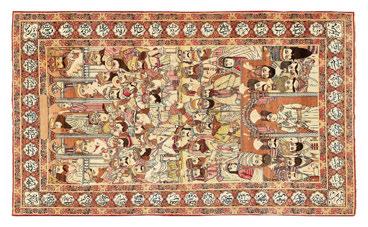
This circa 1900 Kirman pictorial rug hailing from Persia was “very rare and sought-after,” according to Hutchins, and measured 7 feet 11 inches by 4 feet 9 inches. It sold to a European dealer for $11,875, more than two times its high estimate ($3/5,000).

Leading the sale was this Alpan Kuba rug from the Caucasus region, dated circa 1875. It measured 11 by 4 feet and realized $28,125, more than two times its high estimate ($8/12,000).
surrounded by gul and crawfish motifs. The most recognizable colors used in Alpan carpets were dark green and yellows. This particular example, measuring 11 by 4 feet, came from the estate of a Martha’s Vineyard rug collector. “It was his favorite rug,” explained Hutchins. “The condition was immaculate, the color palette saturated and appealing.” It sold to a San Francisco rug collector for $28,125.
Earning $25,000 was a carpet from East Turkestan, dated to circa 1800. The 10-foot-6-inchby-6-foot-1-inch carpet once belonged to a Long Island, N.Y., collector before being consigned by Grogan. These carpets were made in the Xinjiang region in the northwest of China, combining the styles of Chinese and Middle Eastern weavers. Many East Turkestan carpets tended to make use of smaller design elements as space-fillers, more similar to western Oriental rugs, rather than using the more spatial design

Earning $23,125 was a Persian Bakshaish carpet, circa 1850, which measured 10 feet 5 inches by 8 feet 7 inches. It sold to a New York City dealer ($5/10,000).
approach that Chinese rugs were known for. Xinjiang’s position as a stop on the Silk Road allowed for this combination of cultures to influence weavers.
Categorized as “rare” in the auction catalog was a Bidjar Garus carpet from Persia, hailing from the first half of the Nineteenth Century. The carpet came from an upstate New York rug collector, “and was the centerpiece in his living room for over 20 years,” explained Hutchins. Bidjar, a small city in northwest Iran, was established as a center of carpet production some time in the Sixteenth Century, and played an essential role in the industry, mostly due to the quality of the wool from the region. Known as the “iron carpets of Persia,” Bidjar Garus carpets are praised for their long life and durability due to the unique way they were crafted. Weavers would add an extra row of weft between each row of Turkish knots, and would wet the weft before inserting it, so that it would shrink and tighten when it dried. They would also beat the rows down heavily with a comb to create a dense and heavy carpet. Garus referred to the split-arabesque design that particular Bidjar carpets had, which combined florals and geometrics. Typical colors used in a Bidjar Garus carpet were midnight or cobalt blue, like this example. “The unique design led to spirited bidding,” said Hutchins. It ultimately went to a Seattle collector for $25,000.
by

This Persian Kirman Millefleur carpet was estimated at just $5/8,000, but sold for $15,600 to a Florida collector. The 11-foot-10-inch-by-8-foot-1-inch rug came from a Vermont family and was dated circa 1920.
“This rare Persian carpet almost doubled its high estimate,” explained Hutchins about a Bakshaish carpet, which was discovered in a historic Rhode Island house and earned $23,125. The example she waas referring to hailed from a town on the banks of the Talke Rud River in northwest Persia, dated to circa 1850 and measured 10 feet 5 inches by 8 feet 7 inches. Bakshaish was the oldest rug weaving village in the region of Persian Azerbaijan and was known predominantly for its highly artistic carpets that contained a diverse array of abstracted adaptations of age-old tribal and classical Persian motifs, including folkloric characters. Weavers often used soft reds and navy tones for the base color, but many were also ivory-colored or made from golden camelhair. Most commonly, Bakshaish carpets were home crafted, woven in room size or oversize on looms attached to the weaver’s home. Grogan & Company’s Fall Fine Art and Fine Jewelry sales will take place on November 2 and 3. They are accepting consignments through August. The firm’s next rug auction will take place in January and consignments are already being accepted.
Prices quoted include the buyer’s premium as reported by the auction house. For information, www.groganco.com or 617-7202020.
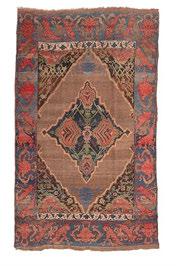
Rounding out the top three best selling lots of the sale was this Bidjar Garus carpet from Persia, dated from the first half of the Nineteenth Century and measuring 11 feet 9 inches by 7 feet. It crossed the block for $25,000, landing comfortably within estimate ($20/30,000).
SAN FRANCISCO — A major commission by Kara Walker is on view in San Francisco Museum of Modern Art’s (SFMOMA) admission-free, street-level Roberts Family Gallery. The complete title for the presentation is “Fortuna and the Immortality Garden (Machine) / A Respite for the Weary Time-Traveler. / Featuring a Rite of Ancient Intelligence Carried out by The Gardeners / Toward the Continued Improvement of the Human Specious / by Kara E-Walker.”
After opening July 1, it will remain on view through May 2026.
The presentation marks the first time that SFMOMA has commissioned an artist to create a site-specific installation for the Roberts Family Gallery, following other major exhibitions in the space, including Diego Rivera’s “Pan American Unity,” JR’s digital mural “The Chronicles of San Francisco” and Richard Serra’s “Sequence.” The presentation is accompanied by a broad range of public programs inspired by ideas introduced in Walker’s work, as well as a publication designed by the New York-based studio, Pacific, and featuring newly commissioned texts.
Walker has long been recognized for her incisive examinations of the dynamics of power and the exploitation of race and sexuality. Her work often leverages expressions of fantasy and humor to confront troubling histories and dominant narratives, repossessing control in the process. In the last decade, Walker has extended her practice beyond her signature cut-paper silhouettes and drawings to embrace monumental installations that further challenge communal memory as shaped and concretized through the institutions of state, museum and church. Featuring a complex landscape of mechanized sculptures and elaborate displays, “Fortuna and the Immortality Garden (Machine)” marks Walker’s most ambitious large-scale public project to date.
Organized by Eungie Joo, SFMOMA’s curator and head of contemporary art, with whom Walker has worked multiple times over the past 27 years, “Fortuna and the Immortality Garden (Machine)” is inspired by a wide range of sources, from antique dolls to Octavia Butler’s novel Parable of the Sower, to Bunraku puppetry and historical ephemera. Through Walker’s singular vision, these disparate references come together to examine the fear and loss we experienced
as a global society during the Covid-19 pandemic and to address more broadly the memorialization of trauma, objectives of technology and how we might transcend the ills that plague contemporary society. Automatons serve as stand-ins for human experience, situated within a vast garden of black obsidian — a volcanic glass with deep spiritual and material history thought to repel negative energies and heal past traumas. The work offers an energetically charged environment for reflection, healing, respite and hope, transforming the Roberts Family Gallery into a would-be natural history museum of the future. To create the elaborate presentation, Walker is collaborating with software engineer Noah Feehan, the engineering company Hypersonic, couturier Gary Graham and fabrication studio New Project.
“‘Fortuna and the Immortality Garden (Machine)’ emerges out of the abject loneliness of the Covid-19 pandemic and the ominous depopulation of our once thriving downtown San Francisco,” explained Joo. “With her towering composition of Black automatons enacting ritual and witness amid a sea of gleaming obsidian — evidence of our geologic and cosmic past — Walker has created a fantastical space of reflection, memorialization and possibility. I look forward to spending many hours with the work thinking about our shared future.”
The commission is part of SFMOMA’s vision to present work that has strong resonance for its communities and offers opportunities to foster dialogue on meaningful subjects in contemporary culture. The Roberts Family Gallery is a free space at SFMOMA, ensuring a broad and diverse public can engage with the groundbreaking work, and the floor-to-ceiling windows that wrap two sides of the space offer significant opportunity to engage passersby with the installation.
“Kara Walker’s profound installation grapples with critical subjects relating to our shared humanity, the rapidly expanding role of technology and our aspirations and fears for the future. These topics find fresh life and meaning through the distinct lens of her practice, which has for decades confronted challenging histories and realities through formal experimentation and innovation,” said Christopher Bedford, SFMOMA’s Helen and Charles Schwab director. “We very

much look forward to engaging our audiences with this exciting and important work and to the many conversations that it will inspire. We are also gratified to offer this experience in one of our major free spaces, aligning with our mission of increased accessibility.” SFMOMA is at 151 Third Street. For information and programming, www.sfmoma.org or 415-357-4000.






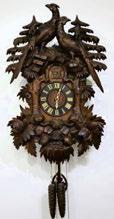
( continued from page
has a business on Chairish called Irwin and Lane, a moniker derived from our middle names. Our household is a busy one, with dogs, children and often an exchange student. We have two daughters. Catherine is 22, Gemma is 7. I may have to break away periodically to make sure the latter is not grabbing implements in the kitchen.

long have you lived in Cooperstown, N.Y.?
About a decade or so. It’s a pretty town at the southern end of an extremely beautiful lake. We were living in a wonderful 1910 apartment in Washington Heights in Manhattan when we purchased an 1801 Federal farmhouse — quite small, very pure — in Sharon Springs, N.Y., in 2001 as a retreat. We moved to nearby Cooperstown when Catherine was old enough to not want to change schools again. Now Gemma is in school here. Cooperstown is a very familial place. Our Cooperstown house dates to around 1850 but has been added to continuously. We also have a foothold in Manhattan.
Didn’t you also for a time live in Morocco?
I grew up in the military and we moved all the time. Matthew went to high school in Turkey, followed by college in Switzerland and Paris. After 9/11 we decided to live abroad. We happened to be visiting one of Catherine's godmothers and her family in Spain. And I just looked at Matthew and said, why don't we live like this? I sent an email to Elle Décor saying I was resigning. We sold our apartment in Washington Heights and moved to
Marrakech. We found Catherine, then a toddler, an independent French nursery school the day after we arrived. We lived in Marrakech’s historically French neighborhood for a couple of months, then found a very old, unrenovated house in the Medina. We’d come to live in a foreign country and didn’t want to be solely in a world of expats. We had a lot of Moroccan friends. Matthew speaks fluent French. He picked up enough Arabic to have simple conversations. My Arabic is absolutely non-existent. We stayed for three years and kept the house for another two years after that. Everyone seemed to know someone else, who knew someone else, who circled back and knew us. It was an interesting but odd, bifurcated life.
Matthew and I collect vintage cookery books, which we use for planning themed dinners. We built a small collection of atmospheric albumen prints of Nineteenth Century Venice by the photographer Carlo Ponti (1820-1893). I love American Classical furniture — its strength, breadth and reddish-brownness, and the fact that it’s highly undervalued and I can actually buy a heroic chest of drawers for not terribly much. I have quite a serious Old Paris porcelain problem. I also like chairs. They’re people, you know, with arms, legs, a back and lap, and are so full of personality. I can typically find room for one more somewhere. I gravitate to small, romantic things that take me to another world, for instance Japanese tsuba — which, like Venice, is a love of Matthew’s — and repousse silver, which I can hold and study. It’s that idea of understanding the details, how a piece feels, how it was made and by whom. I love going down rabbit holes and want to take readers with me.

What dealer, collector or decorator of the past fascinates you?
Because it has been my world for so very long, the American decorator Ruby Ross Wood (1881-1950), largely because she started out as a journalist from a very modest background, as I did. She was ceaselessly curious and highly opinionated, a magpie of history — also a bit like

me. I’ve wanted to write a book about her for a long time. I have some of her journals and scrapbooks, loans from her family. I’m also hugely interested in the marchand-merciers of Eighteenth Century Paris, individuals like Dominique Daguerre, an advisor to George IV of England. They were luxury purveyors who went between the guild craftsmen and their clients. Diderot described them as makers of nothing but sellers of everything.
Where is the most magical place your work has taken you?
I’ve been working on a biography to be published by Rizzoli about Pauline de Rothschild (19081976). For a time I stayed in Pauillac, in the Gironde region of France, working in the archives of the Château Mouton Rothschild. I was able to visit the grande pièce, or big room, that she created with her husband and a local architect around 1960. It remains almost exactly as it was, preserved by her grandson and the family. It’s spare and rich, somewhat surrealistic, outfitted with the most outrageously lovely things of many periods, but with lots of negative space. It’s hard to describe, but when there I felt not only in her presence but in her mind. It’s always fascinated me to look at the room in the Horst P. Horst (1906-1999) photographs that were published in Vogue
Where will we see you next?
I’m attending Nantucket by Design and Newport Design Week in July. I’m traveling to Madrid soon and will probably make another visit to Marrakech. I hope to go to the Antiques at the Gardens show in Birmingham, Ala., in October. Representing Antiques on the public circuit will be a huge pleasure. It’s important for the editor of any magazine to make personal contact with loyal readers and potential ones.
How do you accomplish it all?
I'm good at juggling, or I’ve just learned to be very fast.
—Laura Beach
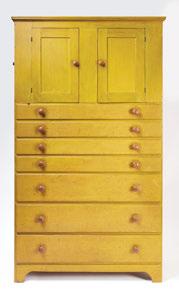
BRANFORD, CONN. — New England Auctions will present its Americana Extravaganza on July 18 at 10 am. This sale will feature fresh-to-the-market items from collections in Florida, New Jersey, New England and the Midwest.
The first 50 lots will feature a collection of Shaker items, including two Shaker cupboards, one in chrome yellow paint, furniture, boxes and accessories. A collection of 30 quilts from a Florida collection, as well as a collection of 18 needlework samplers, will also be offered. Folk art, Native American, nautical, furniture and accessories will round out the sale.
Preview will begin June 18.
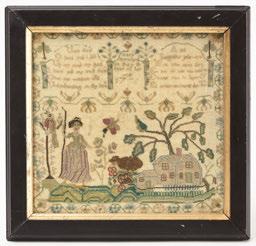
Bidding is available live in the gallery, on the firm’s website at www.newenglandauctions.
HOUSTON, TEXAS — Thomas Demand has spent three decades exploring the intersections of history, photography and memory. His large-scale photographic works investigate the way images embed themselves in a society’s collective memory. Until September 15, the Museum of Fine Arts, Houston (MFAH), presents “Thomas Demand: The Stutter of History,” a landmark retrospective of the artist’s work, with more than 70 images; the MFAH is the only US venue for this internationally touring exhibition.
In much of his work, Demand depicts places loaded with historical meaning — the abandoned control room of the Fukushima plant following the March 2011 nuclear disaster; the site of the Florida recount of the 2000 American presidential election; or Bill Gates’s dorm room at Harvard. While his images appear at first to depict the real world, upon closer inspection they seem at once familiar and decidedly strange. They are in fact photographs of impermanent sculptural recreations. Demand selects his source imagery from the media, recreates those often-banal images as life-size models using colored paper and cardboard, photographs them, and prints them at a monumental scale. Ultimately, his works are as much about the circulation of images and the politics of mem-
ory as they are about the specific moments depicted.
“The exhibition Thomas Demand: Stutter of History marks the first time in nearly 20 years that Demand’s work has been shown in the United States in such depth,” said Gary Tinterow, director and Margaret Alkek Williams chair at the Museum of Fine Arts, Houston.
“I am delighted that the museum has been given the singular opportunity to show the extraordinary and challenging photographs that result from Demand’s unsettling explorations of how photography both reveals and deceives, prompting visitors to question their perceptions and fundamental truths.”
“The uncanny nature of Thomas Demand’s work lies in its ability to trick our perception and our assumptions,” commented Malcolm Daniel, the Gus and Lyndall Wortham curator of photography at the MFAH. “We are lured in because we think we have seen this before, only to discover that what we are looking at is just a stage set. And that moment of recognition in turn leads us to think about the veracity of the images we receive endlessly, every day.”
Thomas Demand: The Stutter of History presents a careerwide survey of four important areas of Demand’s work: largescale photographs of unidentified yet historically significant
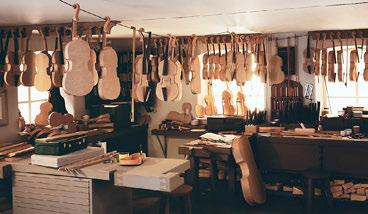

scenarios; smaller-scale “Dailies,” recreating everyday epiphanies recorded with his iPhone; “Model Studies” that document the paper maquettes created by architects and dress patterns cut by fashion designers; and mesmerizing stopmotion films, including Pacific Sun, inspired by YouTube footage of a cruise ship’s interior as fixtures and furniture are tossed by rough seas. In addition, the installation includes site-specific photographic wallpapers at key points in the exhibition.
The Museum of Fine Arts, Houston, is at 1001 Bissonnet Street. For information, 713639-7300 or www.mfah.org.
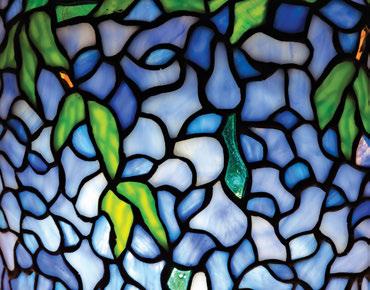


•







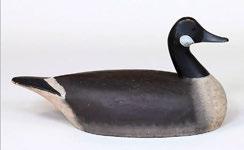
Canada Goose Decoy Flies High At South Bay
EAST MORICHES, N.Y. — Sporting art and decoys were a highlight of South Bay Auctions’ June 12 auction, which offered 230 lots of fine art, Americana and folk art, jewelry, silver and Native Americana from estates and private collections. One of the two dozen decoys that started the sale was a hollow Canada Goose made by the Reeves family of Long Point, Ontario, that flew to $5,160. Its rigmate (not shown) had crossed the block ahead of it and realized $900. A representative for the house confirmed they were purchased by the same in-house buyer. For information, 631-8782909 or www.southbayauctions.com.
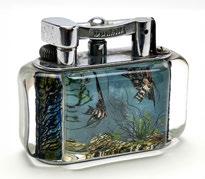
Dunhill Aquarium Lighter Swims To Top At Capsule Auctions
NEW YORK CITY — Leading Capsule Auctions’ June 13 Design and Decor Auction was a circa 1950 “Aquarium” lighter from English manufacturer Alfred Dunhill. The lighter was done in reverse painted Lucite and had metal mounts. It measured 4 inches wide and was stamped “Dunhill Lighter / Made in England” on its underside. The lighter, adorned with black and white fish on the front and back, had provenance to a private Upper East Side collection and was in overall good condition. Very gentle wear to the metal plating did not deter bidders from raising the lighter to $5,248 against a $2/3,000 estimate. For information, 212-353-2277 or www.capsuleauctions.com.
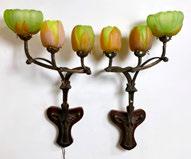
Reproduction Sconces Light The Way For Treasureseekers PASADENA, CALIF. — A pair of reproduction sconces in the manner of Daum Nancy and Majorelle led Treasureseeker Auctions’ June 16 pre-summer antiques and decorative arts sale. The sconces, signed “Galle,” each had three bronze arms with thick blown-out-two-tone colored glass shades, which were all custom made to fit the sconces’ fitters. Both were electrified and measured approximately 30 by 18 inches. The auction catalog stated that the circa 1960s sconces were made in a limited amount and “With over 50 years of experience, we have never seen them offered.” The pair sold to a Fort Lauderdale, Fla., buyer for $10,880, more than double the high estimate. For information, 626-5295775 or www.treasureseekerauction.com.
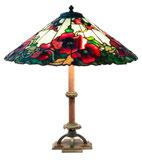
Duffner & Kimberly Lamp Shines For Michaan’s

All prices include buyer’s premium.

ALAMEDA, CALIF. — On Monday, June 17, Michaan’s Auctions conducted its Summer Specialty Auctions, including the Vito Giallo collection and the summer Fine sale. In total, 442 lots were presented, and the top lot overall, coming from the Fine sale was a Duffner & Kimberly Peony leaded glass table lamp on a bronze base with a velvet wrapped stem. Measuring 24 inches high and with a 22-inch shade diameter, the lamp came from an important Idaho collection and was sold, via phone bid, to an East Coast dealer who is a regular at Michaan’s for $36,900 ($10/15,000). For information, www.michaans.com or 510-740-0220.

Eldred Bidders Dust Off Paddles For Ashcan School Portrait HANOVER, MASS. — Eldred’s June 18 Vintage Goods sale, a 218-lot assortment of household furnishings, fine art and collectibles was 82 percent sold by lot. An Ashcan School (late Nineteenth and early Twentieth Century) oil on canvas portrait of a man in a sombrero led the sale, multiplying its $500/700 estimate to $2,816. The lower front rail of the 30½-by-27¼-inch giltwood frame bore a plaque inscribed “Robert Henri.” For information, 617-401-1753 or www.eldreds.com.

Art Deco Trolley Serves Up High Bids
At Mid-Hudson Auction Galleries
NEW WINDSOR, N.Y. — A Christofle Art Deco silver plate, oak and mahogany meat warming and serving trolley was the top-seller at Mid-Hudson Auction Galleries’ June 15 auction, beating out fine art, toys, World War II collectibles, sports memorabilia and Taino artifacts. The wheeled cart had a carving station under a revolving dome top as well as inset sauce bowls, diffusing plate, plate stand and cutlery tray. A European buyer with a New York City address purchased it for $3,438, just beating its $2/3,000 estimate. For information, 914-8827356 or www.midhudsongalleries.com.
Litchfield Bidders Take Up Paddles For Croquet
LITCHFIELD, CONN. — A portion of the 478 lots offered in Litchfield Auctions’ June 19 Art, Antiques & Design sale came from Arethusa Farm, a local dairy that has won awards for its cows, while its milk, ice cream and cheeses have a devoted local following. The sale’s top lot – Sally Michel Avery’s (American, 1902-2003) “Croquet,” an oil on canvas from the farm that had been exhibited at the US Department of State, measuring 51 by 58 inches framed, achieved $41,600 from a trade buyer bidding online, nearly tripling its $10/15,000 estimate. For information, 860567-4661 or www.litchfieldcountyauctions.com.

Italian Carved Marble Bust Turns Heads At Hudson Valley Auctioneers
BEACON, N.Y. — Hudson Valley Auctioneers hosted what it characterized as “a large sale with solid prices” on June 17. Noteworthy was an Italian carved marble bust of a lady (shown) by Cesare Lapini, Florence, Italy, 1887, exhibiting fine detail in her lace head covering. The bust was bid to $9,600. Also noteworthy was a huge collection of photo and movie negatives from the estate of Paul Trent, author of The Image Makers: Sixty Years of Hollywood Glamour. This lot sold for $11,250. For information, 845-831-6800 or www.hudsonvalleyauctioneers.com.

50 by 28¾ inches. For information, 954925-2550 or www.kodner.com.
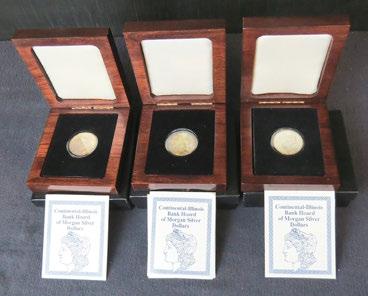
Three mahogany cased Continental-Illinois Bank Hoard Morgan silver dollars with paperwork.
PELHAM, N.H. — Legare
Auctions has a large, one-owner coin collection that will be offered in an online-only, timed auction on Auction Ninja that will start to close on Thursday, July 11, at 7 pm.
“We are pleased to sell this large collection amassed over several decades,” said Leo Legare, auctioneer. “There are thousands of coins, some being sold in very generous lots.” Among the highlights are a

Early coins include Capped Bust Liberty half dollars.
Among the highlights is an 1880 Morgan $1.
few early American coins, including 1830s Capped Bust Liberty sealed half dollars. Added Legare, “There are many Morgan silver dollars sold in groups of six, 964 Silver Kennedy half dollars sold in lots and a

complete book of Flying Eagle and Indian Head sets.” Bidding is live on https://www. auctionninja.com/legare-auctions/sales/details/coin-auction-7.html. There will be an in-person
preview by appointment only on Monday, July 8, and Tuesday, July 9, from 9 am to 3 pm. Legare Auctions is at 1306 Mammoth Road. For information, 978-380-3422 or 603-5959625.
NASHVILLE, TENN. — The Frist Art Museum presents “Black Joy, in Spite of…,” an exhibition of historical photographs of Tennesseans paired with art of the present day. Organized by guest curator Brigette Janea Jones, the exhibition is on view in the always-free Conte Community Arts Gallery through September 2.
Through this project, Jones, a historian, nonprofit executive and public speaker, seeks to offer a more three-dimensional picture of the Black American experience by focusing on moments of joy despite a history of pain and struggle. “Black Joy, in Spite of…” showcases photographs of enslaved people and their descendants taken throughout the three geographical regions of Tennessee during various periods, including enslavement, Reconstruction, the Civil Rights Movement, the crack era and more.
To connect the past with the present, Jones invited young artists throughout the state to submit artworks that express their own interpretations of Black people resisting harm and embark-

Ernest C. Withers, “The WDIA Twins,” 1948. Courtesy of the Withers Family Trust. ©Dr Ernest C. Withers Sr.
ing on the eternal journey to Black joy. Jones and two local artists, TC and Joseph Patrick, served as jurors. “The selected images capture scenes of family connection, friendship, pride and resistance that highlight the humanity of each individual and counter the more common focus on trauma,” wrote Jones. “Seen together, the works show Black Tennesseans having the audacity to be happy amid and in the aftermath of slavery, an institution that was designed to break them.”
Organized chronologically and thematically, each of the nine sections presents ways that Black Americans have kept joy alive despite historical and contemporary barriers and injustices. Responding to the works of art, Jones wrote a poetic narrative that is carried throughout the installation. For example, “In Spite of Enslavement...Black Joy Is Peace” features a historical photograph (circa 1865) of three unidentified boys on the Belle Meade Stud Farm and Plantation in Nashville, while University of Chattanooga student Tamia Spinks’s painting “A Trip to the Beach” (2022) depicts a tender moment between a mother and her child at rest on the beach. Under the title “In Spite of Subjugation...Black Joy is Free,” a proud class of 1891 graduates, all women, pose in the photograph “Kortrecht High School, first graduating class.” Today, the school stands as Booker T. Washington High School (and is also seen elsewhere in the exhibition in Mark Humphrey’s 2011 photograph of President Barack Obama visiting the school). Freddie Louis Calhoun III’s two photographs of Tennessee State University graduates (2023), both titled “Educated Beauty,” are meant to pay tribute to the school’s notable women graduates, including Oprah Winfrey,
Wilma Rudolph and Dr Glenda Glover.
Elsewhere in the exhibition are works by Xavier Payne whose “Black City 2” (2022) speaks to the creative authenticity and output that public housing communities can foster despite many challenges. Ashley Mintz says that her mixed media work “Storyteller” (2021) was inspired by her great-grandmother who instilled in her the importance of
storytelling through generations.
“Oral tradition is popular in many cultures, but it is especially prevalent in African American culture due to the fact that slaves could not learn to read or write.
Storytelling through talking or singing was the way to remember things, share secret messages and share traditions,” wrote Mintz.
Jones wrote, “As a socio-cultural historian, I’ve had the opportuni-
ty to examine the arc of the Black American experience beginning with enslavement and connect it to who and how Black Americans are today. Despite numerous hurdles and roadblocks, Black Americans have still managed to embody an intangible sense of joy and peace.”
The Frist Art Museum is at 919 Broadway. For more information, www.fristartmuseum.org or 615244-3340.
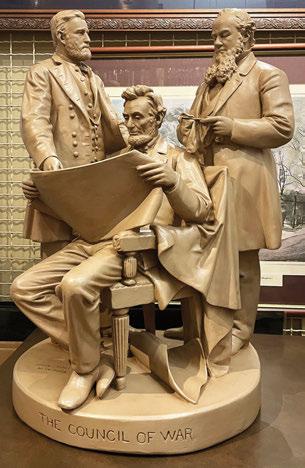

CHARLESTON, S.C. — The Charleston Museum’s latest exhibition, “The Art Of Abstraction: Modernism In Quilting,” pairs quilts and works from the modernist and abstract art movements to present a rich showcase of artistic diversity. Quilting has always been a means of creative expression, uniting color and pattern to form an object of purpose. Just as paint on canvas functions, the fabric pieces work as practical art, stitched together to form beautiful abstract creations. The impression of quilts as simple craft or “women’s work,” began to shift in the early 1970s. The Twentieth Century modern art movements had changed the percep-
tion of textile art, and quilts were no longer viewed as simply bed coverings designed for warmth, but as art in their own right.
Today, the work is divided into categories: traditional quilts that are functional and follow historic patterns, art quilts designed as wall hangings for decoration and modern quilts created from newly invented patterns that may serve as blanket, decor or both. Despite these relatively recent distinctions, creativity has never been limited by theory.
The Charleston Museum’s collection of more than 180 historic quilts includes many examples of scrap quilts, crazy quilts and quilts in traditional
patterns executed with abstract coloring. Presented alongside modern works from the Gibbes Museum of Art, including paintings by Robert Rauschenberg and Sallie Frost Knerr, these quilts showcase the creativity and ingenuity of their makers. Enter the exhibit to see how they approached color, texture and stitchwork with the same painterly expressiveness found in modern art.
“The Art of Abstraction: Modernism in Quilting” is open through September 15 in the Historic Textiles Gallery. The Charleston Museum is at 360 Meeting Street. For more information, 843-722-2996 or www.charlestonmuseum.org.
RICHMOND, VA. — In “Ted Joans: Land of the Rhinoceri,” the Virginia Museum of Fine Arts (VMFA) presents a suite of 31 works — in watercolor, pencil, ink, crayon and collage
— that the artist completed in 1956 and gathered in a portfolio titled “Drawings from Africa.”
Born in Cairo, Ill., Theadore “Ted” Joans was an unlikely icon of the art world. An African American visual artist, poet and jazz musician, Joans found a prominent space among the surrealist painters, beat poets and avantgarde musicians of the era. Joans was a modern renaissance man who, upon his departure from Chicago, took residence in New York and Timbuktu, located in Northern Mali on the upper west coast of Africa. For nearly three decades, Joans kept a home in Timbuktu and traveled extensively throughout Africa creating a visual diary of his encounters.

The works of art featured in
Untitled, from the series “Drawings from Africa” by Ted Joans (American, 19282003), 1956, watercolor and pencil on board. Virginia Museum of Fine Arts, Gift of Dr Regenia Perry, 2020.389.
this exhibition were a gift to VMFA from author, scholar and longtime Virginia Commonwealth University art history professor Dr Regenia Perry. The exhibition also features select ephemera such as an artist’s book and examples of Joans’s poetry.
Portraits figure prominently in this exhibition as Joans focused his gaze on the people he encountered on his travels. His subjects’ eyes meet the viewer’s or turn away. Joans’ images are vibrant full-length
or half-length portraits that depict individuals in a range of traditional and contemporary African styles of dress. Also included are renderings of masks and classical African sculptural figures.
Visitors will experience a visual antecedent to Joans’ poem “Africa,” which includes the following lines: “Land of my mothers, where a black god made me/ My Africa, your Africa, a free continent to be.”
Ted Joans: Land of the Rhinoceri” is on view in VMFA’s Mary Ann Frable Works on Paper Gallery through November 17.
The Virgina Museum of Fine Arts is at 200 North Arthur Ashe Boulevard. For information, www.vmfa.museum or 804-340-1400.


SAN FRANCISCO — The San Francisco Museum of Modern Art (SFMOMA) has announced that it has recently acquired works by more than 65 artists, including, among others, Virgil Abloh, Farah Al Qasimi, Yael Bartana, Merikokeb Berhanu, JB Blunk, Beverly Buchanan, rafa esparza, Vaginal Davis, Rachel Harrison, Tyler Hobbs, Ulysses Jenkins, Rashid Johnson, Isaac Julien, Yayoi Kusama, Doyle Lane, Mire Lee, Glenn Ligon, Christian Marclay, Oscar Murillo, Philippe Parreno, Paul Pfeiffer, Ron Rael and Virginia San Fratello, Isabel Rower, Niki de Saint Phalle, Amy Sherald, soft geometry, Kunié Sugiura, teenage engineering, Apichatpong Weerasethakul, Martin Wong and Christopher Wool. The acquisitions repre -
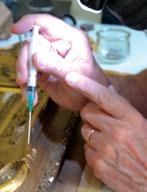
sent SFMOMA’s ongoing commitment to collect works by both celebrated artists and those deserving of greater recognition while further enhancing the representation of women, artists of color, and those from California and the Bay Area within its holdings.
“The acquisitions announced today capture an incredible depth of artistic ambition, formal innovation and social and cultural experience,” said Christopher Bedford, SFMOMA’s Helen and Charles Schwab director. “The group reflects SFMOMA’s driving vision to enhance our collection with works by a diverse spectrum of artists who engage with an equally diverse range of subject matter, whether focused on aesthetic experimentation or on grappling with central issues of their time. I’m grateful for
the thoughtful consideration that our curatorial teams have brought to this selection and to our broader acquisition strategies. I look forward to sharing these extraordinary works, and the narratives they hold, with our community.”
Among the many highlights is Yayoi Kusama’s “Dreaming of Earth’s Sphericity, I Would Offer My Love” (2023), the newest of the celebrated artist’s beloved Infinity Mirror Rooms.
Among the other outstanding works acquired by SFMOMA that feature in recent or upcoming exhibitions are Amy Sherald’s “For Love, and for Country” (2022) and rafa esparza’s “Corpo RanfLA: Terra Cruiser” (2022). Sherald’s large-scale painting reinterprets the iconic photograph “V-J Day in Times
Square” (1945) by Alfred Eisenstaedt through the lens of queer Black experience. SFMOMA also acquired several works by Isaac Julien, who recently designed an immersive dinner experience for the museum’s annual fundraiser Art Bash in support of the museum’s family and education programming.
The wide range of newly acquired works also includes additions to the museum’s expansive photography collection. Among them are works by Hal Fischer, Rosalind Fox Solomon, Jarod Lew, Alessandra Sanguinetti and Deanna Templeton, as well as Farah Al Qasimi, Iñaki Bonillas, Mercedes Dorame and Kunié Sugiura.
San Francisco Museum of Modern Art is at 151 Third Street. For information, 415357-4000 or www.sfmoma.org.
Litchfield Historical Society’s 26th Annual July 4 Pet Parade Returns!
LITCHFIELD, CONN. — Patriotic pets and pet-lovers rejoice! The Litchfield’s Historical Society’s Annual July 4th Pet Parade returns on Thursday, July 4, from 2:30 to 4 pm in the Tapping Reeve Meadow. All pets — dogs, cats, pigs, parakeets, snails, or stuffed animals — are invited to the Tap-
ping Reeve Meadow for a free Independence Day Celebration. Bring your pet to the judge’s booth before joining the parade. After the award ceremony, everyone can enjoy old-fashioned amusements, including sack races, tug-of-war contests, photo booth and an ice cream social!
This event is free. Pets must be on a leash or in a cage, and if applicable, must be up to date with immunizations. Parade registration begins at 2:15 pm; the parade will begin after judging is completed. For more information and to preregister your pet, www.litchfieldhistoricalsociety.org/calendar-grid/.
ST LOUIS, MO. — Up until October 27 in the Caro Nichols Holmes Gallery 214 and Sherry and Gary Wolff Gallery 215 at the Saint Louis Art Museum, “Concealed Layers: Uncovering Expressionist Paintings” presents new discoveries made during an ambitious three-year study of the museum’s world-class collection of German Expressionist paintings. A painting’s surface hides a wealth of information that can only be found using advanced methods of conservation science. Complete underpaintings, a lost title and studio graffiti are just some of the exciting findings that are receiving their public debut.
“Concealed Layers” invites visitors to discover the world of conservation research and experience behind-thescenes technical revelations. At the
museum, 48 German Expressionist paintings were meticulously examined and documented with photography. High-powered microscopy and ultraviolet fluorescence identified artist materials and historic restorations, while x-radiography and infrared reflectography revealed hidden layers.
From this vast trove of research, 11 paintings were selected for the exhibition, along with extensive conservation images and examples of the tools and materials used during research. The paintings include Ernst Ludwig Kirchner’s monumental “Circus Rider,” Oskar Kokoschka’s double self-portrait “The Painter II” (Painter and Model II), and Vasily Kandinsky’s “Murnau with Locomotive,” one of his last figurative paint-
ings. All reveal insights into the artists’ studio practices. The exhibition and conservation research initiative were undertaken in conjunction with the museum’s new collection catalog, German Expressionism: Paintings at the Saint Louis Art Museum (March 2024).
“Concealed Layers: Uncovering Expressionist Paintings” is curated by Courtney Books, associate paintings conservator, and Melissa Venator, the Andrew W. Mellon Foundation assistant curator of Modern art.
The Saint Louis Art Museum is at 1 Fine Arts Drive. For information, 314-721-0072 or www.slam.org.

Ernst Ludwig Kirchner, German (active Switzerland), 1880-1938, “Portrait of Gerti,” dated 1907 [1910-11], oil on canvas, 31¾ by 27¾ inches. Saint Louis Art Museum, given by Sam J. Levin and Audrey L. Levin 26:1992
RALEIGH, N.C. — “Seeing Red,” is currently on view in the West Building, Conservation Gallery, at North Carolina Museum of Art.
Red is arguably the most important color to human beings. Since ancient times red has colored our strongest emotions, warned of danger, distinguished our leaders, glorified our religious images and underscored our life and death. For many, red was divine, a direct connection to gods and the supernatural.
Today red seems much less important to us. Dimmed by time and technology, the color is something we hardly pay atten-
tion to. “Seeing Red” focuses on our long relationship with red and the dyes and pigments that humanity has developed to

EAST LANSING, MICH. —
Featuring more than 60 works, “Samia Halaby: Eye Witness,” chronicles the Palestinian artist’s journey starting in the 1950s. On view at Michigan State University (MSU) Broad Art Museum to December 15, this comprehensive survey leads audiences through Halaby’s monumental artistic career with paintings, digital work, sculptures and drawings.
“To present nearly seven decades of painting by an important and prolific artist is no easy feat, and it requires years of research, thought and planning,” explained Rachel Winter, curator. “This exhibition presents Halaby’s work through the lens of place in order to understand
how Halaby’s visual language changed as she moved between the Midwest, New York, Europe and the Arab world, an approach that has been developed in conversation with Halaby over the last two years.”
Known for merging artistic styles and movements, she reconceptualizes the Islamic tradition of geometric abstraction in architecture and Western approaches to abstract painting.
She also finds inspiration in nature, particularly in natural elements from Palestine such as the olive tree. Halaby’s art is layered with vibrant colors that convey joy and optimism as she proposes new ways of seeing and being in the world.
“We are intentional about rep-
resenting the communities we serve with our exhibitions and bringing forward conversations of local relevance and global significance,” said Steven L. Bridges, interim director of the MSU Broad Art Museum. “Michigan is home to one of the largest Arab populations in the United States. Presenting the work of a Palestinian artist in diaspora provides an opportunity to think more expansively about Michigan’s history and the contributions to the arts that have happened here and continue to influence future generations of artists.”
MSU Broad Art Museum is at 547 East Circle Drive. For more information, 517-884-4800 or www.broadmuseum.msu.edu.
express ourselves. To represent a color that held such deep meaning, red dyes and pigments have nearly always depended on scarce materials and advanced technology, often resulting in rare and expensive products reserved for high-status use. The study of red substances in artwork can provide insight into artists’ works, giving us technological, cultural and art historical information that we may not
discover in any other way Organized by the North Carolina Museum of Art, research for this exhibition was made possible by Ann and Jim Goodnight/ The Andrew W. Mellon Foundation Fund for Curatorial and Conservation Research and Travel.
North Carolina Museum Of Art is at 2110 Blue Ridge Road. For information, 919-839-6262 or www.ncartmuseum.org.
Tiverton 4 Corners 4TH
Antique and Artisan Show! Thursday, July 4, 2024 9 am - 4 pm
On the grounds of The Meeting House 3852 Main Road Tiverton, RI Admission: $7 (with ad: $6) For Show Info: Call 774-526-0829 Managed By Ted Biszko
Email:twb452@hotmail.com
nhada.org
ATLANTA, GA. — A Niermann Weeks “Calais” six-light chandelier lit up the room for $5,115, an Eighteenth Century American School oil on canvas portrait of a boy with his dog realized $4,538, a Kirk & Son sterling repousse pitcher gaveled for $4,840 and a pair of Italian burled veneer pedestal cabinets fetched $2,723 in two days of auctions held June 5 and 6 by Ahlers & Ogletree.
The 522-lot Summer Estates & Collections auction was held live in the Ahlers & Ogletree gallery, as well as online. Session one, on June 5, featured 246 lots of English and American decorative arts, fine art and furniture. Session two, on June 6, had 276 lots of Continental decorative arts, fine arts, furniture and silver. Together, the two days realized approximately $419,000.
A Niermann Weeks “Calais” six-light chandelier, measuring 32¼ inches tall and 34 inches in diameter, had a gilt finished metal frame and stylized ostrich plumes (or palm fronds) composed of colorless glass rods. Manufacturers’ labels were attached to the ceiling canopy.
An Eighteenth Century oil on canvas American School portrait of a boy with his dog was rendered in 1779 and titled “Portrait of Morgan Wilmot.” The unsigned work was inscribed and dated to the upper right and nicely housed in a frame. The work measured 47 inches by 32¾ inches, minus its frame.
A Samuel Kirk & Son sterling silver repousse water pitcher from 1846 showed marks that were used from 1892-1924 and had a repousse pattern with florals and various animals, all set in a landscape with ruins. The pitcher was marked “26,” “S. Kirk & Son,” “925/1000,” with an

inscription.
A mid-Twentieth Century pair of Italian burl chestnut veneer hexagonal pedestal cabinets, both 32 inches tall by 15 inches wide, each had a single door and rose on a plinth base, with manufacturers’ labels.
Internet bidding was facilitated by Auction Mobility (Bid. AandOAuctions.com), LiveAuctioneers.com and Invaluable. com. About 30 people attended the auction in person at the gallery, while 20 phone bidders and 64 absentee bidders also submitted bids.
Additional highlights included a palace-size Persian Mahal rug with a heavily patterned central navy-blue field surrounded by multiple borders, measuring 12 feet by 20 feet 8 inches, which found a new home for $5,143.
A Dennis & Leen (American, 1959) shaped chinoiserie tray coffee table with a black lacquered top which rose on a gilt metal faux bois base, unmarked, brought $4,235.
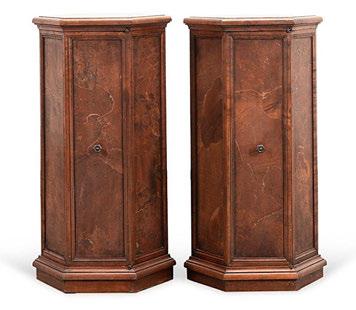
This pair of mid-Twentieth Century Italian burl chestnut veneer hexagonal pedestal cabinets, both 32 inches tall by 15 inches wide, each having a single door and rose on a plinth base, with makers’ labels, found a new home for around four and a half times their high estimate, at $2,723 ($400/600).
Other Dennis & Leen offerings in the sale included a pair of Marseilles giltwood mirrors, each having a shape pattern distressed frame, 52¼ by 34¼ inches, unmarked ($4,235); and a pair of Italian Louis XVI armchairs, each having an antique cream painted parcel gilt finish and possibly Luigi Bevilacqua “Melograno” upholstery with one accent pillow, finished at $2,299.
A large pair of Paul Ferrante (American, 1957) crystal 12-light “Anniversary” chandeliers in the Louis XIV taste each boasts a 22K gold leaf finish. Both are hung with colorless crystal swags and prisms, with both chandeliers 60 inches in height and 42 inches in diameter, sold within estimate for $7,260.
A large Tridacna gigas clam shell, complete with both halves, an adult sessiled pair with the remains of the connective tissue that hinged the two halves of the shell when still alive, hit $3,933.

This Samuel Kirk & Son (American, 1846) sterling silver water pitcher with a repousse pattern realized $4,840 ($1,2/2,400).
This palatial Persian Mahal rug, measuring 12 feet by 20 feet 8 inches exchanged hands for $5,143 ($1,5/3,000).
A Twentieth Century French provincial-style carved walnut panetiére (ornate French bread box) in the Louis XV taste, having turned finials and spindles, a paneled door and rising on scroll and die front feet, unmarked and measuring 39 inches in height by 33¼ inches in width, reached $1,815.
An untitled pastoral landscape oil on canvas painting done in 1900 by Archibald McNeal Willard (American, 1836-1918), monogrammed “A.M.W.” and dated to the lower right, made $4,538.
A pair of Victorian-style cast iron garden benches, produced in the manner of the Coalbrookdale Foundry (English, 1709-2017), having a white painted finish, a serpentine crest with an oak and ivy pattern, rolled arms terminating in beast hand rests and wooden slat seats, commanded $2,299.
A group of 19 Lalique (French, Twentieth Century) “Honfleur” frosted geranium

“Portrait of Morgan Wilmot,” unsigned, 1779, oil on canvas, American School, 47 by 32¾ inches minus frame, sold for $4,538 ($1,2/2,400).
dessert and small leaf plates, consisting of 11 dessert plates and eight small plates, found a new owner for $2,178.
A late Nineteenth/early Twentieth Century British oak Welsh dresser base in the Georgian taste, having an overhanging top, two drawers and a single shelf, rising on turned legs, unmarked, rose to $1,573.
Next up for Ahlers & Ogletree is an online-only Books & Documents auction on Thursday, June 20; a Modern Art & Design and Outsider Art auction on Wednesday, June 26; an online-only Asian Art & Antiques auction on Thursday, July 18; an auction featuring the estate of Greg Crawford on Thursday, September 12; and a two-day Fall Auction on Wednesday and Thursday, October 2 and 3. Prices quoted include the buyer’s premium as reported by the auction house. For more information, www.aandoauctions.com or 404-869-2478.
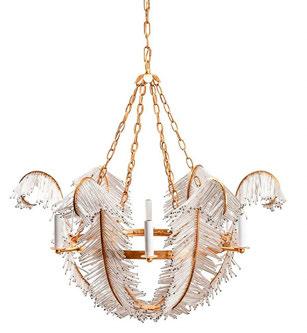
This Niermann Weeks (American, 1978) “Calais” six-light chandelier, 32¼ inches tall and 34 inches in diameter, crossed the block for $5,115 ($1,5/3,000).
LOS ANGELES — “Untold Stories of a Monumental Pastel” remains on view at the Getty Center until October 20.
One of the largest pastels made in the Eighteenth Century, Maurice Quentin de La Tour’s “Portrait of Gabriel Bernard de Rieux” is an astonishing object. In this colossal portrait, the ambitious La Tour pushed pastel to new heights, capturing his sitter’s likeness and surrounding de Rieux with the trappings of his wealth: fine furniture, an extensive library, imported porcelain and a globe turned to display the west coast of Africa. This focused exhibition highlights both La Tour’s technical achievement and the global reality that financed and furnished de Rieux’s world.
Maurice Quentin de La Tour’s commanding “Portrait of Gabriel Bernard de Rieux” is the largest pastel made in Eighteenth Century France. Commissioned by
de Rieux himself, the portrait marks a turning point in the lives of both sitter and artist. De Rieux had recently inherited a great sum of money from his father, a financier, which he used to improve his position among France’s elite. He intended this image of himself and the contents of his sumptuous study to convey erudition, taste and wealth. The artist had similarly lofty ambitions. Pushing pastel to new heights, de La Tour employed 16 sheets of paper and exacting techniques to capture de Rieux’s likeness and convincingly render luxurious objects on a monumental scale. His work in pastel outshone oil painting, which was considered more prestigious at the time.
This focused exhibition highlights de La Tour’s technical achievement and the historical global realities that financed and furnished de Rieux’s world.
De La Tour challenged ideas of
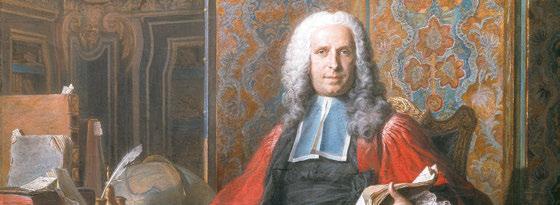
“Portrait of Gabriel Bernard de Rieux,” 1739-1741, Maurice Quentin de La Tour, pastel and opaque watercolor on blue paper, laid down on canvas. Getty Museum.
what could be achieved with pastel by producing a technically demanding work of extraordinary size. The artist created light, color and texture through the complementary and overlapping application of prefabricated hues. To attain an exceptional level of detail, de La Tour used
both opaque watercolor and pastel. He arranged 12 sheets of paper in a grid and added four more in areas of particular detail — the sitter’s face, his hands and the table drapery. If you look closely, you can see the cutouts pasted over these sections, though de La Tour did his
HOUSTON, TEXAS — Interdisciplinary artist Jacolby Satterwhite transforms the Museum of Fine Art, Houston’s (MFAH) vast Cullinan Hall with “A Metta Prayer.” The expansive multimedia installation fuses choreography, video, animation, lighting and music to reimagine a kaleidoscopic, computer-generated world.
“Jacolby Satterwhite: A Metta Prayer” was commissioned in 2023 for the Great Hall of the Metropolitan Museum of Art in New York. The immersive exhibition now brings the artist’s virtuosic work to Houston.
At a time when Black and LGBTQ+ communities face continued threats of violence, “A Metta Prayer” constructs a digital space that represents love, joy and resilience. Satterwhite (b 1986) draws inspiration from the Buddhist Metta prayer to
build a narrative that rebels against the conventions of commercial video games. A soundtrack produced by the artist pulses with energy, providing the video with its driving beat. The MFAH will host “Jacolby Satterwhite: A Metta Prayer” until October 13.
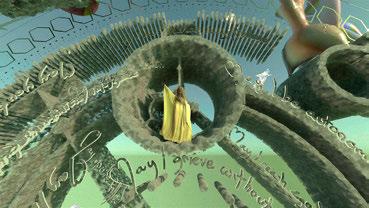
Jacolby Satterwhite, “A Metta Prayer,” 2023, site-specific, 4-channel multimedia installation: sound, theatrical lighting, high-definition color video and 3D animation in Autodesk Maya and Unreal Engine, courtesy of the artist and Mitchell-Innes & Nash, New York. ©Jacolby Satterwhite.
PITTSFIELD, MASS. —
Appreciate the beauty of minimalist design with the new Shaker Design stamps from the US Postal Service.
The stamps feature 12 photographs by Michael Freeman — each showing an example of iconic Shaker design. The issuance coincides with the 250th anniversary of the
arrival of the first Shakers in the United States.
The pane selvage features a black and white photograph of Brother Ricard Belden (1868-1958) in his workshop at Hancock Shaker Village in Pittsfield, Mass. The photograph was taken by Samuel Kravitt, circa 1935.
The Shaker Design stamps

are being issued as Forever stamps and will always be equal in value to the current First-Class Mail one-ounce rate. The stamps were issued on June 20 in Pittsfield.
The Museum of Fine Arts, Houston, is at 1001 Bissonnet. For information, 713-639-7300 or www.mfah.org.
best to mask the seams. The result is a masterful display of skill that solidified de La Tour’s position as the leading pastelist of his day.
The Getty Center is at 1200 Getty Center Drive. For information, www.getty.edu or 310440-7300.





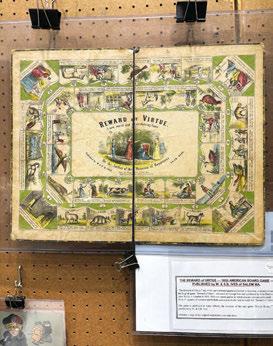

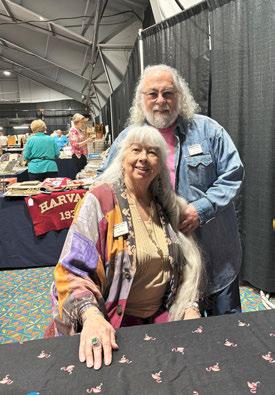
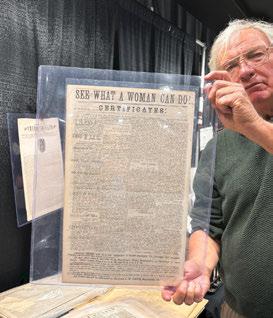
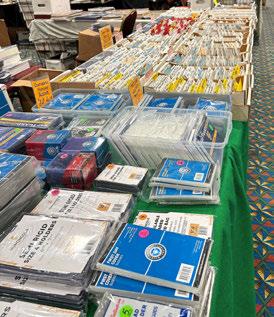
BOXBOROUGH, MASS. — John and Tina Bruno have been managing various types of antiques shows for more than 35 years. Both have backgrounds in engineering, and, in fact, met while both were in that field. Tina was one of the first women involved with micro-chip design and John was a NASA engineer. Their interest in antiques is long-lasting, John said, beginning for him when he was a teenager.
Their twice annual Paper Town paper and ephemera show at the Boxboro Regency Hotel had its first edition of the year on June 8, with about 40 exhibitors who gave shoppers much to choose from. In addition to what one usually thinks of with the word “ephemera,” there were also vintage cameras and a dealer with a large selection of historic medals.
Much of the material offered for sale was of local interest, ranging from advertising documents to postcards. Richard Thorner, Resser-Thorner Americana, Manchester, N.H., had a window hanger and other items relating to Manchester’s Amoskeag Mills. At its peak, the Amoskeag Mills was the largest textile producer in the country with 64 mill buildings that turned out more than 500,000 yards of cloth a week. The mills were in production for more than 100 years and many of the buildings remain today. Thorner offered a chromolithographed window hanger depicting many of the buildings ($325) and an earlier black and white advertising piece ($350). He said it depicted an earlier stage of the mill’s development. He also had a handwritten log and photographs relating to the first flight of an airplane from a Navy ship, which took place in 1910. The log was kept by electrician wireless operator first class, James Frank Monton of Hampton Roads, Va., and he noted that “Mr Ely (Eugene B. Ely [1886-1911], the first man to land on and take off from a naval vessel) started his machine and took off like a bird.” The ship was the USS Birmingham, a US Navy armored cruiser, and the event marked the beginning of aircraft flights from naval ships. Thorner was asking $3,000 for the collection.
Another of the several exhibitors with items of local history was Bob Perry, Perry’s Old Newsstand, Marshfield Hills,
Mass. He had a table with hundreds of neatly organized postcards; nearly all were related to nearby towns or places of interest and he also had supplies for card collectors. While Perry had plenty of cards, another dealer, Jack Lowney, Westport, Mass., had nothing but postcards, filling an entire booth. When we asked how many he had, he thought for a moment and said, “about 32,000.”
Mid and late Twentieth Century pop culture material was abundant. Robinson Murry III, Cambridge, Mass., had early Playboy magazines, Walt Disney’s Mickey Mouse Club Magazines and programs relating to Boston sports teams, such as several for the Beanpot Hockey Tournaments. Much of his material was priced less than $10. Fred Calabretta, Mystic, Conn., had boxes of Beatles memorabilia, magazines and songbooks, MAD magazines, National Lampoon and Rolling Stone magazines. Like Murray, much of his material was priced less than $10. Calabretta also had items of Western interest: a full-page advertisement for the 1926 movie Custer’s Last Fight, which promised “a Cast of Thousands of Indians, Cavalrymen, Pioneers and Scouts,” was priced $165. The same advertisement also promoted another film, announcing, “The Greatest Frontier Film Ever Shown, Sitting Bull, A Picture You Will Never Regret or Forget.” Toys and games were offered by several dealers and ranged in date from mid Nineteenth Century to late Twentieth Century, including board games as well as toy radios in the form of robots. Evie Eysenburg, Cold Spring, N.Y., had an 1850 copy of The Reward of Virtue, which was published by W.&S.B. Ives in Salem, Mass., and is one of the earliest board games published in this country. It was based upon the 1801 English game Reward of Merit. Eysenburg priced the game $375. She also had other early paper toys and early hand-colored valentines.
One dealer, Mark Surowiecki, Three Brown Dogs Antiques, Meriden, Conn., had a selection of cameras and numerous daguerreotypes and tintypes. He said that he had been collecting cameras for about 12 years and that his favorite one in the booth was a Century 5-by-7-inch wood and brass dry plate example, for which he was



When the show opened, one of the “destination” booths was that of post card dealer Jack Lowney, Westport, Mass. John Bruno commented that the post card dealers offer an easy, inexpensive way to get new customers interested in collecting.

asking $350. He told Antiques and The Arts Weekly that it was his first time exhibiting at the show and that he found Instagram a good way to promote his material to new customers.
Another dealer, Snapshot Maven Photos of Gloucester, Mass., filled a booth with hundreds of often over-looked family snapshots of everyday people doing everyday things.
Dan Stezko, The Picking Fields, Springfield, Mass., had a large map/timetable of the Old Colony Railroad for rail service to coastal points with connecting steamship lines to Martha’s Vineyard and Nantucket, which he priced at $350.
Posters were a staple of several ephemera dealers. Examples relating to both World Wars were available, as were ones for circuses, travel and protest. The World War posters, in addition to being decorative, depicted the history of the period. One example that demonstrated that in particular was a black and white poster titled Twice a Patriot. Unusual for this genre, it pictured Black exprivate Obie Bartlet wearing welding safety gear and read, “Obie Bartlet lost his left arm at Pearl Harbor, discharged December 1941 and is now working as a welder at a West Coast Shipyard.” Joe Reilly Antiques, Portland, Maine, priced the poster $1,250. Al Roy, Tiverton, R.I., had several circus posters, including one for the Cole Brothers circus with three young women, priced $100; another for the Ringling Brothers Barnum and Bailey circus promoted animal trainer Terrel Jacobs. Jacobs was considered the best trainer of his time, and his fame was partly based on an act in which he was in a cage with 50 lions and tigers at one time; the poster that showed this stunt was priced $200.
We mentioned earlier in this review that one dealer had numerous medals awarded to commemorate significant accomplishments of the past. That dealer was Robert Moffat, Auburn, Mass., who also had lapel and other pins that were given to the families of men who had enlisted in the armed

services during both World Wars. A collection of more than 30 was in a Riker display mount and was priced $1,000.
A few days after the show, Tina and John Bruno both said that it had been a successful day. “The crowd was good and we were glad to see the number of shoppers in their twenties. And they were buying. Some of the dealers, like Fred Calabretta, deal in posters and magazines that are familiar to that generation. We’re also believers in encouraging adults to bring their grandchildren. There’s
stuff here that appeals to all ages.” Tina added, “As the show progresses, I like to count a random group of 10 leaving the show and see how many are leaving with packages. I did that a few times and generally eight out of ten people were leaving with bags. Nearly all of the dealers told us they’d be back in the fall — just what we wanted to hear.”
The fall Paper Town show will take place at the Boxboro Regency Hotel on October 12. For information, 603-509-2639 or www.flamingoeventz.com.


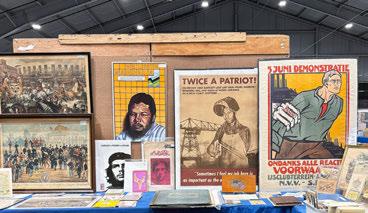


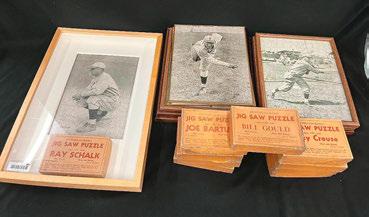


CLARENCE, N.Y. — A 1954 Kaiser Darrin convertible Model 161 #96 sped past its high estimate to take $48,600 at Schultz Auctioneers’ June 14 auction of sports, postcards, music, antiques and more. If Kaiser Darrin, or Darrin for short, doesn’t register as a household name of the fifties, there’s a reason for that. The American sports car was designed by Howard “Dutch” Darrin and built by Kaiser Motors for the 1954 model year. The car was named both for Henry J. Kai -

ser, head of Kaiser Motors, and Darrin. Conceived to compete one-on-one with European roadsters that were coming into the United States following World War II, it faced its own competition domestically against marques like the Ford Thunderbird and Chevrolet Corvette. Only 435 of the rocket-nosed cars were built, and their high price tag, lack of traction with consumers and practical challenges with their design combined to yield low sales.
The upside to the car in this sale was in its brief catalog description: “Runs and Drives.” The lot included a roll of material to restore the convertible’s top.
With a sell-through rate of 93 percent, a total of $414,432 and 3,036 registered bidders, the 542-lot sale offered many more rarities, including a complete set of 1954 Topps baseball cards that sold for


$17,400. It was noted as a very clean set and included such cards as a Hank Aaron rookie, Jackie Robinson, Ernie Banks, Willie Mays, Ted Williams and others.
Puzzle collectors could pursue a vintage group of Buffalo Baseball Club jigsaw puzzles. There were approximately 10 in the lot that brought $5,700 and they included such Buffalo players as Bucky Crouse, Ray Tarr and others.
From the Northwest coast came a Native American 7-foot-tall carved wooden totem pole with a whale base, selling for $10,800. Orcas, or killer whales, are part of both visual art and oral traditions among the Indigenous people of the Pacific Northwest and can take on various meanings such as good luck, compassion and family.
There aren’t many estate auctions that do not offer antique and vintage timepieces and this sale was no exception. Fetching $4,500 was a 1922 Patek Philippe 18K pocket watch, which is among those timepieces that are starting to get the recognition they deserve.
A Tiffany Studios bronze blown glass lamp base went out at the same price as the watch, and a box of Calhoun’s Collector Stamps, including Lindbergh, Hindenburg, Penny Black and more left the gallery at $4,062.
How high is the moon? In this sale, it was $1,920 for the lucky bidder who won a group of early studio real photo postcards featuring a prop of the moon, approximately 30 postcards were in the set. Prices given include the buyer’s premium as stated by the auction house. The firm will present its next auction in mid-August, date to be announced. For information, www.schultzauctioneers.net or 716-407-3125.

BROOKFIELD, MASS. — Kris Casucci and her husband, Paul, advertise their twice annual Walker Homestead show as an Antiques and Primitive Show and that’s what it is. If you’re looking for Midcentury Modern, you probably won’t find it there. What you will find is booths full of painted woodenware, early country furniture, baskets, stoneware, redware, early lighting, paintings and folk art. Taking place on June 15, the show is now in its 15th year and has a waiting list of exhibitors who would like to do the show. However, before being accepted into the show, both antique dealers and craftspeople have to be vetted.
The dealer-friendly show is on the grounds of the Casuccis’ restored Seventeenth Century home. It’s also their shop, which is open during the show. The parking area is a sheep pasture when not filled with cars. Live bluegrass music was provided by Grade “A” Fancy, out of Worcester, Mass. One of the reasons we used the words “dealer friendly” is that the evening before the show, after dealers have set-up their booths, the Casuccis put-on a home-made dinner for the dealers with Paul doing most of the cooking. Dealers were still talking about it the morning after. Cars of shoppers from several states filled the sheep pasture and many of those shoppers were writing checks within minutes of the show opening.
Those interested in stoneware would have had numerous choices from three specialist dealers and additional pieces in several other booths. Near the entrance was one of the specialist dealers, Lorraine German, Mad River Antiques, North Granby, Conn. She said that one of the more unusual pieces she had was a 2-gallon jug with the mark “Bennington Factory,” which indicated that it had been made prior to 1823. In addition to the mark, she said that the cobalt blue number “2,” along with the cobalt tree or floral design, made it a stand-out piece; she was asking $1,200. Her selections included redware and a small, late Nineteenth Century Rockingham teapot priced at $395. Her article on
Eighteenth Century Boston stoneware was published in the 2019 edition of Ceramics in America
George Browning III, Swanzey, N.H., sells almost nothing other than stoneware. He had several stoneware bottles priced from $35 to $145, depending on the maker. Those with advertising were at the higher end of the range. He also had a covered stoneware jar marked “Swampscott Mineral Spring Water,” for which he was asking $650. Kris Casucci was another of the specialist dealers with dozens of pieces of stoneware and redware displayed on the Eighteenth and Nineteenth Century pieces of painted furniture in her home and shop.
In the booth of the Nathan Hale Antiques Center, Coventry, Conn., was a selection of woodenware that included several covered bowls of various sizes. Although probably not American, they were inexpensive, ranging in price from $35 to $55 and each had a pleasing patina. Several were sold and taken from the display within the first hour of the show. The booth included firkins with old painted surfaces, simple benches, tool carriers and more. There was also a set of four Windsor chairs and a very nice carved wooden child’s horse that was $275. It had been found in the Danbury, Conn., area.
Hometown Antiques, West Brookfield, Mass., also had a selection of painted woodenware and an unusual “make-do.”
Someone had taken a large Nineteenth Century green bucket and turned it into a birdhouse. It had been given a conical metal roof and a hanger and a hole had been cut into the side to allow its feathered residents to get in and out. It was priced at $160.
Laura McCarthy, Bayberry Antiques, Rockland, Mass., brought an early, probably unique, decorated and paneled two-door cabinet, which was filled with a collection of 31 small German toy lambs; she had marked it $575. Her collection of stone fruit was individually priced, from $50 or less; a bunch of red grapes was, at $145, an exception. She was also one of the dealers with baskets: she was
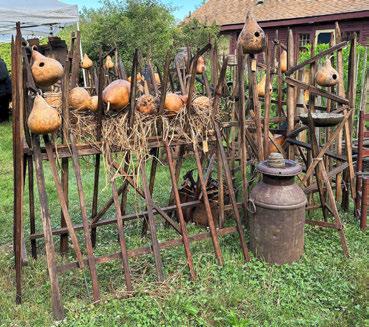

Paul and Kris Casucci treat the Walker Homestead show dealers to a home cooked meal on Friday evening, after set-up. It’s usually served outside but because of the weather, they also utilized their home and fed dealers indoors.
from
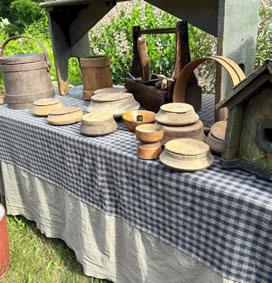
Haddad, The
Center, Coventry, Conn., filled a booth with treen and painted woodenware. The covered bowls on the table in this photo, while probably not American, had a nice patina and were reasonably priced between $35 and $55. Some sold within the first hour of the show.
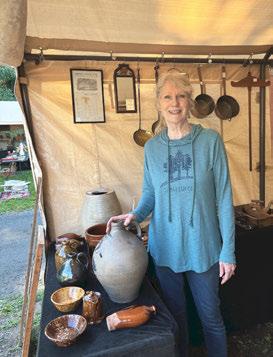
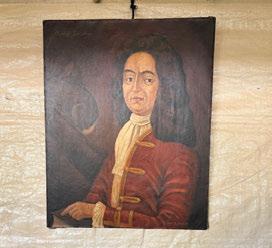
This portrait is not as early as it looks. It’s signed by John B. Moll Jr (1908-1991), who was active in the Eastern Shore region of Maryland. Mary Jane Breedlove, Ballston Spa, N.Y., could not provide any details. She was asking $295.
Review & Onsite Photos by
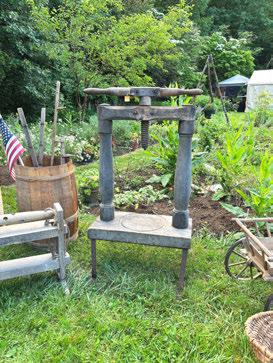
It may not be something for every home, but this Nineteenth Century cider or cheese press, with a weathered blue surface and interesting iron legs, looked great in the lush green grass. Orphan Annie Antiques, Barre, Mass., had it priced at $195.

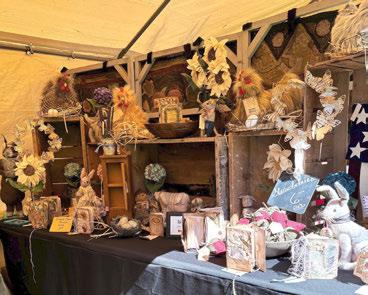




Lynda and Jim Negura, Brookfield, Conn., offered this carved European wedding chest dated 1770. Probably made of oak, they were not sure exactly where it originated but were asking $600 for it.

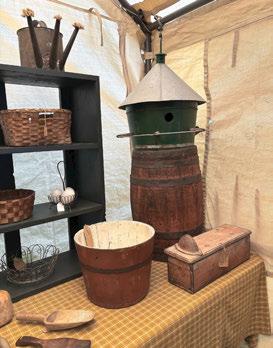
Hometown Antiques, West Brookfield, Mass., offered a variety of painted woodenware. One unusual item was a bird house made from a painted green bucket. A conical tin cover kept out the elements and a hole cut into the side let the birds in and out. The price was $160.
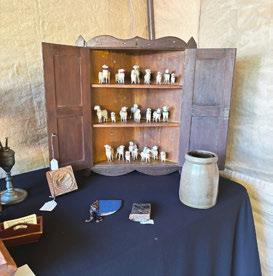
asking $395 for a very large buttocks basket and had two others. Mary Elliot, Pepperell, Mass., has been selling painted wooden-
ware for years and brought a selection of painted bowls of various sizes. An outstanding large one, measuring well over 20 inch-
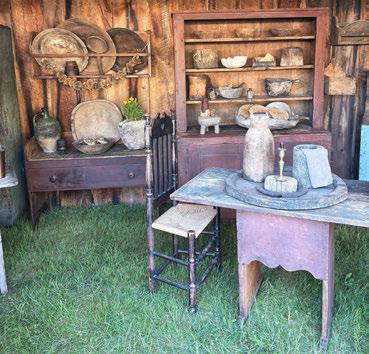
es in diameter, had old blue paint and an interior that showed it had been used, was priced $300; red ones were priced from $150; and a large red example with a turned rim was tagged $725. Painted furniture was available in several booths. Ian McKelvey Antiques, South Windham, Conn., had a small primitive dry sink with two simple panel doors and a well-worn surface, for which he was asking $1,800. He also had a 10-foot-long harvest table with a worn green surface listed at $595. Deb Lerner and Rick Martin, who also run the biweekly Granite State Antique Show in Milford, N.H., had three blanket chests with old red surfaces. Each was priced $375 and their booth included an assortment of other woodenware. There was much more at the show. Cloth and Steiff animals were available from several dealers. Twisted Sisters Primitives, Brookfield, Conn., had a selection of early bears, some Steiff and some by other makers; all had been well-loved. Charlie Guinipero, Pantry Box Antiques, Stafford Springs, Conn., always has a large selection of Steiff animals and this show was no exception, with dozens available. His inven-
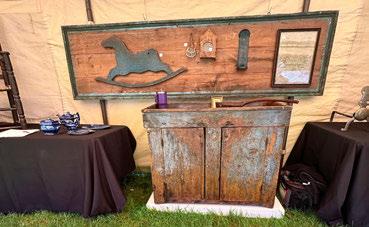
Ian McKelvey, South Windham, Conn., is a very active dealer and will always have an interesting group of furniture and other items. His offerings included this small painted dry sink, for which he was asking $1,800.
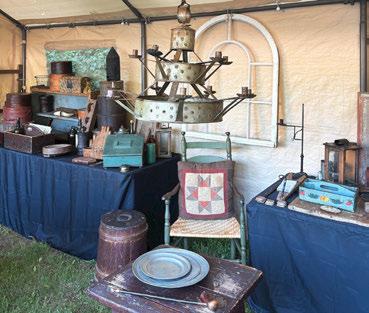
tory always has more than just Steiff, although he has developed an enviable reputation for that. For non-Steiff shoppers, his booth included a large blue barrel, stoneware, redware, textiles and an assortment of decorative items.
There was a selection of lighting devices to be had, ranging from hog-scraper candle holders to pierced tin lanterns. An exceptional early tin chandelier was in the booth of John Melby Antiques, Eastport, Maine; he asked we not quote his asking price. Melby has also developed an interesting sideline, for which he has little, if any, competition. He makes wooden “books” that perfectly mimic early leatherbound books. He had two large ones that looked like Eighteenth Century bibles. They would have fooled most people and they were priced at $200 each; smaller examples were priced accordingly. For those who want stone books, he had some of those, too. Fielding an eclectic booth, he also had a variety of woodenware and small painted furniture.
The show includes a few makers of items that go well in historic period settings. For example, Rick Hamelin, better known as the Pied Potter Hamelin, Warren, Mass., produces authentic reproductions of redware and slipware, as well as some of his own designs. He has worked at Old Sturbridge Village and participates in workshops at Historic Deerfield and elsewhere. There have been numerous exhibitions of his work and he shares his studio space with his partner, Garine Arakelian, who also pro-

Stacey Dailey, The Primitive House Antiques, Earlville, N.Y., was doing the show for the first time. The large chopping block had seen a lot of use in its day and was tagged $895.

duces redware, slipware and sgraffito decorated pieces. Together, they operate Kulina Folk Art. Most of their pieces are priced for less than $100 but some larger pieces such as teapots, which require more work, may sell for more than $200. Another craftsperson is Cathy Lee Amos, Kinfolk, Terryville, Conn. Her creations include cloth fruit such as strawberries, which were priced at $6 — and fully feathered chickens on baskets, marked $45 each. Lucille Festa, Wilton, Conn., creates hooked rugs with animal designs that look like they’re from the Nineteenth Century rugs. She told us their production is time consuming because she makes her own dyes and searches out the material for the rugs and the backing.
Not all the “new” things are meant for indoors. Milltown Primitives, North Stonington, Conn., creates things for the garden. Birdhouses made from gourds were priced $34 each; 4-foot sections of “twig” fencing — to keep the chickens out of the garden — were $49.
After the show, Kris Casucci said, “It was nearly a perfect day. The weather was great, the crowd was enthusiastic, and the weather encouraged them to spend time shopping. We had about 500 attendees. Our business was fine. Paul and I sold a stepback cupboard, an early sampler and more. We’re really fortunate to have the dealers we have and, from what I heard, they sold well. Our next show here will be September 28.”
For additional information, www.walkerhomestead.com or 508-867-4466.

These hooked rugs look they were made in the Nineteenth Century, but they weren’t. Lucille Festa, Wilton, Conn., makes them, drawing her inspiration from earlier examples. Prices started at $1,500.
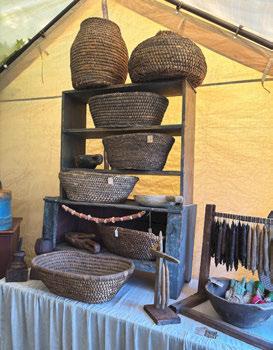
Tina Tosca, Fences & Hedgerows Antiques, Coatesville, Penn., sells baskets and, for the last three years, has had a focus on woven rye baskets, which she buys whenever she can. She had several at the show and they made an impressive display. The large oval examples in this photo range from $325 to $395. The very large covered one on the top shelf was tagged $695.
The large magnolia tree at the rear of the show field was a day or two past its prime display but still looked good. Heather Dreibelbis, Winter Wheat Antiques, Mifflintown, Penn., took advantage of the setting and used it as a backdrop for some of her offerings. She had an assortment of wood and tin primitives that included an early pair of leather child’s boots, which she had priced very reasonably at $19.

decorating the
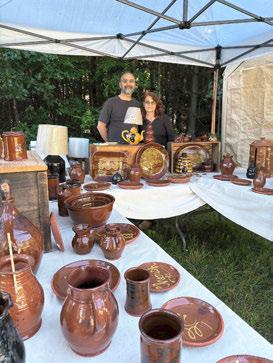
Mass. Both are experienced potters and offered a large selection of contemporary redware and slip decorated pottery. Much of their work is priced less than $100.
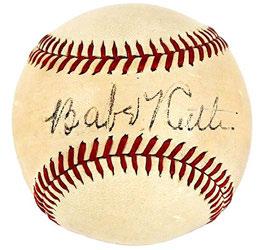
Hitting a home run with bidders was this American League baseball that was signed in the sweet spot, “Babe Ruth.” A New Jersey collector, making their debut at the auction house, won it for $10,625 ($10/15,000).
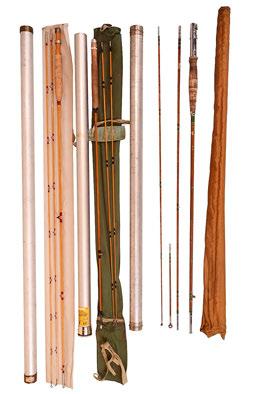
This lot of three vintage split bamboo fly rods were made by Ward and Hardy and brought the highest price of nearly 100 lots of sporting, angling and hunting collectibles. An Illinois collector paid $1,500 for the lot ($200/400).

One of two large meteorite chunks in the sale — both from Campo del Cielo, Argentina. This example sold for $5,313 and the private Pennsylvania collector who purchased it also won the other example ($6/9,000).
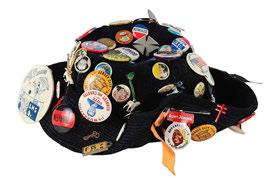
Pins for The Phantom and Superman joined political examples, as well as badges, ornamented this 1940s jughead hat. It multiplied its high estimate by a factor of ten, selling to a Florida buyer for $2,000 ($100/200).

Alexander Calder’s “Couleurs enlaces dans le fil de fer,” lithograph, signed and numbered in pencil, 43¼ by 29¾ inches, found a new home in the Netherlands with a buyer who spent $2,813 to win it ($3/5,000).
Review by Madelia Hickman Ring, Editor Photos Courtesy Nye & Company
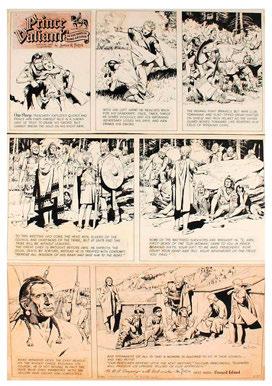
Finishing in a strong second-place finish of $10,000 was this original artwork for Prince Valiant, which was dated June 20, 1965, and inscribed by artist Hal Foster ($10/20,000).
BLOOMFIELD, N.J. — The contents of a local property John Nye described as “packed to the gills, with everything you could imagine: taxidermy, vehicles, artwork, meteorites among other things,” was a sizeable component of Nye & Company’s inaugural Gentleman Collector auction June 12-13. Providing exactly 651 lots of sporting and fine art, collectibles, musical instruments, tools and everything that might appeal to a masculine aesthetic — or for those still looking for a unique Father’s Day present — was on offer.
Andrew Holter, the firm’s recently minted president, sent his feedback from Baltimore, where he was taping Antiques Roadshow. “We were really pleased with the sale, which brought a large number of new bidders and buyers to Nye & Company. We set out to hold an auction with material that we aren’t known for selling, but that is fun and collectible. We found the participants to be enthusiastic, passionate, knowledgeable and competitive. Over half the auction was paid for and picked up within 24 hours. Clients can expect to see another ‘mantiques’ type sale in the future.”
Earning a solid $10,625 and top-lot honors was an official American League baseball, dated to circa 1942-45, which had been autographed by Babe Ruth. Authenticated by JSA, the ball sold to a first-time Nye bidder, a private collector in New Jersey.
Hal Foster, the creator of the Prince Valiant comic strip, inscribed the original artwork for a Sunday comic strip dated June 20, 1965, to Bill Dempsey, one time the circulation manager of Gannett Co., publications, one of the largest US newspaper publishers; Dempsey’s grandson was the seller. The buyer, at $10,000, was a private collector in the Midwest.
Nostalgia can be a powerful motivator among collectors and that was the case with a 1975
Triking three-wheeled sports car, which zoomed to $8,125, an increase over the $5,500 it brought when it was sold at auction in 2004. Nye said the buyer — a private collector in Tennessee — had recently retired and planned to rekindle his youth by driving it up and down the Blue Ridge Parkway with his brother.
Another three-wheeler, a gaspowered Freeway made in 1982 by HM Vehicles, was also in the sale. According to the catalog, the green single seater with fiberglass body was made in response to the 1970s energy crisis. A New Jersey trade buyer drove it off for $2,125. The sale proffered four lots of meteorites: two lots of assorted fragments and two lots of larger individual meteorites. Both of the larger examples were from Campo del Cielo, Argentina, and sold to the same buyer — a private collector in Pennsylvania. First up was a 33-pound chunk found by Rockgems in March 2004 that flew to $3,125; following it across the block was an 80-pound example that soared to $5,313. Leading the fine art category at $2,813 was “Couleurs enlaces dans le fil de fer,” a lithograph by Alexander Calder (American, 1898-1976), numbering 29 from an edition of 75. A buyer in the Netherlands had the prevailing bid. A 1940s black jughead hat, accurately cataloged as “profusely covered with pins and badges,” may have been the sleeper of the event, bringing $2,000 from a buyer in Florida. Prices quoted include the buyer’s premium as reported by the auction house.
Nye & Company’s next Estate Treasures Auction is scheduled for July 31-August 1; it will be followed September 11-12 by Country House Splendor; Featuring Property from the Estate of Barbara Mallory Hathaway.
For additional information, www.nyeandcompany.com, info@nyeandcompany.com or 973-984-6900.


This 1975 Triking three-wheeled sports car came with two helmets, an extra steering wheel, title and various paperwork. The Tennessee private collector who came to the sale with his brother and paid $8,125 for it, plans to drive it on the Blue Ridge Parkway now that he’s retired ($3/5,000).
John Nye recalled living in England for a year when he was young and seeing similar small three-wheeled vehicles there, so having this 1982 HM Vehicles Freeway “was a trip.” Though the barn find was not currently running, it came with original marketing materials and paperwork; a New Jersey trade buyer took it to $2,125 ($2/3,000).
NEW YORK CITY — The Center for Jewish History (CJH) and the Blavatnik Archive have announced the opening of their latest collaborative exhibition, “The Dreyfus Affair in Postcards: Going Viral at the End of the Nineteenth Century.” The exhibit offers a unique perspective on the infamous Dreyfus Affair through the lens of “Dreyfusard” and “anti-Dreyfusard” postcards from the late Nineteenth and early Twentieth Centuries.
The Dreyfus Affair began in 1894 with the false accusation and unjust conviction of Alfred Dreyfus, a Jewish officer in the French army. The events not only rocked France but also divided it deeply, bringing the nation nearly to the brink of civil war. This political scandal drew international attention, with prominent figures such as Émile Zola, Marcel Proust and Claude Monet supporting Dreyfus, while others, including Jules Verne and Edgar Degas, opposed him. The affair tested the impartiality and fairness of the French justice system and served as a pivotal moment for reevaluating societal attitudes toward religious and ethnic minorities.
Julie Chervinsky, director of the Blavatnik Archive, shared her thoughts on the exhibit, “By focusing on a vibrant popular medium — the picture postcard — we hope to bring to life the key events, stakes and impact of the Dreyfus Affair. Despite being more than 100 years old, these post-

view of “The
cards carry imagery and messaging with acute contemporary relevance and remind us of the dangers posed by nationalism and antisemitism to justice and personal rights.”
Dr Gavriel Rosenfeld, president of the Center for Jewish History, expressed his enthusiasm for this collaboration, "Our partnership with the Blavatnik Archive has allowed us to present a compelling narrative of the Dreyfus Affair through a unique visual medium. These postcards offer an early form of social commentary and provide valuable insights into the power of the era’s media to shape the perception of historical events."
Made possible by the generous support of the Blavatnik Family Foundation, the exhibition features expert commentary from Professor Maurice Samuels (Yale University), who sheds light on how picture postcards — an innovative and widely popular medium of the time — documented the controversy and allowed supporters and opponents of Dreyfus to com-
CHAPEL HILL, N.C. — Ackland Art Museum presents “Arranged: Recent Acquisitions of Modern and Contemporary Paintings” on view through September 1. Taking its title from a newly acquired work by Peter Halley, “Arranged” brings together a varied selection of more than 30 recent acquisitions of modern and contemporary paintings by 22 artists. Following similar exhibitions highlighting new additions to the collection of photographs (“PhotoVision,” 2014), modern prints and portfolios (“One of Many,” 2017) and drawings (“Drawing Attention,” 2021), “Arranged” offers a diverse range of significant paintings from the 1950s to the present that have entered the Ackland’s collection by gift, promised gift and purchase over the past half-dozen years. Twelve of the works are on view for the first time.
Highlights include works by UNC-Chapel Hill alums Frank Faulkner, Herb Jackson (with two paintings each) and Mark Brown; a powerful group of Color Field works by Jules Olitski and other painters of his generation such as Stanley Boxer, Jack Bush and Friedel Dzubas; and individual paintings by Greg Drasler, Jeff Elrod, Shanequa Gay,

“Arranged” by Peter Halley (American, b 1953), 2007, acrylic, fluorescent acrylic, and Roll-a-Tex on canvas, 82 by 67 inches. Ackland Fund, 2020.20. ©2024 Peter Halley.
John Gibson, Peter Halley, Reggie Burrows Hodges, Val Lewton, Allan McCollum, Beverly McIver and Philip Taaffe. The Ackland has also collected internationally, and “Arranged” presents works by Etel Adnan (Lebanon), Esther Mahlangu (South Africa), Pinaree Sanpitak (Thailand), Aníbal Villacis (Ecuador) and John Walker (Great Britain). Ackland Art Museum is at 101 South Columbia Street. For information, 919-9665736 or www.ackland.org.
municate their views in what can be seen as an early form of social media.
Professor Samuels, author of Alfred Dreyfus: The Man at the Center of the Affair , highlighted the significance of the postcards,
“These postcards from the Dreyfus Affair provide a picture of a nation torn in two by antisemitism, much like our current moment. Many of them also happen to be fascinating works of art. Seeing how political divisions manifested themselves through images gives us a new perspective on an important historical event and sheds light on the way that popular culture infiltrated new realms of experience at the end of the Nineteenth Century in France."
The Center for Jewish History is a vibrant hub for
exploring and preserving the Jewish History. Through exhibitions, events and educational programs, the center fosters a deeper understanding of Jewish history and culture.

The Blavatnik Archive is a nonprofit foundation dedicated to preserving and disseminating materials that contribute to the study of Twentieth Century world history, with a special focus on Jewish culture, World Wars I and II and Soviet history. Founded in 2005 by the businessman and philanthropist Len Blavatnik, the archive reflects his commitment to cultural heritage and supports primary source–based scholarship and education.
The exhibit is on view until November 1 at the Center for Jewish History at 15 West 16th Street. For information, www.cjh.org or 212-294-8301.

(413)

Open by appointment most anytime! New Website Coming! antiquesatwintergardenfarm.com Watch for photos!
Open by appointment most anytime! New Website Coming! antiquesatwintergardenfarm.com ~ Watch for photos!
For now please BE AWARE that the Barn will be open on the following dates prior to and during the three Brimfield Flea Markets. BUY HERE for Brimfield. We are filling the Barn with Fresh to the Market Antiques! Lots of new additions.
For now please BE AWARE that the Barn will be open on the following dates prior to and during the three Brim eld Flea Markets. BUY HERE for Brim eld. We are lling the Barn with Fresh to the Market Antiques! Lots of new additions.
July 3rd to July 9th
May 8th to May 13th OPEN DAILY 9:00 AM - 5:00 PM May 14th to May 19th BY APPOINTMENT
July 9th to July 14th BY APPOINTMENT
OPEN DAILY 9:00 AM - 5:00 PM
July 3rd to July 9th OPEN DAILY 9:00 AM - 5:00 PM
July 9th to July 14th BY APPOINTMENT
August 28th to September 2nd OPEN DAILY 9:00 AM to 5:00 PM September 3rd to September 8th BY APPOINTMENT
August 28th to September 2nd OPEN DAILY 9:00 AM to 5:00 PM
September 3rd to September 8th BY APPOINTMENT
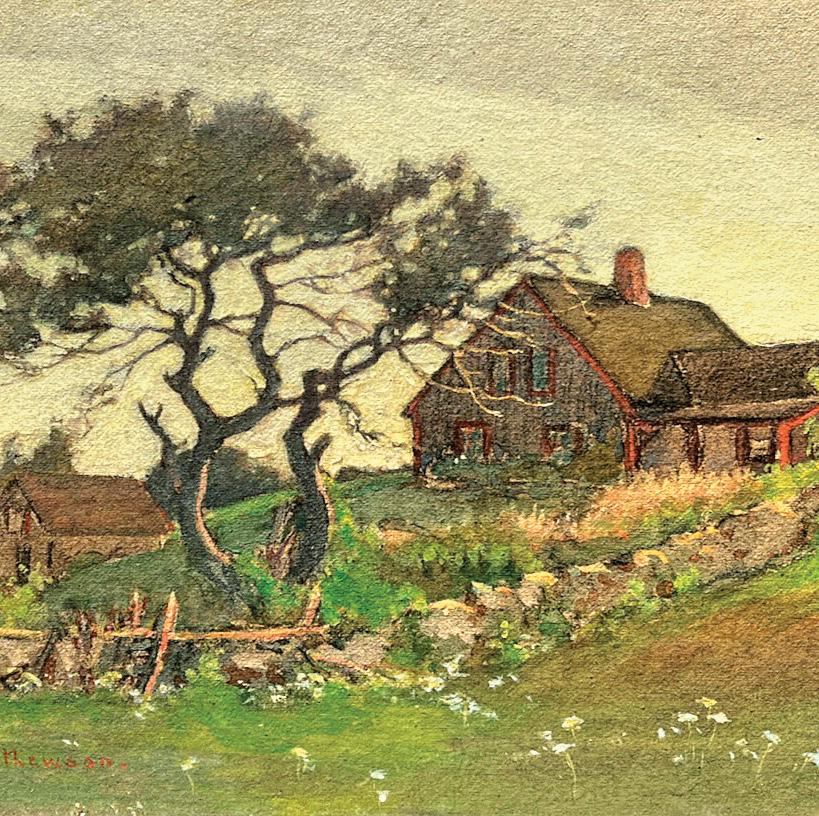

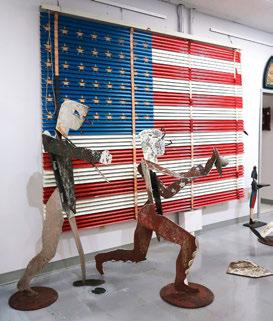

This circa 1875 American rooster weathervane, large at 36 inches tall and 31½ inches wide, had a historic, yellow-painted surface and brought $10,000 from a private collector ($3/5,000).
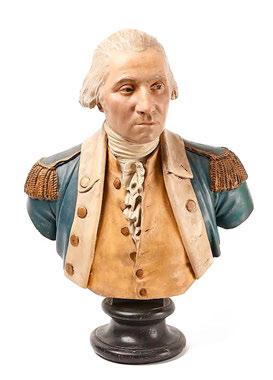
Nineteenth
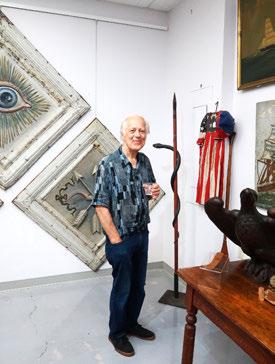
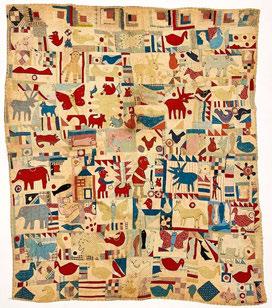
Despite some wear and imperfections, this hand-pieced and quilted folk art quilt, which was described in the catalog as “important,” brought the highest price of a small selection of quilts. A private collector won it for $8,125 ($2/4,000).

The collection offered a small but choice selection of fraternal antiques, which reached an apex of $12,500 with this circa 1865 Odd Fellows heart-in-hand shield-form plaque that was also the sale’s first lot. A Southern collector had the prevailing bid ($2/4,000).
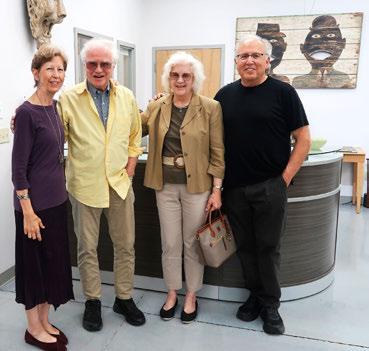
BRANFORD, CONN. — “Fred has kickstarted the Americana and folk art market again — it felt like a door was beginning to close but it’s now wide open.
I’m feeling incredibly grate ful to all the wonderful col lectors and dealers and friends who supported the sale, and even people I’ve never met. One of the most important things that was consistent throughout the entire sale experience was the profes sionalism of Fred, his wife, Kathryn, and the entire team at New England Auctions. It was seamless from the time they came to my house — which they did twice — to the day they opened the preview. The catalog was beautifully designed and the reception was a delightful gesture on their part; the staff really took pains to hang and place things to their best effect. I was over whelmed seeing it in the gal lery.”
Such was the rave review antiques show promoter Frank Gaglio gave Fred Giampietro and the rest of the team at New England Auctions following the successful sale of his collection on June 6. All but one of

That’s one top dog! Rising to $23,750 and the highest price of the day was this hitching post with seated dog, American, circa 1860
the 404 lots that crossed the podium that day found new homes and the auction achieved a total of $518,000.
“I always try to understand what a collector’s vision was and, because we’ve known each other for so long, I really wanted to make that happen and honor that,” Giampietro said. “I worked very closely with Frank, hearing how and why he bought what he did, and really enjoyed that. The sum of the parts was greater than the whole.” Gaglio’s collection was a mélange of forms and media, but color and form were clearly criteria he followed when collecting.
Earning the “best in show” moniker at $23,750 was an American hitching post described as “rare” with a seated hound at its top. Dating to circa
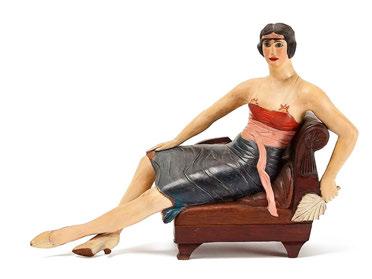
by

a private collector for $16,250 ($5/7,000).
1860 and measuring 37½ inches in height overall, it was cataloged as in “excellent original condition.” For those who may have been outbid on the hitching post, the collection offered other canine-form objects to chase, including a second dog hitching post that retained an old blackpainted surface and finished at $4,000. A pair of cast iron dogs, also American and dated only a little later to 1875, had old paint and fetched $16,250, more than doubling their presale high expectations. Continuing the dog theme, a strong result was achieved for a folk art painting of two horses and a dog; bidders chased the 1868 composition to $5,250.
The first lot of the day was an Odd Fellows heart-in-hand painted plaque with a red and gilt shield back. It was cataloged as circa 1865 and brought $12,500 from a Southern collector. Other fraternal artifacts in the sale included a Tramp art Odd Fellows wall cabinet ($3,000), a heart-in-hand shelf ($688), an Odd Fellows snake staff ($563), a few Odd Fellows painted wall panels that sold for prices ranging from $1,125 to $4,750 and a collection of fraternal hats — 17 in all — that achieved $563.
Weathervanes were also a sizeable sub-category and collectors pursued a variety of forms, from horses and eagles to fish, cars and even a moose that a savvy bidder bagged for $1,000. Flying to $10,000 was a 36-inch-tall molded and sheet copper rooster weathervane dated as circa 1875 that
retained a historic yellow painted surface the catalog noted was about 100 years old.
Burl collectors were limited in their options but an Iroquois oval carved burl bowl with open handles that was cataloged as from the Northeastern United States, Eighteenth Century, was described as a very good example and achieved $11,250.
A wide variety of media presented the human form in all its glory. A carved reclining lady, initialed and dated “G.K. 1919” on its base and measuring nearly 12 inches retained its original paint and sold for $9,375. An imposing 62-inchtall cast zinc figure holding a cornucopia that had weathered paint topped off at $8,125, a few increments ahead of the $6,875 a private collector paid for a Nineteenth Century cast plaster bust of George Washington that measured 30 inches in height. Three nearly life-sized figures of baseball players by Mike Evans were brought home for $2,750, while bidders spun a Highlander whirligig to $1,250.
Textiles in the sale were limited to just six lots, but the one that topped the category — a late Nineteenth Century handpieced and quilted folk art pictorial example — earned a strong $8,125 and sold to a private collector. Matching it in color if not in size or price was a circa 1890 Pennsylvania childsized star quilt that had been professionally mounted that traded hands for $1,625.
Painted — and unpainted — furniture was also a comparatively small category, led at

Measuring 7¼ inches high with a length of 20¾ inches, this Iroquois oval carved burl bowl, Eighteenth Century and cataloged as in “excellent original condition” was won by a trade buyer for $11,250 ($6/12,000).

collected boxes

Making a colorful statement, this circa 1825 American corner cupboard in original apple-green paint will liven up the home of a private collector, who paid $7,500 for it ($1/1,500).
$7,500 by an American circa 1825 corner cupboard in applegreen paint the catalog described as original. Following were an Eighteenth Century Hudson Valley settle bench ($6,250), a circa 1760 New England Queen Anne maple and pine blanket chest on frame ($4,000) and a vibrantly painted blanket chest

This 20-by-30-inch oil on canvas composition was dated 1868 but otherwise, little additional information was available. Bidders liked it enough that it sold to a trade buyer for $5,250 ($400/800).

with cat’s-eye grain painting, from Pennsylvania, circa 1840 ($1,500).
New England Auctions is conducting its Summer Americana Extravaganza on July 18; an automobilia and advertising sale will take place September 12; and, on October 10, the house will sell the Collection of Thomas F. and Tess L. Schutte. Prices quoted include the buyer’s premium as reported by the auction house. For more information, 475-234-5120 or www.newenglandauctions.com.
Bringing
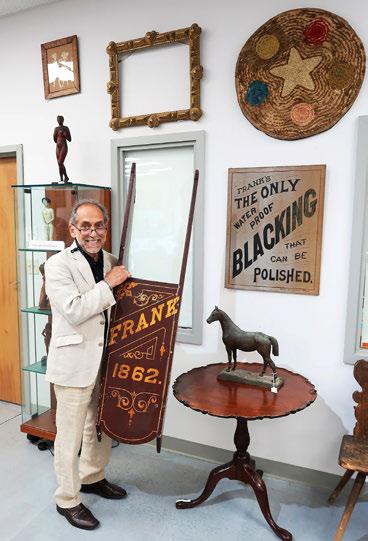

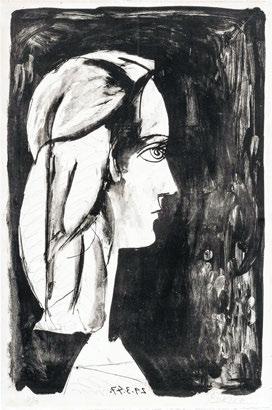
“Profil Au Fond Noir” by Pablo Picasso, March 29, 1947; lithograph on Arches wove paper, 20¾ by 12¼ inches, numbered 39/50, was the highest selling lot over the course of the two-day sale, earning $19,350 ($10/15,000).

In excellent condition, this 27-inch-high carved wood countertop cigar store display of heavyweight boxer Jack Johnson, carved by Samuel Anderson Robb (American, 1851-1928), exchanged hands for $13,640 ($7/10,000).
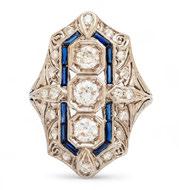
Hailing from a Taylor, Mich., private collection, this Art Deco 14K diamond and sapphire ring crossed the block for almost five times its high estimate. It was set with three old mine cut diamonds, approximately 0.2-0.25 carats each, 16 single cut diamonds and 12 blue sapphire baguettes. The size 8.5 ring was purchased by a local bidder for $4,960 ($800-$1,000).
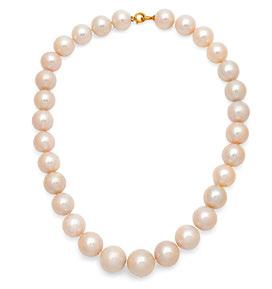
This 129-gram, 18½-inch South Sea pearl necklace with an 18K yellow gold clasp was the top selling lot for session one, earning $7,440. The clasp contained 12 diamonds, which weighed 0.072 carats total ($3/4,000).
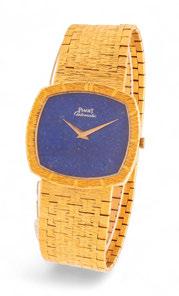
An American internet bidder took home this selfwinding French Piaget 18K yellow gold automatic wristwatch with a lapis lazuli dial for $6,200. It was purchased from Jules R. Schubot of Detroit, Mich., and was in a Bloomfield Hills, Mich., private collection. The 90-gram watch contained “Piaget” and “750” markings on the clasp and signature branding at the 12:00 position. It was 7½ inches in length and 1¼ inches wide ($6/8,000).
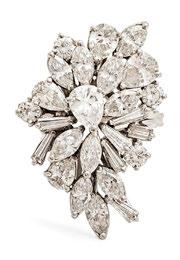
Antiques and The Arts Weekly
“The level of interest and participation from bidders was impressive. We had a robust live audience as well.”
DuMouchelles attracted an international audience, with nearly 10 percent of sales were outside of the United States, from China, India, Europe, New Zealand and Canada.
DETROIT, MICH. — On June 13 and 14, DuMouchelles conducted its June auction, which offered almost 800 lots over the course of two days. Day one consisted of fine jewelry, luxury timepieces, decorative art, Steuben glass and sterling silver pieces. Day two focused on fine art, antiques and collectibles from prestigious estates and private collections. In total, the two days had a sell-through rate of nearly 90 percent. “We are very satisfied with the results,” Joe Lint, technology and marketing manager at DuMouchelles told
This carved Carrara marble sculpture of Benjamin Franklin, done by Domenico Menconi (Italian, Nineteenth Century), from 1877 was won by a European internet bidder for $12,400. The 31-inch-high statue contained “finely detailed carving with texturing to the clothing and veins and wrinkling to the skin,” according to the auction catalog, and had provenance to a Grosse Pointe Park, Mich., pri vate collector ($5/8,000).
“Profil Au Fond Noir” by Pablo Picasso (Spanish, 1881-1973), offered on day two, led both days of the auction, earning $19,350 against a $10/15,000 estimate. The lithograph, done on Arches wove paper, was numbered “39/50” and signed in pencil on the lower right. It had provenance to London Arts, Inc., Detroit, shown via a paper label, affixed verso. From there, it was purchased directly by a prominent print collector from Southfield, Mich. The lithograph was printed by Mourlot Editions, Paris, with full margins. It went to a new home with an American internet bidder.
Earning the title of top lot on day one was a South Sea graduated pearl necklace. The 18½inch necklace consisted of what the auction catalog described as “beautiful iridescent pearls,” ranging from 14 to 17 millimeters, and an 18K yellow gold clasp adorned with 12 diamonds, weighing 0.072 carats. The total weight of the necklace was 129 grams and it had “Au 750” gold hallmarks on its clasp. Consigned from a Hawaiian private collection, it sold for $7,740 to a local bidder, at almost two times its high estimate.

Also from day one was a 12-gram diamond and platinum cocktail ring from a Taylor, Mich., collection, which crossed the block for $7,095.
The circa 1950 ring was platinum with a white gold finger-fit shank. It contained five pear shaped diamonds, 10 marquisecut diamonds, seven tapered baguette-cut diamonds and four round full-cut diamonds, for a total aggregate weight of approximately 5.85 carats. All the diamonds were fine white VVS II quality. An appraisal for insurance by Fruchter & Brodie Inc., Southfield, Mich., from 1977, was included with the lot; it was purchased by a local telephone bidder.
Another notable lot from day two was a carved wood counter top cigar store display by Samuel Anderson Robb (American, 1851-1928). The display was a relief carved figure of Jack Johnson, the first African American heavyweight boxing champion. In 1920, Johnson also opened Club Deluxe, a 400-seat nightclub in Harlem, New York City. A relief carved plinth on the display read “Havana Cigars the Blend of Champions 5¢” on its front and “Cotton Club Champion Jack Johnson, New York Club Deluxe” on its back. The 27-inch-high display had provenance to the estate of a private collector from Windsor, Ontario, Canada, who was known for his collection of North American Indigenous Peoples’ artifacts and memorabilia. Its excellent condition encouraged bidders to push it to $14,190, with an American internet bidder winning the day.
DuMouchelles will conduct another two-day sale on July 18 and 19. Day one will feature online exclusives, including prints and etchings from the estate of Leon Zielinski. Day two will focus on premier selections, including a presidential document signed by Abraham Lincoln.
Prices quoted include the buyer’s premium as reported by the auction house. For information, www.dumoart.com or 313-9636255.

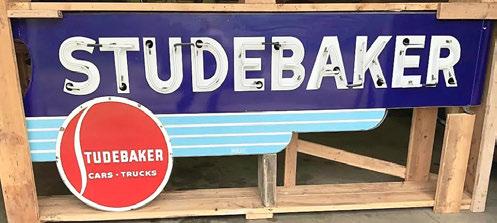
This all-original Studebaker Art Deco porcelain and neon bullnose sign sold solidly within estimate for $19,305 to an online bidder. The double-sided sign with cobalt blue, red and white motif, made by sign manufacturer Walker & Co., came from an advanced private collection.
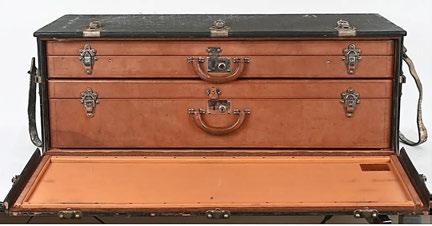
A vintage Louis Vuitton car trunk sold for $19,305. It was in all original condition with black leather finish and nickel hardware, all with the “LV” monogram. The trunk still had its original label with 70 Champs Elysees address and it came with two fitted suitcases in brown leather finish.
The star attraction of Milestone Auctions’ June 15 sale was an all-original Studebaker Art Deco porcelain and neon bullnose sign, which sold solidly within estimate for $19,305 to an online bidder. The double-sided sign was painted with a sharp-looking cobalt blue, red and white motif and measured 10 feet 6 inches long, 47 inches tall from the top to the Studebaker red dot, and 2 feet tall at the other end. It was made by sign manufacturer Walker & Co., and came from an advanced private collection. Of course, you must pack that Studebaker with something.
How about a Louis Vuitton car trunk with cases? It followed the sign, selling for $19,800.
More vintage advertising signs, toys, coin-ops and old coins made up this 814-lot sale, which totaled $650,000 with a 90 percent sell-through rate, according to Miles King, the firm’s co-owner.
Like the Studebaker sign, a double-sided round porcelain sign for Cadillac Authorized Service effectively conveyed its message with the use of a primary color. Also by Walker & Co., Detroit, this sign, with the distinctive Cadillac brand’s crown-and-shield French coat of arms, brought

Oil
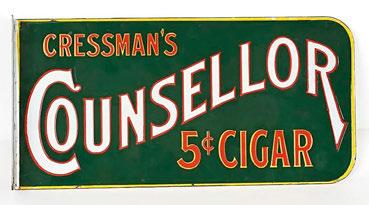
$11,700.
A price of $12,000 was posted for a Chevron porcelain and neon three-dimensional sign, which exhibited great colors. The catalog noted that while the neon was in great shape, the 32-by-23-inch sign flickers but does not light up. Boasting a bright palette of colors, a “Night Lubrication” double-sided porcelain sign produced for Shell Gasoline & Oils Co., came with a stand and measured 31¾ inches tall. It more than doubled its high $5,000 estimate, clocking $11,700.
Paddles were airborne for a
Pontiac Authorized Service sign that made $10,762. The double-sided porcelain example had great colors and clean fields with only a minor chip or two. All in all, it was a great looking sign. And who could resist the iconic sign advertising the granddaddy of petroleum companies, the Standard Oil Company, founded in 1870 by John D. Rockefeller. The double-sided porcelain service station sign retained its nice colors but was missing its flame. Still, the 59-by-42-inch sign made a great display and left the gallery at $5,904.
A double-sided round porcelain sign for Cadillac Authorized Service by Walker & Co., Detroit, emblazoned with the distinctive Cadillac brand’s crown-and-shield French coat of arms, realized $11,700.
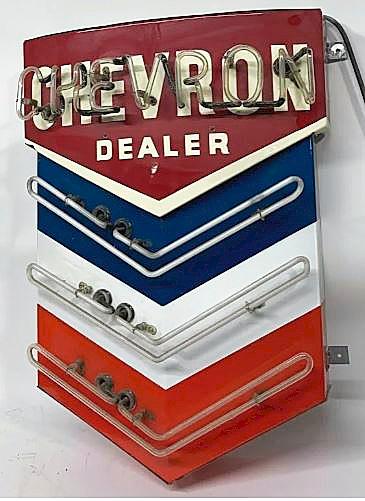
An emerging popular subcategory in vintage plate signage are those examples that are made specifically to affix to something. The auction offered a great example in the form of a Cressman's Counsellor 5-cent Cigar flange sign with lettering and background color to die for. Estimated at just $300/500, the double-sided porcelain sign, 20 by 10 inches, lit up to $4,059.
Prices given include the buyer’s premium as stated by the auction house. For information, www.milestoneauctions.com or 440-527-8060.


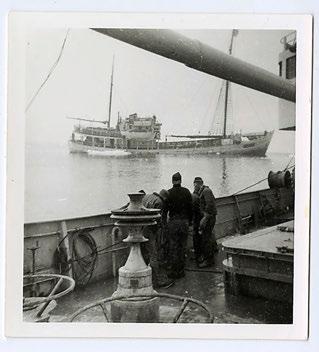
This photo provided by the Royal Canadian Geographical Society shows the Quest ship sinking off the coast of Labrador, Canada, May 5, 1962. The wreck of the last ship belonging to Sir Ernest Shakleton, an Irish-born British explorer of Antarctica, has been found by an international team led by the Royal Canadian Geographical Society. The Quest was found using sonar scans on Sunday evening, June 9, 2024 (Tore Topp / Royal Canadian Geographical Society via AP).
ST JOHN’S, NEWFOUNDLAND (AP) — The wreck of the last ship belonging to Sir Ernest Shackleton, a famous Irish-born British explorer of Antarctica, has been found off the coast of Labrador in Canada, 62 years after it went missing. The wreck was found by an international team led by the Royal Canadian Geographical Society.
The Quest was found using sonar scans on Sunday evening, sitting on its keel under 390 meters (1,280 feet) of churning, frigid water, the society said. Its towering mast is lying broken beside it, likely cracked off as the vessel was sucked into the depths after it struck ice on May 5, 1962.
“I heard that some Americans were interested in finding Quest, and I just had this picture in my mind of a few billionaires on yachts, up in the Labrador Sea,” John Geiger, leader of the Shackleton Quest Expedition and the chief executive of the Royal Canadian Geographical Society, told an audience at the Memorial University’s Marine Institute in St John’s, Newfoundland, on Wednesday, June 12.
“We’ve done it the right way. It’s not about anyone’s ego, it’s about telling great stories and celebrating some of the finest human attributes,” Geiger said.
He called the Quest a historically very important ship.
Shackleton’s death aboard the ship in 1922 marked the end of what historians consider the “heroic age” of Antarctic exploration. The explorer led three British expeditions to the Antarctic, and he was in the early stages of a fourth when he died of a heart attack. He was 47.
The Norwegian-built Quest was a schooner-rigged steamship, and Shackleton bought it specifically to travel to Canada’s High Arctic, Geiger said. But the Canadian government at the time axed those plans, and Shackleton decided to set sail once again for the
Antarctic.
He died when it was just off South Georgia, east of the Falkland Islands in the South Atlantic.
After the explorer’s death, the Quest was used for Arctic research and then returned to its original intended use as a sealing vessel. It sank in 1962, after it was damaged by ice in the Labrador Sea while on a whaling trip.
The vessel appears to be in “incredible condition,” though it was damaged when it slammed into the seabed, Geiger said.
It won’t be brought to the surface — that would be far too expensive, he added — but it will be thoroughly documented and studied. A crew will likely head out some time before the end of summer to begin taking footage of the vessel with a remotely operated vehicle.
In 2022, researchers discovered another one of Shackleton’s ships, the Endurance in 10,000 feet — about 3,000 meters (9,800 feet) — of icy water, a century after it was swallowed up by Antarctic ice.
A team of marine archaeologists, engineers and other scientists used an icebreaker ship and underwater drones to locate the wreck at the bottom of the Weddell Sea, near the Antarctica Peninsula.
The expedition Endurance22 embarked from Cape Town, South Africa, in early February in a ship capable of breaking through 3-foot (1-meter)-thick ice.
The team, which included more than 100 researchers and crew members, deployed underwater drones that combed the seafloor for two weeks in the area where the ship was recorded to have sunk in 1915. Shackleton never achieved his ambition to become the first person to cross Antarctica via the South Pole. In fact, he never set foot on the continent during the failed Endurance expedition, though he did visit Antarctica during earlier voyages.
SWINDON, U.K. — A 24-year conservation project of a set of tapestries has won an international heritage award. Britain’s National Trust were given the Europa Nostra Award for its work to conserve the Gideon tapestries at Hardwick Hall in Derbyshire — the trust’s longest conservation project, which cost £1.7 million ($2.15 million) to complete. The work was done by hand by the trust’s textile conservators and involved traditional sewing and stitching techniques.
The 2024 European Heritage Awards / Europa Nostra Awards, co-funded by the Creative Europe program of the European Union, announced 26 winners with only four, including the Gideon tapestry project, from the United Kingdom.
Hardwick Hall is renowned for its textiles, including an extensive collection of irreplaceable tapestries.
The set of 13 Gideon Tapestries were bought by Bess of Hardwick, a friend of Elizabeth I, in 1592 from their original owner, Christopher Hatton. They are nearly 6 meters high and total more than 70 meters in length (20 by 230 feet), making them one of the most ambitious tapestry sets of their time and the largest surviving set in

Conservators attach the lower border to one of the Gideon Tapestries returned to Hardwick Hall | ©National Trust Images/Trevor Ray Hart photo.
the United Kingdom. The conservation work involved treating the set of tapestries as a complete whole rather than individual pieces.
That meant our conservators used hand-dyed yarns following recipe books to ensure the same colors, and stitch guides so stitches were accurately spaced to achieve consistency over the length of the project.
Claire Golbourn, National conservator, textiles, said, “I am extremely privileged to have worked on the first Gideon tapestry at the studio as the conservation technician in
2000 where I remember removing the old lining and finding the embroidered monograms of Christopher Hatton in the corner of the tapestry. I am lucky enough to have seen the last tapestry leave the studio as the textile studio manager.
“Receiving this award is recognition to the team of dedicated people that have worked on this project, past and present. A huge number of people made this project happen and it has been a triumph but will also be strange not to have a Gideon tapestry in the studio.”
Claire Golbourn, National
Trust national conservator, textiles said of the Europa Nostra Awards, “This 24-year endeavor exemplifies unparalleled dedication and collaboration, showcasing the depth of European heritage preservation. Through meticulous research the remarkable Gideon Tapestries have been safeguarded for future generations. This project is a testament to professionalism and the level of skill in conservation which are often unseen, but are very much worthy of celebration.”
The tapestries tell the story
of Gideon, one of the 12 Judges to appear in the Old Testament Book of Judges, who leads an army to save his people from the Midianites.
The work to conserve the tapestries, mostly carried out at our own Textile Conservation Studio in Norfolk, started in 1999 and was completed last summer (July 2023) when the final one of the set returned to Hardwick Hall’s Long Gallery. Emma Slocombe, senior National curator for textiles, said, “These astonishing tapestries have been in the Long Gallery since it was first decorated at the end of the Sixteenth Century. Extraordinarily, that’s where they remain. Unlike many tapestries they’ve never been moved to another home, dispersed or cut up. Everything at Hardwick is pre-eminent and these tapestries are unique, an ambitious statement at the heart of an architectural masterpiece.”
The conservation project was made possible over many years because of funding from the David Webster Charitable Trust, the Wolfson Foundation, the Royal Oak Foundation, National Lottery Heritage Fund and other charitable trusts and foundations and individual donors.
—
Exclusive to Sydney, the Art Gallery of New South Wales presents “Alphonse Mucha: Spirit of Art Nouveau.” On view until September 22, the exhibition traces the life and work of one of the great pioneers of the Nineteenth Century art world, Czech Art Nouveau master Alphonse Mucha, and will be the largest exhibition ever seen in Australia of this visionary artist’s work.
In seductive, sinuous compositions, Alphonse Mucha (18601939) developed a new stylistic language that defined the look of late Nineteenth Century Paris to be the very spirit of Art Nouveau, creating some of the most instantly recognizable and best-loved works in modern European art.
This exhibition, exclusive to the Art Gallery, is realized in close cooperation with the Mucha Foundation, Prague, and is drawn from the Mucha Family Collection. The exhibition features more than 200 works including paintings, illustrations, posters, jewelry, photographs, sculpture and

more. It is co-curated by Tomoko Sato, curator of the Mucha Foundation, and Jackie Dunn, senior curator of exhibitions at the Art Gallery.
Declared during his lifetime as “the greatest decorative artist in the world,” Mucha rocketed to fame with the posters he created for legendary actor and international superstar Sarah Bernhardt, before going on to receive global recognition through his advertising and product design — and the decorative panels that
were his first steps towards the democratization of art that he so desired.
This exhibition will explore his full oeuvre from the early years before he moved to Paris in 1887, to his famed poster art and the development of the “Mucha style.”
His late great painting cycle, “The Slav Epic” (1912-26), comprised 20 grand canvases, is brought to life in Sydney as an immersive digital experience.
Art Gallery director Michael Brand said, “Alphonse Mucha was
one of art’s great stylistic innovators and while best known for his iconic posters and decorative designs that contributed to the development of Art Nouveau. We hope this truly comprehensive exhibition will offer audiences the chance to take a deeper look at the remarkable life of this fascinating artist and his humanistic ideals. We are grateful to the Mucha Foundation for their generosity in lending these treasures to allow audiences here in Sydney the chance to discover an exhibition not only rich in art but also in history, human achievement and political commitment,” said Brand.
Minister for the Arts, Music and the Night-time Economy, and minister for Jobs and Tourism John Graham said, “Lovers of Art Nouveau will be treated to a spectacular exhibition of the life and work of this visionary artist. Between this and the annually anticipated Archibald Prize exhibition, visitors to the Art Gallery of New South Wales are in for a visual feast this winter.”
Alongside Mucha’s own work, the exhibition will also feature a selection of Japanese prints from the Art Gallery’s exceptional ukiyo-e collection, the likes of which circulated during Mucha’s time in Paris in the late Nineteenth Century and profoundly influenced the Art Nouveau style. Also on display will be an exciting selection of 1960s and 1970s band posters and LP record covers, as well as more recent Japanese manga, that followed the countercultural rediscovery of Mucha’s art, showcasing his recent and ongoing influence on modern culture.
The exhibition is accompanied by a richly illustrated catalog, written by Tomoko Sato, a leading Mucha expert and curator at the Mucha Foundation. The publication features more than 200 stunning images depicting Mucha’s art and life, including rarely seen archival photographs.
The Art Gallery, New South Wales, is at Art Gallery Road, The Domain. For information, www.artgallery.nsw.gov.au.
BANGKOK, THAILAND & CHICAGO — The Art Institute of Chicago, in collaboration with the Kingdom of Thailand, announced today that it has initiated the return of an object — a fragment of a pilaster with Krishna lifting Mount Govardhana — to its place of origin in Thailand. The museum is committed to ongoing provenance research of its collection, and after conducting new research on this object, the museum proactively reached out to the Thai government to initiate the process to return it.
The object is a Twelfth Century fragment of a pilaster, which is a rectangular architectural column in the side of a doorframe. The pilaster was previously attributed to Cambodia, and new research identified that it originated at the Phanom Rung tem-
ple in northeast Thailand, a temple that the museum had previously returned an object to in the 1980s. With the confirmation of the pilaster’s origins, the museum reached out to the government of Thailand to share these new findings; this collaboration has led to today’s return.
“We are grateful for our close collaboration with the Fine Arts Department in Thailand and are honored to take this step in what I hope is a long and productive partnership,” said James Rondeau, president and Eloise W. Martin director of the Art Institute of Chicago. “We are deeply committed to fostering an ongoing relationship and continuing to learn from each other.”
The Phanom Rung temple is the place of origin of another object — known as the Vishnu lintel — that was previously in
the museum’s collection and that was returned to Thailand in 1988. Since that time, the lintel has been restored to the structure; it is the Art Institute’s hope that the pilaster fragment is able to be restored to the same temple and these objects can be reunited.
“This act serves as a model for ethical collecting practices and strengthens the bonds of cultural respect and collaboration between Thailand and the Art Institute of Chicago,” said Phnombootra Chandrajoti, director-general of the Fine Arts Department. “This valuable artifact is from one of the most significant archeological sites in Thailand and we are glad it is returning to its motherland.”
Provenance research remains an institutional priority for the Art Institute. In addition to
growing its provenance team, the museum has also established a task force of senior leaders at the museum who work closely with curators and researchers to inform institutional direction on these important topics.
“This collaboration with the Kingdom of Thailand is just one example of the important work that our provenance research team prioritizes across the institution,” said Sarah Guernsey, deputy director and senior vice president for Curatorial Affairs at the Art Institute of Chicago. “We are living up to our commitment to proactively and rigorously research works in our collection and transfer the ownership of objects that research demonstrates should be returned to their country of origin.”

MADRID, SPAIN — The Museo del Prado is co-publishing the series “Art and Gender in the Museum. The Prado Collection” with Amsterdam University Press. With this pioneering initiative, for the first time a museum is devoting a series of studies to examining the formation and evolution of its collections from a gender perspective, analyzing how these dynamics have influenced the creation, representation and reception of its collections.
This new and ambitious series arises from the Prado’s commitment to making the role of women in the world of art visible, whether as an artist, patron and collector or as a subject of the male gaze, while also allowing for a consideration of the construction of gender and its reflection in the
museum's collections.
Edited by Noelia García Pérez, director of “The Female Perspective” project, the series presents new research aimed at bringing readers and visitors closer to the Prado’s collections in all their scope, from the standpoint of gender studies and with a particular emphasis on women.
The series includes new studies focused on the output of women artists and their presence or absence in the galleries and also examines the link between the formation of the Prado’s collections and women artistic promoters as well as the role of women in inspiring some of the masterpieces in the collection.
The editorial committee includes important international and national researchers, such as,
Estrella de Diego (Universidad Complutense de Madrid), Sheila Ffolliott (George Mason University), M. José Rodríguez Salgado (The London School of Economics and Political Sience-Oxford University), Alejandro Vergara (Museo del Prado), Carmen Gaitán (CSIC) or the director of the prestigious Jane Fortune Research Program on Women Artists (Medici Archive Project), Sheila Barker.
Women patrons and artists have motivated a significant number of publications in recent decades but this is the first series to address the study of the creation of one of the largest art collections in the world, now housed in the Museo del Prado, through a gender perspective and focusing on the women who promoted,
inspired, created, donated and conserved many of the works preserved and displayed in this institution in order to demonstrate the crucial role that they played in the production, promotion, dissemination and conservation of art.
With a broad chronology that corresponds to the museum's collections, this series will allow for an examination of the role of women and their relationship with the arts, as well as the evolution of this important institution and its connection with them.
One of the principal objectives of this unique series is that of understanding the complex and multifaceted interaction between women, gender theory and the evolution of the Museo Nacional del Prado. Contemplating the
possibility of other art histories from a critical perspective allows us to understand that this is a living field, in permanent transformation and in dialogue with contemporary changes in thought. This innovative approach makes it possible to deepen and broaden the scope of current studies, exploring new areas of research including aspects such as who these women were and what they created or collected, contributing new information on the construction of female networks and the exchange and promotion of art and artists, together with a contemporary reflection on gender in the present-day collections and exhibitions.
The Museo del Prado is at Paseo del Prado. For more information, www.museodelprado.es/en.





BY MADELIA HICKMAN RING, EDITOR
MILTON, MASS. — Emily Post wrote, in Etiquette in Society, in Business, in Politics, and at Home (New York, 1922), “A bachelor’s house has a something about it that is very comfortable but entirely different from a lady’s house, though it would be difficult to define wherein the difference lies.”
A new exhibition at Historic New England’s Eustis Estate, “The Importance of Being Furnished: Four Bachelors at Home” takes up Post’s quote almost like a challenge. In the exhibition, which is on view through October 27, the lives — and lifestyles — of four largely contemporary Nineteenth Century New England bachelors are examined. Exploring not
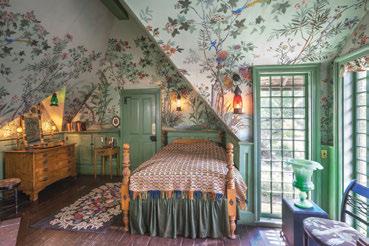
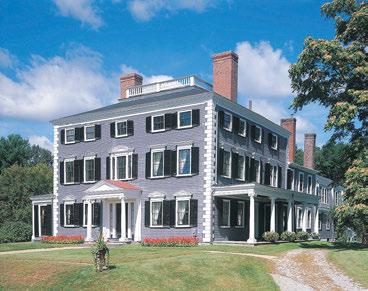

only stories of four historic homes and their creators — Charles Leonard Pendleton (1846-1904), Ogden Codman Jr (1863-1951), Charles Hammond Gibson Jr (187-1954) and Henry Davis Sleeper (1878-1934) — the exhibition also takes a deep dive into the evolution of American interior design and the role each played in developing the burgeoning field of American interior design. In the process, contemporary assumptions and historical inaccuracies are corrected.
The exhibition is curated by R. Tripp Evans, professor of Art History at Wheaton College in Norton, Mass., whose book by the same name was the basis for the exhibition. Evans shared with Antiques and The Arts Weekly that the idea for The Importance of Being Furnished: Four Bachelors at Home (Rowman & Littlefield, 2024) was inspired by a series of imaginary “family portraits” by contemporary artist Hannah Barrett at the Gibson House Museum in 2011.
Evans writes in his introduction, that despite there being other men who fit the mold, he chose these four men because they all share the same period, region, class, social networks and vocation — all were involved, to lesser or greater
degrees, in professional interior decoration.” For this reason, he “was able to cast their dazzling range of styles in higher relief.”
His intent was “to demonstrate that the era’s insistence on individual expression defied even the potentially leveling influence of their shared profiles.” In each case study, he writes, “We encounter a man whose story speaks to the period’s bachelor house phenomenon more broadly.” He defines the “bachelor house phenomenon” as “a convergence of factors — historical, literary, economic and sexual — that, for the first time in the modern era, established the single man’s household as an aspiration domestic model.”
Irish poet and playwright Oscar Wilde (1854-1900), who spent much of 1882 on an American lecture tour, was, in Evans’ view, a critical driving force espousing the “art for art’s sake” message of the Aesthetic Movement, which also upheld the idea that “beauty” was an end to itself rather than as a vehicle for moral purpose. This was in direct contrast to the earlier Victorian ideal of the home as the place to nurture the Christian ideals of family and the purity of marital love. In fact, marriage was considered anathema to any bachelor
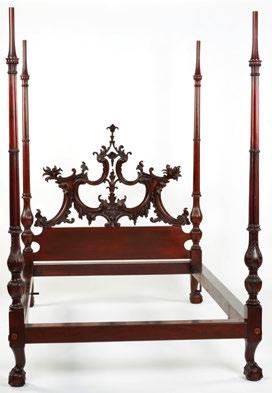


who wanted to live comfortably. Evans explains further: “These houses were aspirational in the sense that, for many critics, a (well-heeled) bachelor’s home represented the purest form of individual expression. Without spouses or children, these bachelor-decorators had the freedom to create homes that reflected a singular artistic vision, which, according to Wilde, was the ultimate goal in home decoration.”
Visitors to the exhibition may be curious if there was a corresponding feminine aesthetic but Evans is clear to note that he found no evidence of how single women decorated. Additionally, he points out undertones of misogyny in period accounts that justify the bachelor aesthetic by attesting to the inability of women to create sensual or comfortable environments.
Does it matter that all four men were gay, or presumed to be so? Evans makes a strong circumstantial case in the book and exhibition, saying, “It would be irresponsible to ignore the points where the men’s decorating and sexuality coincide as it would be to suggest this alignment was experienced similarly by them all. However varied their experiences might have been, the choices they made as
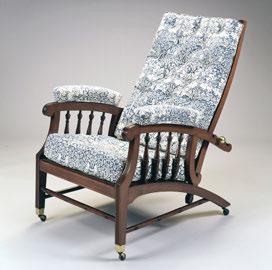

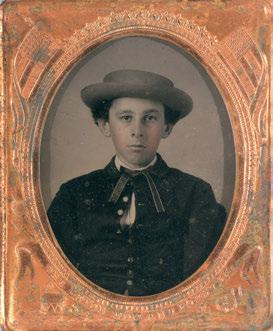
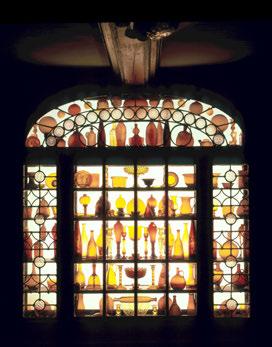
designers and collectors greatly depended upon their relationships with those who crossed their threshold — and not least with those who shared their hearts and beds.”
Of the four bachelor studies, Codman stands out the most for his contributions to the field of interior decorating. As a professional decorator and occasional architect, he had several Gilded Age and Edwardian-era clients from the 1890s to 1920, including his early commission for the Vanderbilt family in 1893-95. He co-authored The Decoration of Houses (1897) with Edith Wharton, a hugely popular treatise that Evans notes established Codman as “one of his period’s greatest tastemakers.” Codman’s friend, the architect Arthur Little, encouraged Sleeper’s interests in decorating; Sleeper would go on to work for the Vanderbilt family in the 1920s and 30s, Henry Francis du Pont and Hollywood clients such as Joan Crawford. Among aesthetic contributions would be Sleeper’s practice of mixing high- and low-valued works and collecting American folk art.
The exhibition features many never-before-exhibited pieces from the men’s homes, as well as historic photographs, paintings, drawings and ephemera. Together, these works illumi-
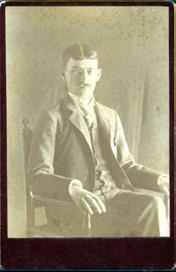

nate the private worlds of Codman, Gibson, Pendleton and Sleeper as well as those they created for clients.
The book and exhibition contest the idea that collecting is either a form of suppressing unwanted or unacceptable urges, or the hoarding response to a loss. The homes of Pendleton, Codman, Gibson


and Sleeper are celebrated for their expressions of creativity and joy and without negative connotations. Evans interprets the concept of being “at home” in several ways. Not only did bachelors derive pleasure and comfort from their surroundings but also the social status and power one achieved by being able to receive visitors. Having the means and impressively designed space in which to do so and being able to dictate who could visit were other ways one could be at home, but perhaps most importantly, it gave the bachelor a semi-public space to be “his most private self.”
Given the evolution of the field of interior design and the near assumption that many current male interior designers are gay, one cannot help but wonder what Codman, Gibson, Pendleton and Sleeper would think of the world today.
“The Importance of Being Furnished: Four Bachelors at Home” will be on view at the Eustis Estate, at 1424 Canton Avenue in Milton, through October 27.
For information, 617-994-6600 or www.historicnewengland.org.
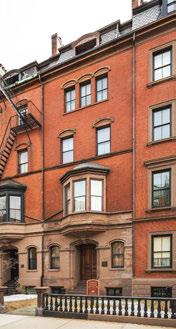



N.C. —
White glove results — when all lots sell — were nearly realized by Leland Little in the firm’s June 12 fine art auction and its decorative art auction on June 14. Just three of the 102 lots offered in the fine art auction passed from the podium, while the decorative art sale saw all but one lot find new homes; more than 98 percent was the cumulative sell-through rate. The decorative art sale had the highest selling price of the two: $24,000 for a Federal carved walnut corner cupboard made in Davidson County, N.C., circa 1810-20 and attributed to either John Swisegood or Mordecai Collins. Standing 95½ feet tall and 43½ inches wide, the catalog described it as having a “desirable diminutive form” and referenced literature at the Museum of Early Southern Decorative Arts (MESDA) on the Swisegood school of cabinetmaking. Of additional interest was its fresh-to-market status, having always been in the family of Paul Bynum Kyser (1856-1937) and Emily Kyser (1864-1950) of Rocky Mount, N.C., who were the great-great grandparents of the seller, who
lives in Greensboro, N.C. A representative for the house confirmed it will be staying in North Carolina.
A few of the other top lots in both sales are also staying in North Carolina. Local artist Ivey Hayes’ (North Carolina, 1948-2012) “Gulls and Terns” made $10,200 in the fine art sale. Earning $8,400 was a Chippendale carved mahogany side chair, attributed to either Baltimore or Philadelphia that had an old and probably original surface and came to auction from the Fredericksburg, Va., estate of Dr Larry Southworth, who had acquired it from Marshall Goodman Antiques. A carved and polychromed carousel horse made by Gustav Dentzel (German/American, fl 18901906) in Pennsylvania rode out for $6,000 to round out the top lots won by in-state bidders. Leaving North Carolina but staying in the Southeast was James P. Kerr’s (American, b 1953) “Breakers,” a vibrant abstract coastal scene by the artist whose works the catalog noted “capture the best of a Carolina lifestyle.” It brought $9,600. Another Southeast buyer paid $8,400 for a circa



Earning $13,800 and the highest price in the fine art sale was Frank Dudley’s “Winter Stronghold,” oil on canvas, circa 1940, signed and labeled, 31 by 34 inches, framed. History in Chicago may have motivated its new owner, a Midwest bidder.
1875 Swiss full orchestral interchangeable music box with automata strikers attributed to B.A. Bremond of Geneva. Bidders from the Northeast were successful in winning a few of the top lots. “Gloucester” by Guy Carleton Wiggins (American, 1883-1962) was one of the lots that will be migrating north to new homes. Cataloged as being in “good estate condition,” it brought $13,200. While it was consigned to auction from a Durham, N.C., private collector, Jane Peterson’s (American, 1876-1965) “Zinnias in a Yellow Vase” had provenance to the New York City galleries of D. Wigmore Fine Art and Hirschl & Adler Galleries; a Northeast buyer had the prevailing bid of $8,400. In the decorative arts sale, a brass surveyor’s compass made in
1786 by instrument- and clockmaker Benjamin Rittenhouse (circa 1740-1825) spun to $12,000. According to the catalog, the compass was the subject of 1960s correspondence between the Smithsonian Institution and the North Carolina Department of Archives and History; that correspondence survived and will accompany the compass to a new home in the Northeast. Typically, Leland Little’s sales reach well beyond the East Coast and these two were no exception. A buyer in the Midwest won for $13,800 “Winter Stronghold,” a wintry landscape by American artist Frank Dudley (1868-1957). The circa 1940 piece retained both the artist’s label and a label for the Chicago Galleries Association; it had descended in the family

to auction from
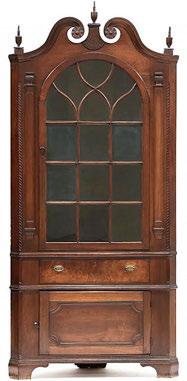
Achieving $24,000 and the highest price of either day was this Federal carved walnut corner cupboard made in Davidson, N.C., by either John Swisebood or Mordecai Collins. It was purchased by a buyer in North Carolina.
of William and Agnes Nelson of Chicago.
A handful of lots appealed to a buyer in the Southwest. A family collection of five high-relief proof strike gold medals issued by the Italian State Mint in honor of Pope John XXIII (in office from 1959 to 1963), were housed in a lined and fitted presentation case and realized $21,600 from a Southwest bidder.
Cody, Wyo., born artist Dave McGary (1958-2013) is well known for his painted limited edition bronze figures of Native Americans and four were included in the decorative arts sale. Two achieved high enough prices to earn placement in the top tiers of the day and both sold to different Southwest buyers. “The Gatekeeper,” a maquette of Teton Sioux warrior Iron Thunder from the artist’s Strongheart Society trilogy, 2006, rode to $15,600. McGary’s 1992 “American


Dating to circa 1910 and leading a selection of nearly 20 pieces of Mission oak furniture was this bookcase by Charles P. Limbert. The 47¾-inch-tall piece retained the original label on its back and sold for $9,000 to a Western buyer.
Horses” maquette of Nineteenth Century Oglala Sioux chief American Horses earned $12,600. Both were from the artist’s “Warrior” series, had been purchased directly from McGary Studios in Ruidoso, N.M., and came to auction from a Wilmington, N.C., private collection.
From the same collection were two bronzes from McGary’s “Native American Women’s Series.” “Grandmother’s Heir-

“Zinnias in a Yellow Vase” by Jane Peterson, oil on canvas, 32 by 26¼ inches framed, had been handled by two New York City fine art galleries. It realized $8,400 and will be returning to the Northeast.
loom,” 19¾ inches tall, earned $10,200; “The Honor Dress” rounded out the group at $8,400.
The decorative arts sale had a good selection of Mission oak furniture, by makers Charles P. Limbert, L&JG Stickley and Gustav Stickley. Chairs, tables and case pieces were all offered but claiming the best price of the category at $9,000 was a bookcase by Charles P. Limbert; it will be traveling to the

Dating to circa 1890, this carved and polychromed outside or second row stander carousel horse was made by Gustav Dentzel and retained traces of original paint under an early but later surface. It found a new home with a North Carolina buyer who won it for $6,000.
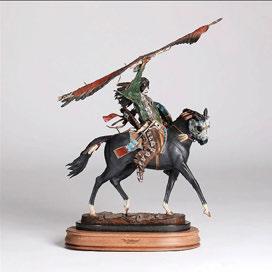
West Coast. Headed West as well was “Raphael” by California artist Richard Bunkall (1953-1999), which realized $10,800.
Prices quoted include the buyer’s premium as reported by the auction house.
The firm’s next fine art auction will take place September 11, followed by the decorative art auction on September 13. For information, 919-644-1243 or www.lelandlittle.com.

“Breakers” by James P. Kerr, oil on linen canvas, signed, 43 by 43
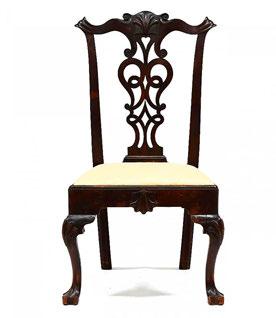
This circa 1760-80 Chippendale carved mahogany side chair may have been made in either Baltimore or Philadelphia, but it had at recent history of ownership in Virginia. A North Carolina buyer won it for $8,400.
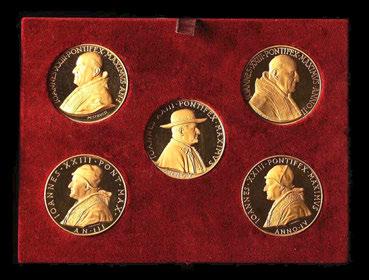
Each of these five gold medals measured 44mm in diameter and contained 67 grams of .917 gold; they were made by the Italian State Mint to commemorate the five years Pope John XXII was in office. A Southwest buyer bid the medals to $21,600.
According to the catalog, Benjamin Rittenhouse’s surveying compasses “set the standard for excellence.” Inscribed “Benjamin, Rittenhouse; Fecit 1786,” this 14-inch-long brass compass came with a staff and storage box and sold to a Northeast buyer for $12,000.
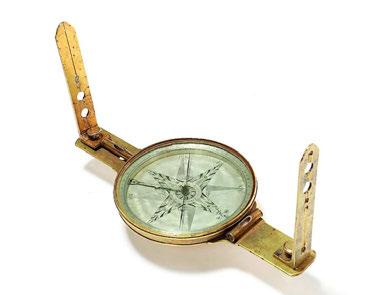

A buyer in the Northeast paid $13,200 for Guy Carleton Wiggins’ “Gloucester,” oil on board mounted to panel, signed, 19 by 23 inches framed.


he Isamu Noguchi Foundation and Garden Museum announced the appointment of Jessica Lysons to serve as the museum’s new director of finance. She oversees the financial operations of the museum and is responsible for balancing its mission and fiscal sustainability. She started at the museum on May 6. Lysons studied art and architecture, and has worked in and around finance and nonprofit property development since the 1990s. Immediately before joining the museum, she served as director of finance and administration at the nonprofit New York City news site The City. She also directed finance at Powerhouse Arts in Gowanus, Brooklyn, where she was a founding member of the leadership team responsible for growing the organization from a single-funder idea with a dilapidated site into a public charity with a 170,000-square-foot, purpose-built factory for art fabrication.
The San Francisco Museum of Modern Art (SFMOMA) has announced two significant leadership changes: Dee Minnite (right), the current interim chief collections, exhibitions and design officer will now permanently take

up the role. Meanwhile, Sheila Shin has been promoted from chief experience officer to chief operating officer. The changes aim to promote its mission of “radical hospitality” through more inclusive exhibitions and public programs as the institution continues evolving following top-level restructuring during the Covid-19 pandemic. Minnite, who has served as interim chief collections, exhibitions and design officer since last August, was officially appointed the role on June 12. Shin, who joined SFMOMA in April, has been promoted to chief operating officer. Shin starts her new position on August 1.
HNEW YORK CITY — The Morgan Library & Museum announced three new appointments to its curatorial departments. (From left) Sheelagh Bevan is promoted to Andrew W. Mellon curator of printed books and bindings, Dr Pınar Durgun joins the Morgan as Jeannette and Jonathan Rosen associate curator of ancient Western Asian seals and tablets and department head of ancient Western Asian seals and tablets, and Dale Stinchcomb is named Drue Heinz curator of literary and historical manuscripts.
Since joining the Morgan in 2010, Bevan has focused on expanding and interpreting the museum’s Nineteenth and Twentieth Century collections, with particular attention to the history of the illustrated book, the European avant-garde and Modernist literature. She has curated numerous exhibitions at the Morgan. Prior to her arrival at the Morgan, Bevan worked as an assistant librarian at the Museum of Modern Art Library.
She holds a BA and an MA in English literature from Columbia University and the University of Pennsylvania, respectively, and an MS from the Palmer School of Library and Information Science.

The Morgan’s ancient Western Asian seals and tablets department, which Durgun will oversee, contains one of the most distinguished collections of cylinder seals in the United States. The seals span a continuous artistic and chronological sequence of more than 3,000 years, covering all significant styles of Mesopotamian engraving; the holdings are particularly strong in seals from the second millennium BCE made outside southern Mesopotamia, as well as Middle Assyrian seals. Durgun is the third curator to hold this position, after Edith Porada and Sidney Babcock.
Stinchcomb joined the Morgan in February 2024. Prior to his Morgan appointment, he worked at Houghton Library beginning in 2011 as
assistant and then associate curator of the Harvard Theatre collection, where he curated exhibitions on Shakespeare, dance notations, Black theater, Chicano protest posters and the artwork of actor John Lithgow. He is the author of the photographic history Boston’s Theater District (Arcadia, 2021) and has given talks on Tennessee Williams and George Bernard Shaw. His curatorial interests extend beyond plays and performance to include the role of women in the history and development of typewriting, collections as data and Latin American history. Stinchcomb holds an MS in library and information science from Simmons University, as well as an MTS in religion and literature from Harvard University.
DAVENPORT, IOWA — The Figge Art Museum announced the establishment of the Linda and J. Randolph Lewis Wing, made possible by the extraordinary generosity of Dr Randy and Linda Lewis of Davenport. The Lewises’ remarkable gift of 44 works of Modern and contemporary American art valued at $14 million by Christie’s, New York, marks a momentous addition to the Figge’s collection.

ighly respected curator, educator and scholar Sarah Ganz Blythe, with more than 25 years of museum experience, will be the new Elizabeth and John Moors Cabot director of the Harvard Art Museums, Ganz Blythe is joining Harvard from the Rhode Island School of Design (RISD Museum), where she is currently deputy director, exhibitions, education and programs. She will take her post as director on August 12.
The Academy Museum of Motion Pictures announced on June 12 the election of (from left) Olivier de Givenchy as chair, Dr Eric Esrailian as vice chair, and Patricia Bellinger Balzer as secretary of its board of trustees. The board has also reelected Jim Gianopulos as treasurer. As the governing

body of the Academy Museum, the board leads the museum toward a sustainable future by adopting sound, ethical and legal governance and financial management policies in addition to securing adequate resources to advance the museum’s mission.
For 50 years, the Lewises have passionately collected works by influential artists such as Romare Bearden, Milton Avery, Marsden Hartley, Helen Frankenthaler and Alice Neel. These artworks embody the innovative spirit and diverse perspectives of American art over the last century. This gift will significantly enhance the Figge’s collection and fill crucial gaps in the museum’s galleries.
“We are deeply grateful to Dr Randy and Linda Lewis for their visionary contribution,” said Melissa Mohr, interim executive director at the Figge Art Museum. “The impact of this gift on our museum and community cannot be overstated. The Linda and J. Randolph Lewis Wing will stand as a cornerstone of the Figge’s mission to bring art and people together, fostering creativity and cultural understanding, and inspiring dialogue. This is indeed a transformative moment for the Figge Art Museum and for the broader cultural landscape of the Quad Cities.”
The Lewises’ journey from their upbringing in northern Ontario, Canada, and immigrating to the United States to becoming prominent art collectors and supporters in Davenport underscores the profound impact of philanthropy. Their dedication to art and community is evident in their more than three decades of involvement with the Figge, serving in volunteer, staff and leadership roles.
“We’ve lived in Davenport for 36 years, and this community has been

very good to us. It just seems easy to do this, and to know that people will enjoy it, and that it will be here for a long time. When you are nearing the end of your life — and we are — you start to think about what you’re leaving behind, what of value you have to leave future generations. It makes us feel good to give back to the community,” shared Dr Randy and Linda Lewis.
Their gift of 44 artworks will help the museum attract more visitors locally, nationally and internationally, contributing to the museum’s ongoing success and vitality.
“The Lewis Collection features exemplary works by influential American artists. While the Figge’s collection is strong in areas like Regionalism, Spanish Colonial art and Haitian art, we have relatively few examples of artworks from the Twentieth and Twenty-First Centuries by artists that feature prominently in the art historical canon. Linda and Randy’s gift transforms
the Figge’s collection in a way that would have otherwise been unimaginable. Due to their generosity, the museum will be able to share the more complete story of art,” said Joshua Johnson and Vanessa Sage, co-senior curators at the Figge Art Museum.
Inspired by the philanthropic legacies of Dr Walter Neiswanger and Charles A. Ficke, the Lewises hope to encourage other collectors to consider how their collections might benefit their communities and future generations.
Beginning this summer, visitors will have the opportunity to view pieces from the Lewis collection in the newly dedicated Linda and J. Randolph Lewis Wing on the second floor of the Figge Art Museum (formerly the permanent collection galleries).
The Figge Art Museum is at 225 West 2nd Street. For information, www.figgeartmuseum.org or 563326-7804.
Aug16July25Aug1Aug2Aug5Aug6
Aug23Aug1Aug8Aug9Aug12Aug13
Aug30Aug8Aug15Aug16Aug19Aug20
MOUNT CRAWFORD, VA. —
An important Shenandoah Valley of Virginia cobalt-decorated covered stoneware sugar bowl, made by Andrew Coffman (17951853) in Rockingham County,

circa 1840-53, was the top seller in a four-day sale conducted by Jeffrey S. Evans & Associates, June 19-22. One of just three signed examples by Coffman known but of unusual form and decoration, the bowl had been recently discovered in a box lot in an estate auction. Estimated at $10/20,000, the 3¾-inch-tall bowl sold to a private Virginia collector, bidding in the room, for $34,800, including buyer’s premium. Other highlights of the additional 2,200 lots offered, including glass, lighting, silver, textiles, ceramics, Americana and the collection of Katherine “Kitty Sue” Pease, will be featured in an upcoming issue.

29, June..............rolandauctions.com Roland Auctions 52 30, June................auctionninja.com Stephen Cyr 54 30, June...................clarkeny.com
Clarke Auction 6C 30, June............tremontauctions.com Tremont Auctions 55 1, July kodner.com Kodner 51 2, July auctionninja.com SJD Auction 52 2-3, July........oldkinderhookauction.com Old Kinderhook Auction 4C 6-7, July...................brzostek.com Brzostek 5C 10, July bodnarsauction.com Bodnar’s Auction 52 10, July Mount Kisco, NY Benefit Shop 5C 10-11, July..concordauctioncenter.hibid.com Auction Boss/Concord Auct 52 11, July posterauctions.com
SANTA FE, N.M. — Morphy Auctions’ 34th Annual Brian Lebel's Old West Auction was conducted on Saturday, June 22, in conjunction with the Old West Show, which welcomed more than 100 dealers from across the country. Some of the major categories in the 439-lot auction included Western fine art, cowboy antiques, firearms, jewelry, advertising, photography and Native American objects. A special-order Ed Bohlin parade saddle set, made for Justin W. Dart Sr (1907-1984), political kingmaker and honoree of the Presidential Medal of Freedom, led the sale with a realized price of $307,500 with buyer’s premium, soaring past its high estimate of $175,000. The saddle was adorned with various Western icons and, on the swell caps, gold images of “Cowboy” Mickey Mouse twirling a lasso above an engraved replication of Walt Disney’s signature. Further results will be detailed in an upcoming issue.
Every Thurs goldengavel.com Golden Gavel 55 30,Jun-10,Jul auctionninja.com Gerald W. Bell 53
Thru 2, July thepopularpioneer.com The Popular Pioneer 55 Thru 11, July thcauction.com Thomas Hirchak 52
Thru 30, June lotusauctions.com Lotus Auctions 54
Thru 31, July antiqueamericanclocks.com Antiques American Clocks 7 26, June............capsuleauctions.com Capsule Auctions 2 28, June..................Jewett City, CT Leone’s Auction 2 29, June..............rolandauctions.com Roland Auctions 2 29, June..............rolandauctions.com Roland Auctions 12
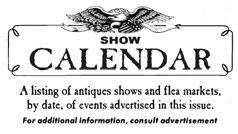
3-9, July....................Monson, MA 23
4, July Tiverton, RI 13
6, July Stormville, NY 2
9, July Brimfield, MA 2
Poster Auctions Int’l 3C 12, July Jewett City, CT Leone’s Auction 2 13, July soulisauctions.com Soulis Auctions 55 13, July thoscornellauctions.com Thos Cornell Galleries 2 14, July moisanauctions.com Devin Moisan 53 16, July daviesauctions.net
Davies Auctions 54 17-26, July............crockerfarm.com Crocker Farm 2C 18, July capsuleauctions.com
Capsule Auctions 2 21, July butterscotchauction.com Butterscotch Auctioneers 2 21, July butterscotchauction.com
Butterscotch Auction 51 24, July litchfieldcountyauctions.com Litchfield County Auctions 2 28, July tremontauctions.com
Tremont Auctions 52 23-24, Aug....litchfieldcountyauctions.com Litchfield County Auctions 2 8, Sept tremontauctions.com Tremont Auctions 52
9-14, July..................Monson, MA 23
11-14, July.................Atlanta, GA 5 11-27, July..............Providence, RI 23
12-14, July...........East Hampton, NY 39 14, July Milford, NH 15 28, July Milford, NH 15 4, Aug Milford, NH 15
8-10, Aug Manchester, NH 13 28, Aug-2,Sept ........Monson, MA 23 31, Aug-1, Sept.......Stormville, NY 2 3, Sept Brimfield, MA 2 12-13, Oct Stormville, NY 2 2, Nov Stormville, NY 2
30, Nov-1, Dec........Columbus, OH 5
Weekly Events Thurs-Sun West Hartford, CT.................41 1st Sun/Month Alameda, CA 41 Sun..........................Jewett City, CT 2 Sun ........................New Milford, CT 2
Obituary cOurtesy
DignityMeMOrial cOM ARNOLD, MD. — Claudia Robbins Haneberg, age 76, of East Lyme, Conn., and Arnold passed away peacefully on February 4, 2024, at home in Arnold surrounded by her family. Claudia was born on April 7, 1947, to Arthur and Mary Robbins and grew up in Niantic, Conn.
She attended New London High School and then went on to graduate from Syracuse University in 1969. She later attended NYU for graduate school.
Claudia met her future husband Olav (Bob) Haneberg through mutual friends in high school. They started dating when Bob went to the US Coast Guard Academy, and they fell in love. Claudia and Bob were married at the Coast Guard Academy Chapel on August 9, 1969,
after she graduated from college.
Claudia and Bob lived in several places as Bob pursued his Coast Guard career including New York, Massachusetts, New Jersey, Maine, Michigan and Maryland. After Bob’s retirement from the Coast Guard, they settled in East Lyme. At the beginning of her career, Claudia worked as a Home Economics teacher in Freeport, N.Y. One of her greatest joys was staying home for a number of years to raise her two children, Eric and Kristin. When she returned to the workforce, she worked her way up to become the Vice President of Administration at R.J. Moore & Associates in Annapolis, Md. Claudia and Bob also worked as antique dealers for 53 years, making it their full-time business in 2002.
Claudia led a busy and active
Obituary cOurtesy legacy

PROVIDENCE, R.I. — Hope Alswang died in Providence on June 11, 2024, after a brief illness. Alswang was smart, irreverent, determined and creative. The world is a quieter place without her. Over her 50-year career, she was the director of the Museum Program of the New York State Council on the Arts as well as the director of four museums. These included the New Jersey Historical Society in Newark, N.J., Shelburne Museum in Shelburne, Vt., the Art Museum, Rhode Island School of Design in Providence and the Norton Museum of Art in West Palm Beach, Fla. She is mourned by her family and many friends as a clear-headed thinker with iron convictions and ambitious goals, which she met for her museums and herself.
She raised a wonderful family and inspired her children to work in the worlds of art and culture. She loved her many cats and dogs, and her homes never had fewer than four animals (and sometimes as many as eight) underfoot, with one often nestled on her lap. Beloved for her wicked sense of humor, Alswang was a true original. She thrived in the spotlight and loved to entertain, especially at her memorable birthday parties.
She is survived by her husband, Henry Joyce; her daughter, Augusta Joyce, and two grandsons, Otto and Caspar Haslberger, of Munich, Germany; her son, Horatio Joyce, of Manhattan; and her siblings, Frances Alswang of Manhattan and Ralph Alswang of Washington DC. The interment of her ashes will take place privately, for immediate family.
Earns $42,500,
Willis Henry’s
DUXBURY, MASS.
— A leather-bound

life enjoying travel, friends, her children and grandchildren. She enjoyed the fiber arts, including knitting, spinning and weaving, as the wardrobes of her family and friends can attest. She loved the water and was never far away from the beach, boats and her children and grandchildren. She loved the beaches and boardwalk of Niantic, fishing and boating on Long Island Sound, eating lobster at Abbotts and cruising on the Chesapeake. Claudia is survived by her husband of 54 years Bob, her son Eric Haneberg, her daughter-in-
law Maren Haneberg and her daughter Kristin Haneberg Goldstein, her husband Daniel Goldstein and her four grandsons Aidan Goldstein, Hunter Goldstein, Robert Haneberg and Arthur Haneberg. She is also survived by her sister Patricia Robbins and brother Arthur Robbins, plus numerous nieces and nephews and extended family. Interment will be at a later date at Arlington National Cemetery.
In lieu of flowers donations may be made to the Hospice of the Chesapeake.

(Boxborough, Mass.) Paper Town Show Offers Over 200 Years Of History
(Brookfield, Mass.) Walker Homestead Show: Primitives
(Boston) Rugs Are All The Rage At Grogan
(Atlanta, Ga.) Over 500 Items Crossed The Block At Ahlers & Ogletree Two-Day Sale......................................14 (Clarence, N.Y.) Vintage Car, Baseball Cards, Northwest Totem Lead
(Bloomfield, N.J.) Nye Kicks Off Father’s Day Weekend With Gentleman Collector
(Branford, Conn.) Gaglio Collection Is Gangbusters For Giampietro
(Detroit,
(Willoughby,
130-page hymnal, dating to the early 1840s, was the top-selling lot in Willis Henry’s June 22 sale. It was written in one hand and included hymns, songs and verses gathered from several Shaker communities, including New Lebanon, N.Y., among others. It once belonged to D.C. Brainard, a trustee and elder of the New Lebanon community, who had entered the church at the age of 2. The sale included several items in original paint, with a mustardyellow-painted Shaker bucket earning $16,250 and a chrome-yellow four-fingered oval box, slightly longer than 8½ inches, earning $15,000. There were chairs, tables, cased pieces, books and several of the implements that Shakers designed for their own use, whether in their homes or for use in commercial enterprises. Prices quoted include the buyer’s premium; a full report will follow.

White’s Auction has been making a market in early telephones and communications items and that was again the case on June 23, when what is known as a long distance wall set transmitter went to the top of the sale, finishing at $11,430, including buyer’s premium. Consisting of a japanned metal case with nickelplated cap and arm, this American Bell telephone with patent dates of 1878-1886, truly was your grandfather’s telephone. It also featured a hard rubber mouthpiece, measured 11½ inches long by 6½ inches wide and weighed 6 pounds. It sold to an online bidder, according to Katherine Black, the firm’s co-owner. There were many other early telephones and related parts, as well as general antiques in this auction. Watch for more highlights coming in a later review.
WILLIAMSBURG, VA. —The Colonial Williamsburg Foundation mourns the passing of Colin G. Campbell, president and chief executive officer (CEO) of the foundation from 2000 to 2014. Campbell was a dauntless advocate for the rights and responsibilities of citizenship. His tenure at the foundation was marked by strong leadership amid economic instability, new construction projects in the Historic Area, expanded educational programming and new institutional relationships.
“Colin’s steady hand made an indelible imprint on Colonial Williamsburg, ensuring its survival as a national treasure and charting a course focused on preservation, education and civic engagement that the institution is following today,” said Cliff Fleet, president and CEO of The Colonial Williamsburg Foundation. “He will be remembered by all who had the pleasure of knowing him as a wise and compassionate leader and a dear, dear friend.”
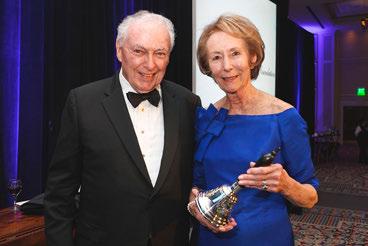
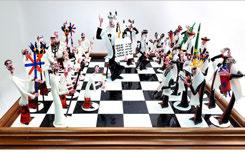
EAST MEADOW, N.Y. — On June 23, World Auction Gallery conducted its Exceptional Premier Auction with 432 lots of fine and decorative art, furniture, Asian antiques, jewelry and collectibles. Coming out on top with great pre-auction interest was a rare Murano glass chess set by Gianni Toso (Italian, b circa 1943). The circa 1969 set was titled Jews vs. Catholics and depicted a battle between leaders of the two religions, armed with various ritualistic items. The 42 Venetian blown glass figures were paired with the original chessboard and were in very good condition. Coming from a Long Island, N.Y., home, the set was bid well past its $1,500 high estimate to achieve $13,000 with buyer’s premium. Further discussion of the sale will be in a future issue.
Campbell joined the foundation’s Board of Trustees in 1989 and for a period, served simultaneously as the organization’s leader as well as its board chairman. It was not long after he took over the helm as president in 2000 that the nation was rocked by the September 11, 2001, terrorist attacks that ushered in a period of prolonged economic instability, worsened by the recession of 2008. Despite the challenging economic landscape, Campbell worked to strengthen relationships with donors and partners alike. From 2000 through the end of 2013, the foundation raised a total of $687 million from 1.7 million individual donors. Total planned gift expectations tripled from $93 million to $298 million. The first Campaign for Colonial Williamsburg, begun in 1995 and launched in its public phase in 2001, surpassed its goal of $500 million at its completion four months ahead of schedule in August of 2006.
65,000-square-foot expansion of the Art Museums of Colonial Williamsburg, which broke ground in 2017 and was unveiled in 2020. The Colin G. and Nancy N. Campbell Archaeology Center, currently under construction and slated to open in 2026, was named by lead funder Forrest E. Mars Jr in honor of Campbell and his wife, Nancy, who was widely credited as an active partner in leading the institution.
“Colin’s legacy endures not only in the spirit of the foundation, but in its physical landscape as well,” said Carly Fiorina, chair of Colonial Williamsburg’s Board of Trustees. “From the coffeehouse to the art museums, the Armoury to the new archaeology center — all of these buildings are testament to Colin’s commitment to this institution, and generations upon generations of visitors will reap the benefits of projects that owe their origin stories to him.”
for International Studies, Jamestown Rediscovery Foundation and the Chautauqua Institution. Campbell served on William & Mary’s Board of Visitors and on the boards of Hampton Roads PBS affiliate WHRO and the Fort Monroe Authority.
Before coming to Williamsburg, Campbell was president of the Rockefeller Brothers Fund from 1988 to 2000 and president of Wesleyan University from 1970 to 1988. He went to Wesleyan in 1967 after having been vice president of the American Stock Exchange.
Campbell was a graduate of Cornell University and of the Columbia University School of Law, class of 1960. He received awards from the New-York Historical Society, WHRO (Public Broadcasting), the Chautauqua Institution, Preservation Virginia, William & Mary and was the 12th recipient of Colonial Williamsburg’s Churchill Bell, given to both Campbells in 2014.
“Colin was a man who valued individuals for who they were, not for what they could do for him,” said Ronald L. Hurst, the foundation’s chief mission officer and senior vice president of education and historic resources.

PHILADELPHIA — Material Culture hosted two days of auctions devoted to fine textile arts and fine rugs, kilims and trappings on June 17-18. Day two saw the highest price item in the sale by way of a fine South Coast tunic from the imperial Wari culture, 700-900 CE, which sold to the phone for $15,000, including buyer’s premium. It is not known who wore the 3-foot-4-inch-by-6-foot-2inch garment, but these rare codified tunics were only worn by the elite members of society. The catalog description is of a textile featuring a wine-colored ground split by two prominent design stripes, each showing repeated serial images of twin interlocking stepped latch hooks — possibly a version of yin and yang — separated by a black line on the diagonal. Warrior head profiles wearing simple caps show the essential Wari split eye, square nose and deep prominent mouth. These two motifs are shown in the same form in 80 boxes, while each side selvage features the same ideas in the unique compressed Wari style. Catalog notes further describe it as “a tour de force of textile fabrication...[that] displays the wearer’s exceptional nature to all who see it.” More notable textiles, rugs and carpet highlights from this sale will be featured in a later review.
Under Campbell’s leadership, the Historic Area benefited from a spate of construction projects, including the reconstruction of Charlton’s Coffeehouse, the construction of Anderson’s Blacksmith Shop and Public Armoury, and the construction of the Market House. In his retirement, Campbell worked to fund the
Campbell’s tenure also saw the expansion of programming focused on the period leading up to and during the American Revolution. The programs highlighted the diverse population and perspectives of Williamsburg residents, including enslaved and free Black people, women, and people of different classes.
Key to Campbell’s leadership success were the partnerships he developed with organizations throughout the region and nation to advance shared goals. Partner organizations included Washington DC–based Center for Strategic and International Studies, William & Mary’s Reves Center
“As a result, he encouraged everyone who worked alongside him to be the very best versions of themselves which, more often than not, provided the greatest benefit to everyone involved. He will be greatly missed by this institution and by all who were privileged enough to work alongside him.”
NEW YORK CITY — On June 18, Doyle Auction House conducted its sale of the collection of Stephen Sondheim, which totaled more than $1.5 million. What the auction house called a “landmark sale” also sold all 454 lots offered. Leading the day was a Fabergé enameled silvergilt and wood covered box in the form of a billiards table, which soared past its estimate of $12/18,000 to achieve an impressive $70,350. The Fabergé box was designed by workmaster Karl Armfelt in St Petersburg, Russia, between 1908 and 1917. The hinged top of the box was enameled to simulate green baize and contained three enameled balls and opened to reveal a silver-lined compartment. The 2-inch-high, 4¾-inch-wide box rested on six turned legs. It was previously exhibited at the Cooper-Hewitt Museum in New York City from April 22 to May
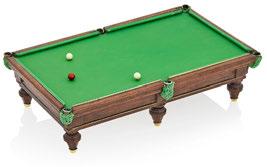
SARASOTA, FLA. — Molly Hatch’s “Amalgam,” Sarasota Art Museum’s latest installation of its “Inside Out” series, brings more than 480 hand-painted plates together that visually span two floors and form one ensemble framed by the four arched windows of the Museum. The “plate paintings,” on view through April 2026, feature white, blue and gold luster with motifs from multiple cultures.
Hatch, a ceramic artist known for large-scale wall installations of her hand-painted ceramic plates, created “Amalgam” specifically for the Museum’s Jan Schmidt Loggia and Mark & Irene Kauffman Arcade. Her research-based, critical artistic practice, spanning nearly two decades, has contributed to elevating the genre of fine art ceramics and highlighting the meaning of inherited objects.
“The patterns and color schemes in Molly Hatch’s plates in ‘Amalgam’ are drawn from various historical sources, revealing the surprising connections among global ceramic traditions, particularly the blue and white patterns,” explained Rangsook Yoon, PhD, Sarasota Art Museum’s senior curator. “Hatch approaches these historical decorative objects from fresh perspectives. She studies their histories through the lens of shared motifs, mixes and matches them and zooms in and out. This pastiche of motifs results in an entirely novel abstract language of her own. Hatch’s inquisitive and critical approach allows us to see cultural specificities partly as illusions, complicating the historical narrative and illuminating how we have always been connected through material exchanges. It’s not merely an
appropriation of historical sources; it’s a way of rethinking history.”
Hatch describes “Amalgam” as “a telephone game of blue and white that acts as a conversation about cultural trade and appropriation.” In her work, Hatch often draws parallels between multiple cultures and times to show commonality and connection. In doing so, she takes the works to a new level of abstraction and draws attention to unexpected connections across cultures and eras.
“I reference ceramic history with an eye to interrupt it and change our perception of the objects we live with daily,” said Hatch. “As a contemporary female artist working within the long history of ceramics, I am making work that asserts that women’s perspectives belong in every stage of the history of art. I’m interrupting art history that is primarily male-focused by inserting a new perspective into a conversation that is centuries old. I am appropriating, reinterpreting, deconstructing and abstracting familiar blue and white patterns from a contemporary feminist perspective.”
Varied sources inspired the works in “Amalgam,” including Fifteenth Century Chinese Ming dynasty Hanap drinking vessels, Nineteenth Century Moroccan Fassi (from Fez) ware, Seventeenth and Eighteenth Century Dutch Delft vases, Eighteenth Century Mexican Talavera tile panels and Nineteenth and Twentieth Century Japaneseinspired English ceramics designed by Christopher Dresser. Through her cultural merging, Hatch shows visitors evidence of centuries-old global trade networks that connected people
through goods and shared aesthetics.
“Some hard conversations can come up with this exploration of historic patterns from global sources,” explained Hatch. “Who does the pattern really belong to? What is its heritage? How do I honor where it came from? How did the pattern come to belong to different cultures and what does that pattern mean to each of us viewing the work?”
Sarasota Art Museum commissioned “Amalgam” as part of its “Inside Out” exhibition program that gives contemporary artists from around the world the opportunity to share thought-provoking work outside of the gallery setting to spark new conversations about art and ideas among museumgoers of all ages and backgrounds.
“Amalgam builds on our tradition of inviting contemporary artists to make new work in dialogue with Sarasota Art Museum’s iconic architecture,” said Virginia Shearer, director of Sarasota Art Museum. “We look forward to welcoming visitors of all ages to marvel at this unique outdoor installation.”
“Amalgam” may be experienced from multiple points of view, from near and far, as well as inside and outside of the muse um. The plates, installed using a nylon-coated filament strung through the foot ring of each plate, appear to float on the walls and in front of the windows, to be viewed from the outside. Unlike much art, the plates can with stand intense direct sunlight and wide temperature shifts. The work can even be exposed to rain.

High Museum of Art in Atlanta and “Repertoire” (2017) at the Newark Museum of Art in Newark, N.J. In 2023, the Montreal Museum of Fine Arts in Canada commissioned and acquired her work, “Ducere,” and she received commissions for new installations for the Tiffany & Co. Land-
mark store in Manhattan and Tiffany stores in Dubai and Taipei. Hatch lives and works in Florence, Mass. The Sarasota Art Museum is at 1001 South Tamiami Trail. For additional information, www.sarasotaartmuseum.org or 941-309-4300.

Hatch’s work has been exhibited internationally with several permanent installations includ ing “Physic Garden” (2014) at the
Submitted by Shannon’S Fine art auctioneerS
Mary Anne Shannon, 80, of Woodbridge, beloved wife of Eugene Shannon, passed away comfortably on June 12, after a courageous battle with dementia.
Born on November 13, 1943, in Stamford, Conn., she was the daughter of the late Robert and Anna (Brown) Daly and stepdaughter of the late John Borsey. Shannon grew up in Stamford with her seven brothers and was proud to be the first in her family to attend college. She graduated as a Registered Nurse from Saint Raphael’s School of Nursing in 1965. Shannon served her community as a nurse with Yale Psychiatric Institute for more than 20 years. In 1997, she co-founded with her husband Gene, Shannon’s Fine Art Auctioneers, where she worked until her retirement in 2004. She spent many years volunteering for the American Red Cross as a disaster relief nurse where she selflessly cared for others, while simultaneously making sure her family always came first.
Shannon enjoyed playing Scrabble, traveling, reading, skiing and playing golf. She was

known for her gourmet meals and loved having dinner parties. Her greatest joy was spending time with her family at their home in Vermont, particularly her special time with granddaughters Mackenzie and Madison. She will always be remembered by her spontaneity, honesty and her spunky attitude.
In addition to her loving and dedicated husband, Gene, Shannon is survived by her devoted daughter, Sandra Germain; sonin law Eric Germain; grand-
daughters Mackenzie and Madison Germain; siblings Albert Daly, John Borsey, Bill Borsey and Mark Borsey; several nieces, nephews and many loyal friends. Mary Anne was predeceased by her parents and her brothers, Robert Daly, Fred Daly and Ronnie Borsey. She was heartbreakingly predeceased by her beloved daughter, Susan Weldon. She was proud to be a “second mom” to Kristen Malone and Suzanne Werth.
Shannon’s final gift was her donation to Yale Pathology’s Legacy Tissue Donation Program, where researchers and students will be able to gain scientific information that can help people for many years to come.

The premier show of its kind on the East End featuring over 45 of the finest dealers with antiques and design accessories.
Her family would like to thank the staff at Masonicare in Wallingford, Conn., for their extraordinary care and guidance over the past two months.
A celebration of Shannon’s life will be held in the near future.
In lieu of flowers, please consider a donation to Yale Pathology’s Legacy Tissue Donation Program (m.yale.edu/yltdp) or a charity of choice. To leave online condolences, visit www.codywhitefuneralservice.com.

for more info and to purchaseyourtickets,visit:
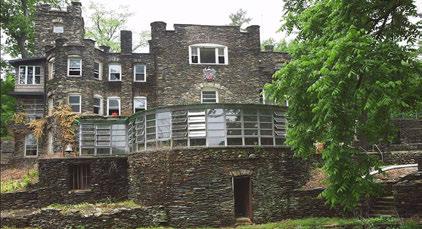
This May 5, 2004, photo shows the Tiedemann Castle in Greenwood Lake, N.Y., owned by former New York Yankees star Derek Jeter. Jeter has found a potential buyer for his New York castle after the sprawling lakefront property had its price tag slashed by more than half. The property, known as Tiedemann Castle, went into contract with a buyer in late May 2024, after the asking price was lowered to $6.3 million. It was first listed about six years ago for more than $14 million and had at one point failed to sell at auction (Tony Savino/ Times Herald-Record via AP, File).
GREENWOOD LAKE, N.Y. (AP) — Former New York Yankees superstar Derek Jeter has found a potential buyer for his New York castle after the sprawling lakefront property had its price tag slashed by more than half.
The property, known as Tiedemann Castle, went into contract with a buyer in late May after the asking price was lowered to $6.3 million. It was first listed about six years ago for more than $14 million and had at
one point failed to sell at auction. The home in Greenwood Lake, a bucolic expanse in New York near the New Jersey border, is made up of three parcels with six bedrooms and 13 bathrooms, and includes extensive gardens, a lagoon and an infinity pool, according to the listing.
Diane Mitchell, the listing agent for the property, declined to comment on the pending deal. Jeter retired from the Yankees in 2014.
LA JUNTA, COLO. — From Monday, July 8, through Friday, July 12, 2024, the reconstructed fort at Bent’s Old Fort National Historic Site will be closed for an asbestos removal project. During this time, park trails and grounds will still be accessible daily from 9 am to 4 pm.
The closure will address several safety issues related to more than 45 years of wear and tear and mitigate hazardous materials used in the 1975-76 reconstruction. The reconstruction of the fort was completed in 1976 to mark both the Bicentennial of the United States and the Centennial of Colorado Statehood. The reconstruction process allowed for the use of historic methods of construction, co-mingled with the application of modern materials. The reconstruction was made possible by historical documentation, drawings and conjecture to recreate the 1833-
1849 trading post used by the Bent & St Vrain Company.
“Bent’s Old Fort is committed to providing a safe environment for visitors and employees,” said Superintendent Eric Leonard. “This closure will allow for remediation of asbestos and stabilization of the structure in preparation for additional work.”
All entrance fees will be waived while the reconstructed fort is closed. Visitors planning to explore the grounds and trails should be prepared for the often-unpredictable weather of the high plains. Bring water, dress in layers and wear comfortable walking shoes.
Bent’s Old Fort National Historic Site is located on Colorado Highway 194, eight miles east of La Junta or 15 miles west of Las Animas. For information, use the NPS App, visit the park’s website at www.nps.gov/ beol.


ATLANTA, GA. — The Georgia Department of Natural Resources (DNR) will spend $7 million to renovate a historic home on stateowned Ossabaw Island, south of Savannah.
The non-profit Ossabaw Island Foundation reported that the state funding will rehabilitate the 20,000-square-foot former home of Eleanor “Sandy” Torrey-West.
Torrey-West was the island matriarch who engineered the turnover of Georgia’s thirdlargest barrier island from private, familyowned land to public land in the 1970s.
The move saved Ossabaw Island from development.
The foundation’s Elizabeth DuBose said she’s excited about the funding since it will allow the organization to expand its programs on the island.
“Not only is the state preserving this treasure, which is 100 years old this year, in addition to that, it’s going to be able to be reused just like Mrs West used it during her time, sharing the island with the public,” DuBose said.
West died in 2021 at the age of 108.
As part of the deal that shepherded the island into state ownership in the 1970s, the iconic Spanish Revival home that her parents had built on the island in 1924 remained privately owned until her death.
Now several years since her death, the funding secures a future for the historic building,

which DNR will take lead in renovating. Work is expected to begin in late fall 2024 and take two years to complete.
The foundation’s DuBose will serve as an advisor to the project.
“This is an exciting time for Ossabaw Island and for the foundation as we launch into this important partnership,” said Leigh Goff, the foundation’s board chairman.
Ossabaw Island is a largely uninhabited state heritage preserve, reachable only by boat, either through the DNR or the Ossabaw Island Foundation.
WOODBURY, CONN. — The 1772 Foundation, in cooperation with Preservation Connecticut, has awarded the Glebe House Museum a Connecticut Historic Preservation Matching Grant in the amount of $10,000, to assist the organization with the replacement of the circa 1750 Glebe House roof. This program is a collaborative historic preservation technical assistance program of the Preservation Connecticut and the 1772 Foundation.
Visitors at the museum and garden may have noticed the tarps covering the historic Glebe House roof. These were placed on the building in late 2023 to protect the structure from water damage over the winter months. The 2024 season opened with a flurry of fundraising initiatives by the Seabury Society for the Preservation of the Glebe House, Inc; the official name of the nonprofit entity that is responsible for the care and maintenance of the historic site. Funds to match the 1772 Foundation Award and complete the project were raised through the generosity of many donors in the local community. Residents and visitors of Woodbury’s historic Hollow Road will see the project completed this summer.
“As we celebrate our 99th year, we remain
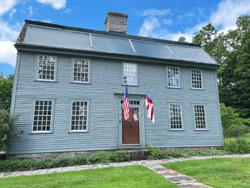
committed to preserving our beautiful historic site, finding new and exciting ways to connect with our community and provide engaging experiences for our visitors. Through this funding we will complete a project that protects the structure of the Glebe House and the unique collection contained within, ensuring its survival for future generations. This important funding has put our goal within reach and we are grateful for the support,” said Glebe House director, LoriAnn Witte.
This grant was administered by 1772 Foundation in cooperation with Preservation Connecticut.
Set in the picturesque Litchfield Hills of historic Woodbury’s village center, the Glebe House Museum offers visitors a glimpse of Revolutionary War-era Connecticut. The Eighteenth Century Georgian house is furnished as the home of the Reverend John Rutgers Marshall and his family, who lived in the “glebe” during the turmoil of the American War for Independence. It is not only the “Birthplace of the Episcopal Church in America” but also a monument to the ideal of the separation of church and state.
In 1926, Gertrude Jekyll, the renowned English horticultural designer, was commissioned to create an old-fashioned, English-style garden to enhance the newly created museum. It is her only remaining design in North America. The Glebe House Museum & Gertrude Jekyll Garden is a private, nonprofit, educational and cultural institution, dedicated to maintaining and preserving the historic house and garden.
The 1772 Foundation works to ensure the safe passage of our historic assets to future generations.
The mission of Preservation Connecticut is to preserve, protect and promote the buildings, sites and landscapes that contribute to the heritage and vitality of Connecticut communities. For additiuonal information, www.glebehousemuseum.org.
NEW HAVEN, CONN. — Connecticut’s Community Investment Fund (CIF) 2030 Board will award the New Haven Museum (NHM) a $350,000 grant to bolster community engagement, create a master plan, and design renovations for both its Whitney Avenue home and the historic Pardee-Morris House, which the museum has owned and operated seasonally since 1918. The funding was approved by the State Bond Commission at its June 9, 2024, meeting.
The funds will be used to reimagine the New Haven Museum’s 29,000-square-foot, nearly century-old building at 114 Whitney Avenue to create a Twenty-First Century museum experience. The effort will entail optimized interior spaces, accessibility enhancements, technology and structural and mechanical building upgrades. The Pardee-Morris House, at 325 Lighthouse Road, requires interior and exterior restoration work. A comprehensive master plan will be developed for both sites incorporating the further assessment of conditions.
The museum will also embark on extensive community outreach and engagement efforts to better develop educational, exhibit, collection
and programmatic needs and spaces for both sites. The museum and Pardee-Morris House draw some 10,000 visitors annually, including more than 1,700 local schoolchildren. The Museum’s Education Department provides programs and educational outreach to young people and adults in the surrounding community.
New Haven Museum board members and staff are grateful to the CIF Board, New Haven’s legislative delegation, and Governor Ned Lamont for the substantial grant and continued support of the museum and its mission. “We’re deeply grateful to Senate President Pro Tempore Martin Looney and his fellow legislators and committee members and CIF staff for recognizing the importance and necessity of such funding to the museum,” says NHM executive director Margaret Anne Tockarshewsky.
“This grant will allow us to reimagine the Pardee-Morris House interior and exterior in a historically appropriate and creative way, and the museum building to support more educational, programmatic and community usage.”
Noting the importance of CIF grants, Senator Looney says, “There is a historical significance to the Pardee-Morris
House that highlights New Haven’s history dating back to the American Revolution, and the New Haven Museum is a repository of so many items that are pivotal in understanding New Haven’s nearly 400 years of history. I was happy to recommend this project for approval by the Community Investment Fund and I’m pleased to see its passage by the State Bond Commission.”
Tockarshewsky also credits the stalwart support of State Representative Alphonse Paolillo Jr, the representative in the Morris Cove area of New Haven. “This funding of $350,000 for the New Haven Museum Master Plan is excellent news for the City of New Haven,” said Paolillo. “The positive impact is wide-ranging from the residents of New Haven and Connecticut who will benefit from outstanding displays and programming put together by the museum, but also the economic activity that it will help bring in that helps support our local economy and businesses.”
Salvatore E. DeCola, alder of Ward 18, in which Pardee-Morris House is located, points out that comprehensive master plans are essential in identifying the necessary capital improvements and embarking on an extensive community
DENVER, COLO. — Since the first textile entered the Denver Art Museum (DAM) almost 100 years ago, textile arts have played a fundamental role in the development of the museum’s collecting philosophies and exhibition programs. Featuring 60 objects from the museum’s permanent collection, two-thirds of which have never been shown, “Weaving a Foundation: Cor-
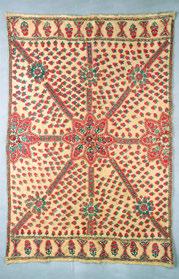
Abochhini (woman’s shawl), Thar Parkar, Indus River Delta region, Pakistan, before 1927, cotton and silk with double chain stitch embroidery and mirrorwork (shisha), 78 by 51 inches. Neusteter Textile Collection at the Denver Art Museum: gift of Charles Winfred Douglas, 1953.29.
nerstones of the Textile Arts Collection” chronicles how the Douglas family of Evergreen, Colo., emerged early in the collection as the most steadfast donors of textiles.
Frederic (Eric) H. Douglas (1897-1956), first curator of Indian Art at the DAM in 1929, was driven by a deep appreciation for the art and cultures of Indigenous peoples. This exhibition highlights a selection of the family’s donations that demonstrates their celebration of traditional and living cultures and the value of exhibiting them together.
“Weaving a Foundation” demonstrates the Douglas family’s evolution as collectors, inspired by their travels to India and Southeast Asia and Eric’s time stationed in the Pacific during World War II. These life experiences, in turn, informed the direction of the museum’s textile arts collection, which foregrounds the work of women artists and recognizes living artistic traditions.
The eclectic presentation features textiles from Indigenous traditions across the world, including regions of the American Southwest and Mexico; India and Pakistan; and the Indonesian islands of Bali, Java and Sumatra. “Weaving a Foundation” is on view through January 5, 2025.
Denver Art Museum is at 100 West 14th Avenue Parkway.
outreach and engagement effort to better develop the museum’s educational, exhibit, collection and programmatic needs and spaces. He notes that the improvements and the museum’s extended outreach to current and future community partners will help underserved and marginalized communities. “There are few social services and cultural offerings available to residents in Morris Cove,” he says. “It would be wonderful to extend the Pardee-Morris House season beyond the summer.”
Salvatore Punzo, 17th Ward alder, adds that the proposed improvements are consistent with the city’s plan of conservation and development, and says, “We especially value the Pardee-Morris House in the East Shore. It is a significant community partner with its seasonal programs, and with renovations, it can broaden its community reach with more programs, activities, exhibits and concerts.”
Thurs & Fri: 10am To 6pm
Saturday: 9am To 6pm
Sunday: 10am To 4pm Fresh & New!
CIF funding is designed to foster economic development in historically underserved communities, providing up to $875 million to municipalities, notfor-profit organizations and community development corporations.
NHM staff and board members are deeply grateful to all the other members of the New Haven delegation for supporting the award: Senator Gary Winfield; Representative Roland Lemar; Representative Toni Walker; Representative Patricia A. Dillon; Representative Juan Candelaria and Representative Robyn A. Porter. The New Haven Museum is at 114 Whitney Avenue. For more information, 203-562-4183 or www.newhavenmuseum.org.
For additiobal information, www.denverartmuseum.org or 720-865-5000.
Multi-Vendor, Indoor Space Antiques, Books, Collectibles, Vintage & More! 25 Talcott Rd., West Hartford, CT VENDORS: 860-214-9568




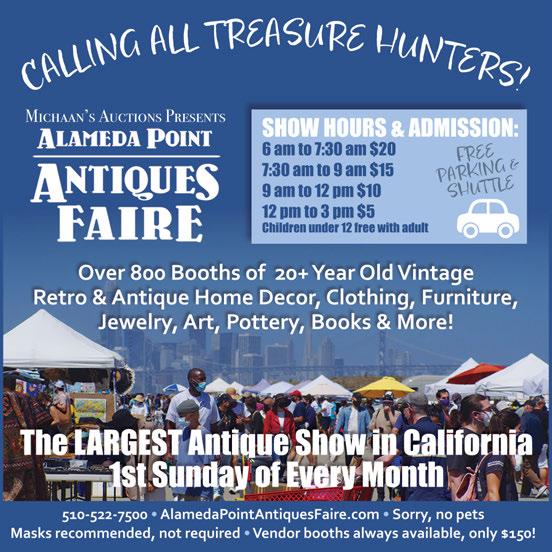

This Tiffany Studios 15-inch Spider and Web table lamp on bronze Inverted Mushroom base, 18 inches high, made $33,210 ($30/40,000).
Selling for the sale-high price of $110,700, this 1909 Wurlitzer Mandolin PianOrchestra style 33A, manufactured by J.D. Philips Co., Frankfurt, Germany, imported by The Randolph Wurlitzer Co., New York, could play 61 notes from several instrument features. It came with 56 music rolls and measured 128 inches tall by 74 inches wide and 46¼ inches deep ($75/150,000).
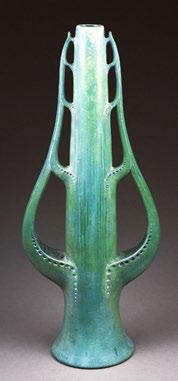


This 22-inch red and white Tiffany Studios Peony table lamp on adjustable six-socket Bamboo base, leaded glass and bronze, 27 inches high, was one of the highest-earning lots of the day. It sold for $110,700 ($100/150,000).
DENVER, PENN. — Spanning two days, June 11 and 12, Morphy Auctions presented its Fine & Decorative Arts auction. The 1,050 lots in the sale included categories such as lamps, Americana, glass, pottery, jewelry, musical instruments, statues and general antiques. Eliza Fry, sales and
This circa 1906 Cactus vase by Paul Dachsel (Czech, b circa 1880) was in mint condition and measured 22 by 9 inches; bidders took it past its estimate to $34,440 ($18/24,000).

An 18K white gold, emerald and diamond necklace by Oscar Friedman, 17½ inches long, with GGA appraisal report, was in “excellent unworn condition” and brought $22,140 ($20/40,000).
marketing lead for Morphy, shared that the auction realized $1.53 million.
The highest price of the auction was $110,700 — achieved by two lots, one on each day of the sale. On the first day, a Tiffany Studios Peony table lamp claimed the top spot and on the second day, it was a Wurlitzer PianOrchestra. The circa 1910 Tiffany Studios Peony lamp’s 22-inch shade was designed with red and white flowers against a multicolored mosaic of confetti and mottled glass in various shades of blue and
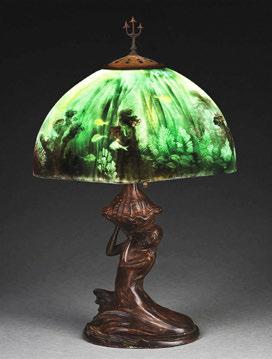
A Handel reverse painted glass Aquarium shade on a bronze three-socket Mermaid table lamp base, 23 by 15½ inches, brought $28,290 ($20/25,000).
green. The shade sat atop a rare height-adjustable sixsocket Bamboo table base with its original matching heat cap, which had provenance to Sotheby’s. The lamp shade had provenance to the notable art glass and Tiffany collection of Minna Rosenblatt, whose obituary was in an August 2008 issue of this publication. Tying for the same achievement was a circa 1909 Wurlitzer PianOrchestra style 33A, which was manufactured by the J.D. Philips Co., of Frankfurt, Germany, and imported by The Rudolph Wurlitzer Co., New York. A 20-inch-tall mechanical bird cage was displayed on a shelf at the center of the wooden case which was adorned with metal, mirror and stained glass accents. Inside, the self-playing orchestra machine contained the mechanical workings of several instruments, including a piano with mandolin attachment, 49 violin pipes, 30 violincello pipes, 30 piccolo pipes, xylophone, bass and snare drums, kettle drums and cymbals, triangle and tambourine, castanets and chimes. The model had an auto-roll changer, and it was sold with 56 Wurlitzer rolls manufactured by Play-Rite Music Rolls, Inc. Some of the included tunes were identified with their titles and original performers and helpfully labeled as a “Fox Trot,” “Waltz,” “Two-Step” or “Rag.”
Thirty-five pieces of early Amphora pottery were included in the sale, but just one crossed the block for a price
high enough to land it within the top 20 lots overall. Bidders took a circa 1960 Cactus vase by Paul Dachsel, considered one of the maker’s most innovative works, to $34,440. The iridized matte green glazed vase had two undulating handles tapering from a wide connection at the bottom of the vase to thin points that connect near the top. An example of this rare piece was illustrated in Ceramics from the House of Amphora 1890-1915 (Richard L. Scott, Sidney, Ohio, 2004) and, as Morphy’s presale press release said, its “streamlined form seems to foretell the Moderne aesthetic that would not arrive on the art scene for another quarter of a century.”
Handel reverse-painted lamps were popular, with a Riverbed lamp on a bronze Mermaid base achieving $33,825. The 18-inch-wide shade — painted with yellows, oranges, greens and browns — depicted an autumnal scene of a rocky riverbed in a wooded forest. The figural table base depicted a mermaid rising from a wave holding a scallop shell. The column, which extended from the shell, was topped with three sockets and a heat cap. A similar Mermaid base, this one with a triton finial heat cap making it a few inches taller, was paired with a sea-green Aquarium shade. The iconic Handel lamp was painted with purple coral and yellow fish and various underwater vegetation visible in the foreground. When lit, the design gives the illusion of

A Handel table lamp with an 18-inch reverse
exceeded estimates to achieve $33,825 ($20/25,000).
sunlight reflecting into the water from above. It swam above its estimates to earn $28,290.
Tiffany Studios lamps that found success, in addition to the top-earning Peony, included a Spider and Web table lamp on an Inverted Mushroom base. The mottled yellow scalloped geometric web design of this shade was accented with raised veins spreading from the top with its “legs” extending down the sides of the shade. The reddish brown patinated bronze base had three sockets and an appropriately paired heat cap. The Spider and Web shade and Inverted Mushroom base pairing are illustrated in Alastair Duncan’s 1988 Tiffany Lamps and Metalware as well as The Lamps of Tiffany by Egon Neustadt (1970). In excellent condition with no losses and only a few hairline cracks, bidders took the lamp to $32,400. Alternately identified as Geometric or Plain Squares, a 20-inch shade with amber-yellow rectangular leaded glass tiles was cataloged as “finished in gold,” though that finish had faded substantially. Completing the golden look, the shade was paired with a four-socket bronze Stick base that had been finished in acid-etched gold. Together, this Tiffany

Exceeding estimates to achieve $20,910 was this platinum, ruby and diamond necklace by Oscar Friedman and its accompanying GIA report. With more than 60 pear shape Burmese rubies and 480 round brilliant-cut diamonds, it mea sured 17½ inches ($8/16,000).
Studios table lamp was sold for $17,220.
With the iconic deep green iridescent Tiffany Studios turtleback tiles in a band around a yellowish-green geometric base, a Turtleback table lamp on a three-socket Double Scroll base was bid to $15,990 and a six-socket Junior Piano Floor Base, with no paired shade, was bid to $20,910.
Two leaded glass lamps by Duffner & Kimberly made their marks on bidders as well. With similar motifs as the top Tiffany lamp in the sale, one of these was a Peony table lamp.
Cataloged as “beautiful and incredibly rare,” bidders were taken by the Duffner & Kimberly example and brought it to finish, within estimate, for $24,600. At 24 inches wide, this lamp shade featured red peonies against green leaves and a vibrant yellow background. Notably, several of the red “petals” were made with drapery glass, adding to the richness and complexity of the shade’s artistry.
Making $14,760 was an Egyptian table lamp on matching Egyptian base. This leaded glass Egyptian shade was a very rare model for Duffner & Kimberly with very few known models. Each side of the mosaic included a face above an Egyptian winged sun motif. The

shade’s multicolored glass included complex purples and blues as well as reds, yellows, greens and oranges and was fur ther accented by intricate painted details. The square pedestal of the bronze base had repeat ing winged sun motifs and seated figures and came with a matching heat cap.
In addition to decora tive arts, the jewelry cat egory was particularly strong. Bidders took interest in an 18K yellow gold, emerald and dia mond bracelet by Oscar Friedman. Each of the bracelet’s 10 octagonal step-cut emeralds was separated by two rosettes made of round brilliantcut diamonds. In total, there were 154 diamonds and the bracelet weighed 39½ grams. Paired with an appraisal report from GAA, it was taken past its $15,000 high estimate to finish at $23,370.
A necklace by Oscar Friedman — 18K white gold with nine graduated emerald cut emer alds and 640 round brilliant cut diamonds — brought $22,140.


platinum and 14 carats of
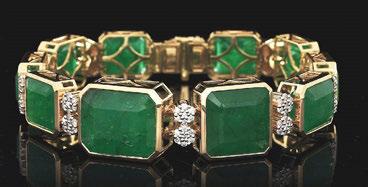

Paired with a GGA appraisal report, this 18K yellow gold bracelet marked by Oscar Friedman had 10 step-cut emeralds (55.37 carats) and more than 150 round brilliant-cut diamonds (1.46 carats); it was 7 inches long and sold for $23,370 ($10/15,000).
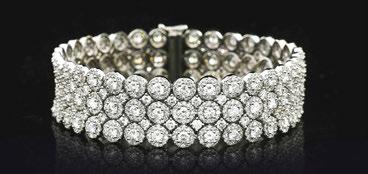
It was cataloged as being in “excellent unworn condition” and was also sold with a GAA report. Nearly 500 round brilliant cut diamonds accented the pear-shaped Burmese rubies that made up another Oscar Friedman necklace. The 62 rubies totaled more than 29½ carats and, like the other, it was in “excellent unworn condition.” It exceeded its $16,000 high estimate to earn $20,910.
A tennis or line bracelet made with 14 carats
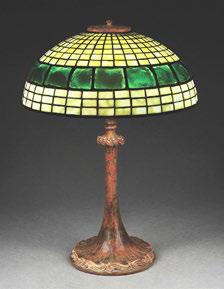
of emerald-cut diamonds set in platinum found a buyer for $17,220 and a wide 18K white gold and ornate diamond bracelet — with more than 1,350 round brilliant cut diamonds graded H/I for color and VS in clarity — brought $15,990. Prices quoted include the buyer’s premium as reported by the auction house. Morphy Auctions’ next sale will be Automobilia & Petroliana on July 11. For more information, www.morphyauctions.com or 877-968-8880.
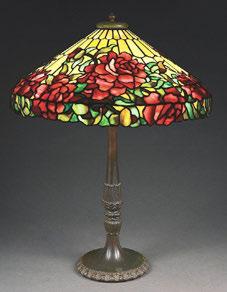

This Nazca hat and wig, from Peru circa 1-700 CE, sold for $17,500, over four times its high estimate. The loop stitch camelid wool hat had a tapestry woven band and the wig consisted of braided hair, which was wrapped at the end, creating a stepped diamond pattern made from red, blue, brown and yellow wool. The 37-inch-tall hat and wig had provenance to a private collection, and Martin and Ulman Artweave Textile Gallery, both in New York City ($3/5,000).
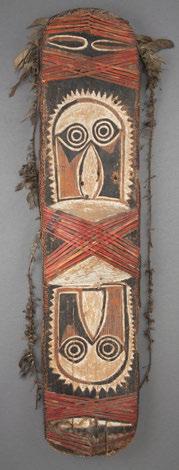
DALLAS — Heritage Auctions conducted its Ethnographic Arts: American Indian, PreColumbian and Tribal Signature Auction on June 4, offering 320 lots of artwork, sculpture, masks, clothing and other items from various cultures and tribes from around the world. The auction realized $1,156,449 in total.
A late classic Navajo man’s wearing blanket in the second phase chief’s pattern earned the top spot of the auction, selling for $87,500. It was made of native handspun wool and dyed with indigo and cochineal. A dye test, indicating that the red dye is cochineal, was included with the lot. The blanket was collected by the current owner’s great uncle, a Southwest miner named Robert Stewart Davis (1977-1923). A similar woman’s wearing blanket, from circa 1870, realized $15,625. It was made of native handspun wool and was dyed with indigo and other natural dyes.
Three masks, two from Peru and one from Mexico, were bid into the top five best-selling lots of the day. A Teotihuacan mask from Mexico, dated circa 450650 CE, crossed the block for $21,250, just over its high estimate. It was made from mottled

Leading the sale was this Navajo man’s wearing blanket, in the second phase chief’s pattern, which realized $87,500. The circa third-quarter Nineteenth Century blanket, measuring 69½ by 52 inches, was made from native handspun wool and was dyed with indigo and cochineal ($80/100,000).
and variegated stone, mostly in shades of brown, with some areas of veining blue-green throughout. The auction catalog described the face as “boldly carved” and “youthful” with “thick parted lips” and “long oval eyes.” It had provenance to a private collection in Santa Fe, N.M., which acquired the mask in 2009 from the estate of Thias

This Teotihuacan mask from Mexico, dated circa 450-650 CE, measured 10½ inches wide and was made from mottled and variegated stone in various shades of brown and bluegreen. Glued repair and some breakage did not deter bidders from pushing the mask to $21,250, just above its high estimate ($15/20,000).
Blowing past its estimate to realize $18,750 was this Mengen war shield from New Britain, dated circa the Nineteenth Century or earlier. It was carved from wood and decorated using black and white natural pigments and traces of red. There were also reddish plaited vegetal fibers strung diagonally across the center of the front and at both ends. The 52½-inch tall shield had extensive provenance and was in very good condition ($8/12,000).

Earning $32,500 was this Mezcala figure, dated circa 300-100 BCE, from Mexico. The 14¾-inch classic M-14 type figure was accompanied by its original certificate of authenticity from the Harry A. Franklin Gallery in Beverly Hills, Calif. ($20/25,000).
Freda Bullard of Austin, Texas. Bullard’s father, Dr Fred M. Bullard, was a professor of geology at the University of Texas, Austin, and acquired the mask while researching the Paicutin volcano in Mexico in the 1940s.
Dr Bullard was one of the most respected volcanologists in the world, with many publications to his name.
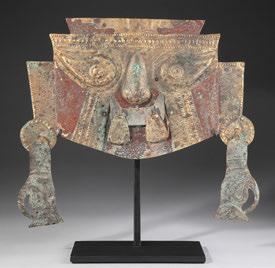
This Lambayeque Scian gold mask from Peru, dated circa 750-1375 CE, was crafted from repoussé sheet gold and still contained its original red cinnabar pigment designs. The 13¾-inch mask had extensive provenance and sold for $20,000, meeting its low estimate ($20/30,000).
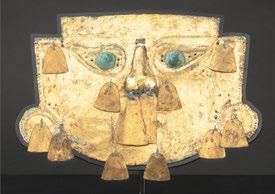
From the Lambayeque culture located on the north coast of Peru came this gold mask from circa 700-900 CE, which realized $20,000. It was made from sheet gold alloy with a high gold content and measured 12 inches wide ($15/25,000).
The other two were a gold masks from the Lambayeque culture, located on the north coast of Peru, which both sold for $20,000. The first dated to circa 700-900 CE, and was made of sheet gold alloy, with repoussé and embossing throughout. It featured spadeshaped dangles on the top of its ears, on its earrings, the lower jawline, cheeks and over the mouth. The mask was professionally mounted and enclosed in an acrylic box. The second was a Sican gold mask, dating to circa 750-1375 CE. It was made from repousse sheet gold and had original red cinnabar pigment on its facial areas and crown. The mask also featured a sheet silver nose ornament with two gold dangles and earrings with zoomorphic figures hanging from them. It had provenance to the A.J. Grant collection in New York City, where it was acquired in the 1950s-1960s, then a private collection from Spain from the 1970s to 2015, followed by a private collection in San Francisco. The second-highest selling lot in the sale was a Mezcala figure from Guerrero, Mexico, which the auction catalog listed as “a masterpiece of its type.” The figure was carved from a speckled greenish brown stone with a high polish. It was classified as a classic M-14 type figure, which was characterized by its openwork arms, massive head with a round crown, pointed chin and grooves which indicated a mouth, ears and a nose. The figure, which dated to circa 300-100 BCE, had provenance to the Harry A. Franklin Gallery in Beverly Hills, Calif., and came with an original certificate of authenticity from the gallery signed by Franklin and dated December 17, 1973. It crossed the block for $32,500, exceeding its estimate.
Prices quoted include the buyer’s premium as reported by the auction house. For information, 214-528-3500 or www.ha.com.
SARASOTA, FLA. — Day one of Sarasota Estate Auction’s Modern and contemporary fine art and design sale featured a Louis Vuitton Monogram Malle Courrier Lozine trunk that blew the lid off its $18,000 high estimate to finish at $24,960. With the iconic monogram canvas, the luggage exhibited the noble traditions of Louis Vuitton craftsmanship, resulting in a rich and sophisticated trunk with a great interior. It featured
golden brass locks and finishings and measured 36 by 19¾ by 19½ inches. “We were very happy with the results,” said the firm’s Mia McDermott.
“There was a lot of interest prior to auction time. We started at an internet bid of $8,000 and it climbed all the way up! It ended up selling to an in-house bidder.” Like the trunk’s legendary capacity, there was a lot packed into this sale, including a Philip and Kelvin Laverne

There was a lot of interest prior to auction time for this Louis Vuitton monogram Malle Courrier Lozine trunk. It started at an internet bid of $8,000 and it climbed all the way up to lead the two-day sale at $24,960. It ended up selling to an in-house bidder.
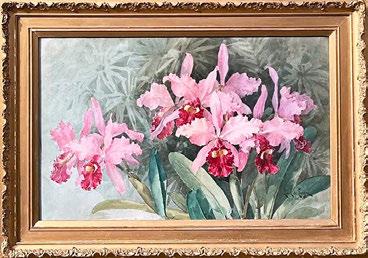

“Creation of Man” etched brass coffee table and art glass and artwork from Dale Chihuly. The sale overall came in with a total gross of $500,000 with an 80 percent sell-through rate. There were approximately 4,000 registered bidders on LiveAuctioneers and the same number on Invaluable. About 30-40 patrons were in-house and there were many absentee and phone bidders.
Day two’s focus was on Asian art, fine art, antiques and silver. A Japanese color wood cut by Chiura Obata (1885-1975) doubled its high estimate, finishing at $19,840. Titled “Passing Rain, High Sierra,” the woodcut, with signature and seal bottom right, was from the 1930 “World Landscape Series” based on Obata’s visit to Yosemite National Park. It came from a private California collection held by three generations since its original purchase. Obata was born in the Okayama prefecture of Japan and was adopted by his uncle, who was an artist. Trained in ink painting as a child, at 14 he became apprenticed to the painter Murata Tanryo in Tokyo. In 1903, Obata moved to San Francisco to work as an illustrator for The New World and The Japanese Ameri-
can. Much of his time in the 1920s was spent painting California landscapes, including Yosemite and the Sierra Nevada mountains.
Dramatic landscapes in another medium were represented by a photograph by Ansel Adams (American, 19021984). Selling for $13,440 was a large gelatin silver print that was signed and titled “Half Dome, Yosemite Valley.” There were newspaper articles and provenance details on the back; an accompanying envelope carried a 1995 appraisal. Overall the print measured 25½ by 31 inches.
Pink orchids filled the composition of a watercolor by Paul deLongpre (American/French, 1855-1911), dated 1898 and selling for $8,000. As one of America’s most important painters of flowers, DeLongpre is known for his delicate touch, feeling for color and horticultural understanding of flowers, all of which combined to result in the creation of exquisite watercolors. From a private California collection, the painting measured 22 by 31 inches.
James Swinnerton’s (American, 1875-1974) humorous oil on canvas Bohemian Club illustration titled “You Can’t Beat


Your Past” was bid to $7,360. It’s a cartoon of Harry Leon Wilson in the 1919 Grove Play “Life” for the Bohemian Club. Swinnerton, an artist, illustrator, cartoonist and master storyteller was a member — and later president — of the Bohemian Club, an exclusive men’s club in 1929. Since 1902 to the present day, a Grove Play is performed each year on the last weekend of the club’s summer encampment, featuring a musical theatrical production written and composed by club members.
José Chávez Morado (Mexican, 1909-2002) painted an oil on canvas titled “Dahzantes,” which depicted three women in the midst of dancing and playing instruments. It was exhibited in 1951 at the Museum of Modern Art in Mexico. Signed and dated lower right, the 23-by-27-inch painting changed hands at $6,400. Morado’s work is recognizable by his inclusion of geometric and lyrical elements. He gained the reputation for depicting women, especially indigenous women, vigorously moving instead of static portraiture.
Sculpture highlights included Francisco Zuniga’s (Mexican, 1912-1998) bronze “Yucateca,”



depicting a crouching nude woman, which was bid to $9,000. Signed on the foot, it measured 8½ by 8½ by 8½ inches. This came with a book showing various Zuniga artworks.
Pablo Picasso (1881-1973) was represented in the sale with a Madoura ceramic pitcher. Labeled on the underside, the white earthenware pitcher with cobalt decoration made $7,040.
Midcentury enthusiasts chased a Philip and Kelvin Laverne coffee table, the first lot across the block on the first day of the sale. The bronze coffee table, circa 1960s, bore an etched image of Michaelangelo’s “Creation of Man,” and was signed by the Lavernes. It sold for $6,400. Philip and Kelvin LaVerne were father and son artist-furniture makers, who made unique and limited edition pieces that combined functionality and display. The catalog noted that for advertisements that appeared in the 1960s, Philip penned the tagline: “It’s not just functional and not just art, it’s an investment.”
Two silver lots of note in the sale included a rare early 1800s gilt silver Irish Dublin

Kings pattern flatware service and a Frank Meisler (Israeli, 1929-2018) silver “Jerusalem” sphere. The Kings pattern service bore the royal coat of arms and a possibly Thomas Farnell makers mark “TF.”
Emblazoned with a royal crown on the reverse of the stem and a royal crest of a griffin above a lined bar, the 255-piece gold wash sterling flatware set in fitted mahogany canteen took $10,240, while
the mixed metal silver and gold overlay, large electrified Judaica sculpture as lantern, an artist proof, brought $4,480, greatly surpassing its estimate of $800-$1,200. The spherical sculpture, labeled “Jerusalem,” exhibited many levels and, with an internal light bulb ,evoked the 4,000-year-old city. Its upper and lower halves open and there are multiple small doors that can be opened along bot-
COOPERSTOWN, N.Y. — Fenimore Art Museum presents “Banksy: The Haight Street Rat” on view through September 8. Best known for creating art on street corners and on buildings unexpectedly, Banksy’s work expresses strong political and social statements and is believed to be a driving force behind the street art movement.
When politically charged murals tagged “Banksy” popped up on the façades of British buildings in the late 1990s, the overwhelming question was, “Who?” Since then, the street artist known only as Banksy has left their mark in places like London, New York City and Los Angeles.
Satirical and darkly humorous, the British artist’s work, often pointing out humanity’s shortcomings, is created on the sides of walls, bridges and streets. Using stencil-style graffiti, Bansky works quickly and disappears before the public or the police notice their presence and possibly press charges. The work can have a precarious existence, vacillating between removal by property owners and protection by appreciative fans.
Banksy’s first public work of
art, “Mild Mild West,” was completed in 1998 on an abandoned warehouse in Bristol, England, and was a response to the police violence against partygoers at unlicensed raves. Subsequent work has appeared around the globe. Bansky’s work remains politically outspoken and antiwar, and the artist has amassed a following of supporters who are always on the lookout for Ban-
sky’s next surface to convey a message.
During Banksy’s 2010 painting spree in San Francisco, the “Haight Street Rat” appeared on two walls of The Red Victorian hotel. On one wall, a rat wearing a cap similar to the beret worn by Cuban revolutionary Che Guevara holds a red marker used to draw a line to the other side of the building and write the words

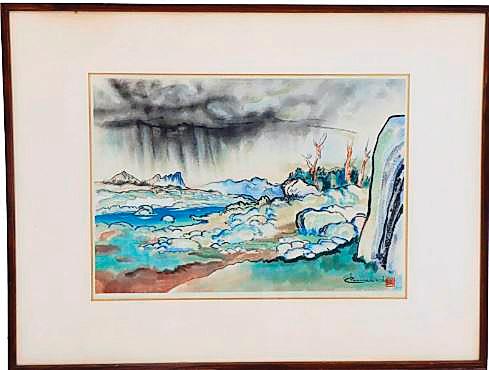

tom half of sphere, some with hinged doors to reveal diminutive architectural elements. It was won by a bidder on LiveAuctioneers.
Prices given include the buyer’s premium as stated by the auction house. The next sale, featuring jewelry and fine art, is August 24-25. For information, www.sarasotaestateauction.com or 941-359-8700.
“This is where I draw the line.” Through the activist rat, Banksy used their powerful voice to criticize Haight Street’s clothing stores that allegedly sold items depicting work from local artists without providing reimbursement.
As with many examples of street art, the rat and its message were meant to be painted over after Banksy completed it. However, art collector Brian Greif paid to have the work removed from the building and the hotel wall repaired. To conserve the image, a work crew had to cut and remove 12 cedar boards and then replace the planks. Greif believes that street art should be accessible to everyone, and that removing the Banksy from its original location does not hinder the piece’s original intention but increases its visibility.
Greif’s efforts are detailed in the 2017 documentary “Saving Banksy,” which questions the ethical grounds of removing street art for the benefit of sharing it with a wider audience.
Fenimore Art Museum is at 5798 State Highway 80. For information, 607-547-1400 or www.fenimoreartmuseum.org.

Continuous Events
Every Sunday Year-Round
75-100 EXHIBITORS
2 Wedgewood Drive
Slater Mill Mall
Jewett City, CT
Sun 9 am-4 pm
Manager: Bob & Sue Leone
860-376-3935 or 860-642-6248 Website: www.leoneauctioneers.com
January 14-December 22
July 4
Thursday
THE TIVERTON 4-CORNERS 4th OF JULY ANTIQUES & ARTISAN SHOW
40+ EXHIBITORS
On The Grounds Of The Meeting House
3852 Main Road
Tiverton, RI 02878
Thurs 9 am-4 pm
Manager: Ted Biszko
774-526-0829
Email: twb452@hotmail.com
July 6 Saturday
50 EXHIBITORS
Granite Town Plaza 185 Elm Street
Milford, NH
Sun Early Buying: 6:30-8:30 am - $40
8:30-9:30 am - $5
9:30 am-Noon – Admission Free
Manager: Deb Lerner & Rick Martin
603-506-9848
Website: www.granitestateantiqueshows.com
April 3-October 30 Wednesdays
60-130 EXHIBITORS
34 Quaker Meeting House Road
Sandwich, MA
Wed 6 am-12 pm
Sponsor: Lisa Davis
Manager: Lisa Davis
508-685-2767
Website: www.thesandwichbazaar.com
April 21-October 27
July 9
Tuesday LIVE
DEALER’S CHOICE ANTIQUE SHOWS
400 EXHIBITORS
Route 20
Brimfield, MA 01010
Tues Opens at 11 am
Manager: BAC Management
508-347-3929 Website: www.dealerschoiceshows.com
July 10-14
Wednesday-Sunday
37 Palmer Road
Brimfield, MA 01010
Opens Wednesday 9 am
Manager: Pam Moriarty
413-245-9556
Email: info@brimfield-hotm.com Website: www.brimfield-hotm.com
25-50 EXHIBITORS
34 Quaker Meeting House Road
Sandwich, MA
Sun 7 am - Noon
Sponsor: Lisa Davis
Manager: Lisa Davis
508-685-2767
Website: www.thesandwichbazaar.com
ANTIQUE SHOW & FLEA MARKET
OVER 400 EXHIBITORS
Stormville Airport
428 Route 216
Stormville, NY 12582
Sat 8 am-4 pm
845-221-6561
Website: www.stormvilleairportfleamarket.com
July 7
Sunday
Rain Date July 14
ALAMEDA POINT ANTIQUES FAIRE
800 VENDORS
3900 Main Street
Alameda, CA 94501
Sun 6 am-3 pm
Antiques By The Bay, Inc
Owner: Allen Michaan
Manager: Randie Bradley
510-522-7500 ext 3101
Website: www.alamedapointantiquesfaire.com
July 10-14
Wednesday-Sunday
NEW ENGLAND MOTEL & ANTIQUE SHOWS
400 BOOTHS 30 Palmer Road Route 20
Brimfield, MA 01010
Opens Wed 6 am-5 pm & Daily Thurs-Sun 8 am- 5 pm
Managers: Les, Josh & Adam Skowyra 508-347-2179; showtime 508-808-2023 Website: www.antiques-brimfield.com
July 11-13
Thursday-Saturday
MAY’S ANTIQUE MARKET
10 Palmer Road (Route 20)
Brimfield, MA 01010
Opening Day Thurs 9 am-7 pm
Fri & Sat 7 am-7 pm
Manager: Martha May 413-245-9271 Website: www.maysbrimfield.com
July 11-14
Thursday-Sunday LIVE
America’s Favorite Treasure Hunts!
3,500 BOOTHS!
Atlanta Expo Centers
3650 & 3850 Jonesboro Road SE
Atlanta, GA 30354
Thurs 10:45 am-6 pm, Fri & Sat 9 am-6 pm & Sun 10 am-4 pm
740-569-2800
Website: www.scottantiquemarkets.com
July 12-14
Friday-Sunday LIVE
& DESIGN SHOW
45 EXHIBITORS
Mulford Farm
10 James Lane
East Hampton, NY
Preview: Cocktail Party: Fri, July 12, 6-8 pm
Reg Hours: Sat 10 am-6 pm & Sun 10 am-5 pm
Sponsor: To Benefit East Hampton Historical Society
Manager: Green Tree Events
Website: www.easthamptonantiquesshow.com
July 27-28
Saturday & Sunday LIVE
600+ BOOTHS
Dulles Expo Center
4320 Chantilly Shopping Center
Chantilly, VA 20151
Sat 9 am-6 pm & Sun 11 am-5 pm
Manager: D’Amore Promotions
757-430-4735
Website: www.thebigfleamarket.com
August
August 4
Sunday Rain Date August 11
ALAMEDA POINT
ANTIQUES FAIRE
800 VENDORS
3900 Main Street
Alameda, CA 94501
Sun 6 am-3 pm
Antiques By The Bay, Inc
Owner: Allen Michaan
Manager: Randie Bradley
510-522-7500 ext 3101
Website: www.alamedapointantiquesfaire.com
August 8-11
Thursday-Sunday LIVE
America’s Favorite
Treasure Hunts!
3,500 BOOTHS!
Atlanta Expo Centers
3650 & 3850 Jonesboro Road SE
Atlanta, GA 30354
Thurs 10:45 am-6 pm, Fri & Sat 9 am-6 pm & Sun 10 am-4 pm
740-569-2800
Website: www.scottantiquemarkets.com
August 12-18 Monday-Sunday
ANTIQUE WEEK
Celebrating Over 50 Years Of Antiquing
Town Wide Event
Bouckville, NY 13310
Mon-Sun 8 am-5 pm
Website: www.madison-bouckville.com
August 24
XL Center
One Civic Center Plaza
Hartford, CT 06103
Sat 10 am-4 pm
Manager: Hillcrest Promotions, LLC
860-280-8339
Website: www.papermaniaplus.com
August 24-25
Saturday & Sunday LIVE
WARREN COUNTY ANTIQUES SHOW
100+ EXHIBITORS
Warren County Fairgrounds 871 County Road 519
Harmony Township
Phillipsburg, NJ 08865
Sat & Sun 10 am-4 pm
Manager: Melva Sterlacci & Chris Beatty 908-343-5873
Website: www.warrencountyantiqueshow.com
August 31-September 1
Saturday & Sunday
AIRPORT ANTIQUE SHOW & FLEA MARKET
OVER 400 EXHIBITORS
Stormville Airport
428 Route 216
Stormville, NY 12582
Sat & Sun 8 am-4 pm
845-221-6561
Website: www.stormvilleairportfleamarket.com
To advertise your event please contact Cindie at 203-426-8036 or cindie@thebee.com
Calendar of Live & Virtual Antiques Shows and Flea Markets
COLUMBIA, S.C. — The Columbia Museum of Art (CMA) presents “(Un)Settled: The Landscape in American Art,” a collaborative exhibition that explores the rich, complicated and evolving topic of the American landscape, from its origins in Nineteenth Century painting to the present. The CMA is one of four participating museums in the Art Bridges Cohort Program’s American South Consortium, the institutional partnership responsible for this exhibition. “(Un)Settled” runs to September 8.
“In collaboration with three nationally acclaimed museum partners through the Art Bridges Cohort Program, this show brings together selections of American art and material culture that beautifully reflect upon and respond to both natural and manmade moments, providing visitors with a rich experience,” said CMA executive director Della Watkins. “I highly recommend visiting to enjoy the views!”
This multidisciplinary show features more than 60 works of art in conversation across time and space, foregrounding multiple historic and cultural perspectives on landscape as a hallmark of national identity.
“(Un)Settled” is presented in
WASHINGTON DC — The oceans are essential to life. Covering more than 70 percent of Earth, they have remained an object of fascination, both treasured and feared, throughout history. Humanity has benefited from the rich and diverse fauna, flora and resources the oceans provide, continually tak-
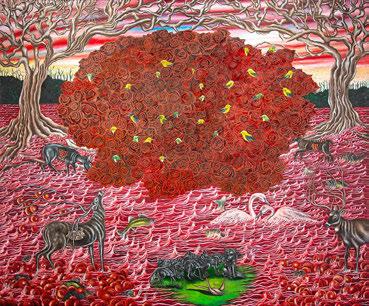
thematic sections, each presenting historic artworks in conversation with modern and contemporary examples. The variety of media and makers throughout the exhibition contribute to a more inclusive conversation about the American landscape and its evolving relationship to a concept of
national identity. To tell a more comprehensive history, the curatorial selection recognizes the voices of Indigenous artists, women and artists of color.
By bringing together objects made over the course of 200 years, “(Un)Settled” highlights shifting attitudes toward landscape’s relevance and reso-
nance in American art. The unsettling concept is multifaceted and recognizes the ongoing conversations centered on the landscape as an enduring cultural and historic touchpoint. A throughline of environmental awareness, for example, emerges between Thomas Cole’s “View of the White Mountains” (1827) and Jacqueline Bishop’s electrifying painting “After the Rain (Methane)” (2014-15). Similarly, contemporary artist Tom McGrath cites Albert Bierstadt’s romanticized topographical views of the American West as inspiration for his panoramic representation of the gridded traffic patterns in downtown Los Angeles.
The juxtaposition of a traditional Nineteenth Century Coast Salish basket with a contemporary response by glass artist Dan Friday (Lummi Nation, Coast Salish) brings to light the strength of tradition and memory sustained over generations.
William Christenberry’s photographs record specific places, primarily in the western part of his home state of Alabama, and reflect upon memory, transformation and physical change wrought by time on landscape and built environ-
ing from these bodies of water for our gain. “Fragile Beauty: Art of the Ocean,” presented by Hillwood Estate, Museum & Gardens until January 5, will explore the art of the ocean throughout the museum’s collection, from representations of the ocean to pieces created with its precious materials, while

The Bee Publishing Company is seeking a person for approximately 35-40 hours weekly for an in-house copy editor position with Antiques and The Arts Weekly.
The ideal candidate will have experience with Word, InCopy, Constant Contact, Wordpress, NY Times style, is a quick learner and can multi-task efficiently. Attention to detail is critical. Interest in antiques and museums is a plus.
Send letter & resume to: sherri@thebee.com
contrasting such works with contemporary art. This special exhibition will demonstrate the beauty of and admiration for these magnificent waters while raising the question of how to balance its preservation for future generations.
“Fragile Beauty” is a celebration of the ocean, showcasing Hillwood’s wide variety of marine-related art for the first time. The exhibition was inspired originally by a rediscovered artwork titled “Treasures of the Sea,” a 1900 copy after the renowned 1870 masterpiece by Austrian painter Hans Makart (1840-1884), one of the largest paintings at Hillwood and once owned by Marjorie Post’s father, C.W. Post. The piece depicts several allegorical figures among the rich background of the sea. Alongside this painting — and additional seascapes — will be objects made of rare and precious materials, including coral, pearl, tortoiseshell and ivory, highlighting the beauty of these resources, many of which have been overexploited by humans. Lastly, “Fragile Beauty” will
ment. Similarly, Jeanne Moutoussamy-Ashe’s portraits of the Gullah Geechee on Daufuskie Island address cultural heritage and, in the artists’ words, “keep for the eyes of history the way Daufuskie was.”
“From the local scenery to national parks, the individual to the communal, our cultural values and beliefs can be shaped by our surroundings,” said Erin Monroe, Krieble curator of American paintings and sculpture at the Wadsworth Atheneum Museum of Art. “‘(Un)Settled’ strives to explore ideas that are topical and relevant to today’s audiences such as land use and preservation, environmental impact, politicization of borders and the rise and decline of structures.”
For the CMA’s presentation of this unique traveling exhibition, the museum included a selection of recently conserved prints, drawings and watercolors by the Charleston Renaissance artist Anna Heyward Taylor, whose work engages the topic of landscape in South Carolina and abroad.
The Columbia Museum of Art is at 1515 Main Street. For information, 803-799-2810 or www.columbiamuseum.org.

(American, born Serbia, 1911-1995), seascape (detail), second half Twentieth Century, oil on canvas, 51.124.
survey the use of sea-inspired creatures, shapes and forms, such as mermaids and seashells, both in usable objects and in art.
A selection of contemporary pieces, by artists, including Morel Doucet, Courtney Mattison and Theo Mercier, and designer Christian Louboutin, will be interspersed with Hillwood’s historic pieces, demonstrating how the sea continues to serve as a source of inspiration and the dire need for sustainability for its survival. Mat-
tison, an artist and ocean advocate, creates sculptural works that “visualize climate change through the fragile beauty of marine life.” Similarly, this exhibition will present the splendor of the sea at a time when the ocean is in danger, highlighting how sustainability is more important than ever.
Hillwood Estate, Museum & Gardens is at 4155 Linnean Avenue Northwest. For more information, 202-686-5807 or www.hillwoodmuseum.org.
‘What’s On The Menu’ At The Wolfsonian
MIAMI BEACH, FLA. —
“What’s On The Menu: Destination Dining” is on view at The Wolfsonian–Florida International University through September 29.
Leisure dining flourished from the 1920s onward, not only on land, but also at sea and in the air, a result of rising incomes among an increasingly urban and mobile population. Restaurants in popular tourist destinations and in the trains,
ships and airplanes that carried travelers seized on advances in printing, designing an array of souvenirs and other cheaply produced takeaways touting exclusivity, ethnic cuisine or a view of exciting corners of the world. “What’s on the Menu: Destination Dining” explores such ephemera, including decorative menus and other items from ocean liner restaurants, railroad dining cars, inflight dinner services and
hotels and eateries in cities like New York, New Orleans and Miami Beach.
This installation is inspired by a recent promised gift from Vicki Gold Levi and presented in connection with “What’s on the Menu: Dinner and a Show,” which ran from February 21 to May 26 of this year.
The Wolfsonian–FIU is at 1001 Washington Avenue. For information, 305-531-1001 or www.wolfsonian.org.


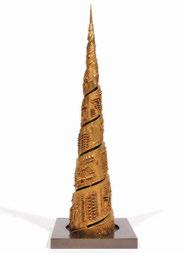




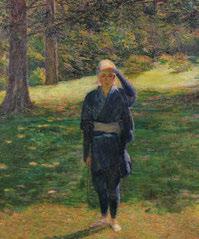

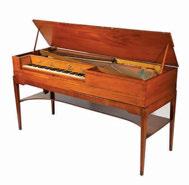


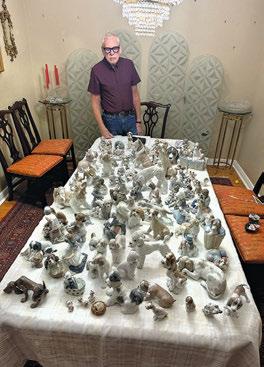





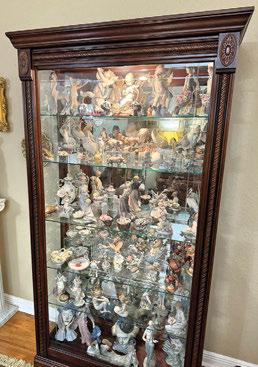






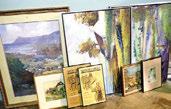





























Preview for both auctions at our Gallery in Epping, NH, Thursday, July 11th - Saturday, July 13th. Scan QR code to visit us at MoisanAuctions.com for additional information.
SUNDAY, JULY 14TH @ 1:00 PM Hosted at









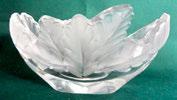

Auctioneer’s Note: This onlineonly, timed auction will include approximately 500 lots from estates in South Hamilton & Hubbardston, MA as well as other New England homes.
first lot closes Sunday, July 14th @ 1:00 PM.
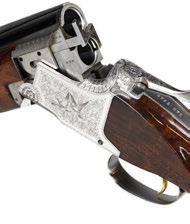


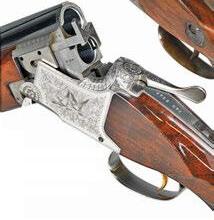








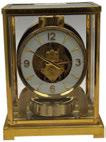
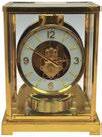
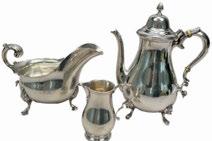




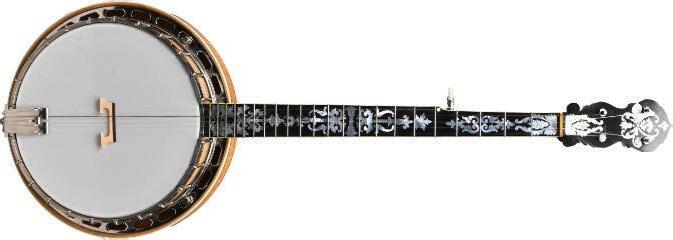



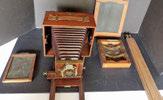





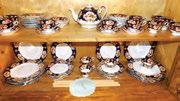

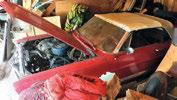




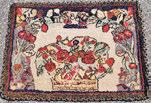
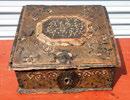
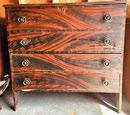


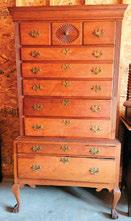





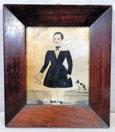










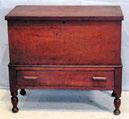












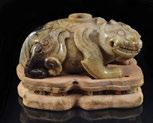




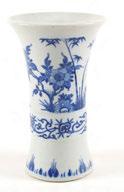














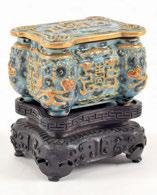


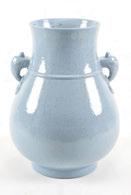



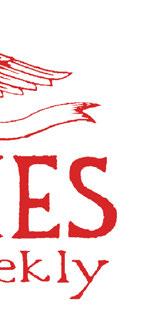

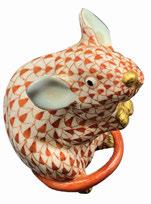
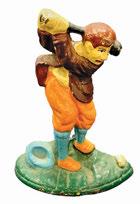

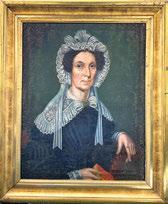

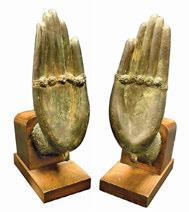
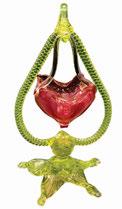




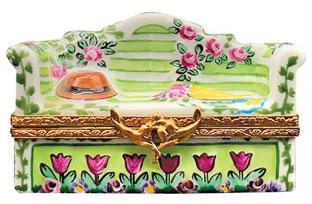





SUNDAY JUNE 30 | 10 am est
In House Previews: Thursday, June 27 – Saturday, June 29 | 12–6pm est
Internet Bidding: Invaluable & Liveauctioneers | Phone & Absentee Bidding Are Welcome!



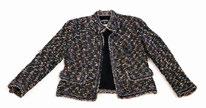





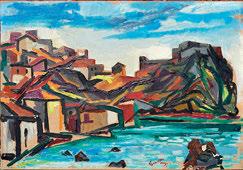

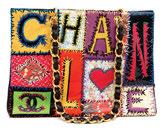
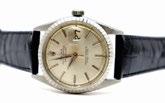
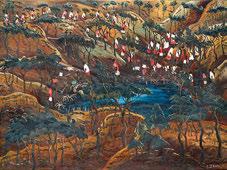
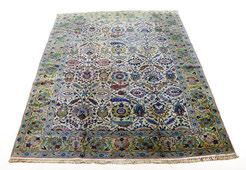
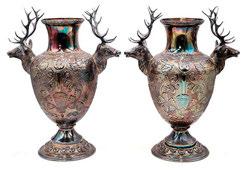

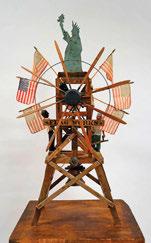




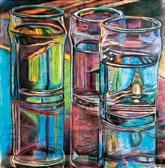

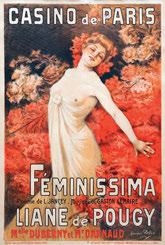
Nadeau’s Auction Gallery is currently accepting high-quality consignments for our upcoming sales.
High End Sneaker and Couture Sale, highlighting a stunning array of 400+ pairs of sneakers, couture fashion, and handbags, with standout items from iconic brands such as Hermes and Judith Leiber. Our offerings will also include a selection of over 100 lots of exquisite Hermes silk scarves.


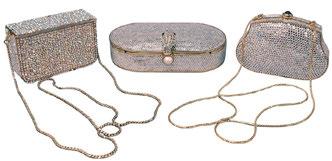
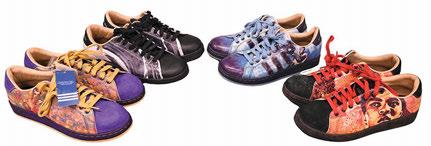

Book Sale, featuring the esteemed Kennedy Galleries Collection Reference catalogs, rare books, and a private collection of oriental rugs and textile books. We welcome single lots valued at $200 or nice sets valued at $300 or more for consignments.
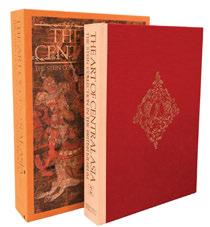
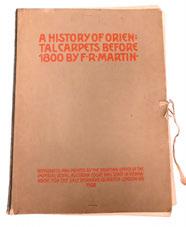
Pop and Modern Art Sale, featuring over 100 figures including sought-after pieces by Kaws and Supreme, as well as an impressive collection of 100 pieces of Pop Art.




